NOMADIC PNEUMATICS
Architecture that moves with you
Amanda Choi
Nomadic Pneumatics
B.Arch Thesis Spring 2025
Amanda Choi
Advisors: Ekin Erar + Martin Miller
Cornell University
May 2025
© 2025 by Amanda Choi
All Rights Reserved.
Printed in the United States of America.
No part of this publication may be reproduced, stored, or transmitted without permission, except for brief excerpts used for academic or critical purposes.
Acknowledgements:
To the ones who made room for my wild ideas, and stayed long enough to see them take shape—thank you.
To my brilliant and inspiring advisors, Ekin and Martin, who pushed me to think harder, design better, and stay grounded through it all—thank you. It has been an honor to learn from you. Your intelligence, insight, and belief in my work gave it structure and strength.
To my incredible thesis helper, Lillian Casazza, who cared for every seam as if it were her own and matched my passion at every turn—your presence, skill, and energy made all the difference.
Pressure is a privilege, and I’m proud to have been challenged and uplifted by a community of architects, educators, students, friends, and family who continue to shape the way I see, think, design, and build.
chapter one-
PROBLEM + OPPORTUNITY
Inflatable architecture has long been dismissed as temporary, inefficient, and wasteful, often requiring continuous air input to maintain form.
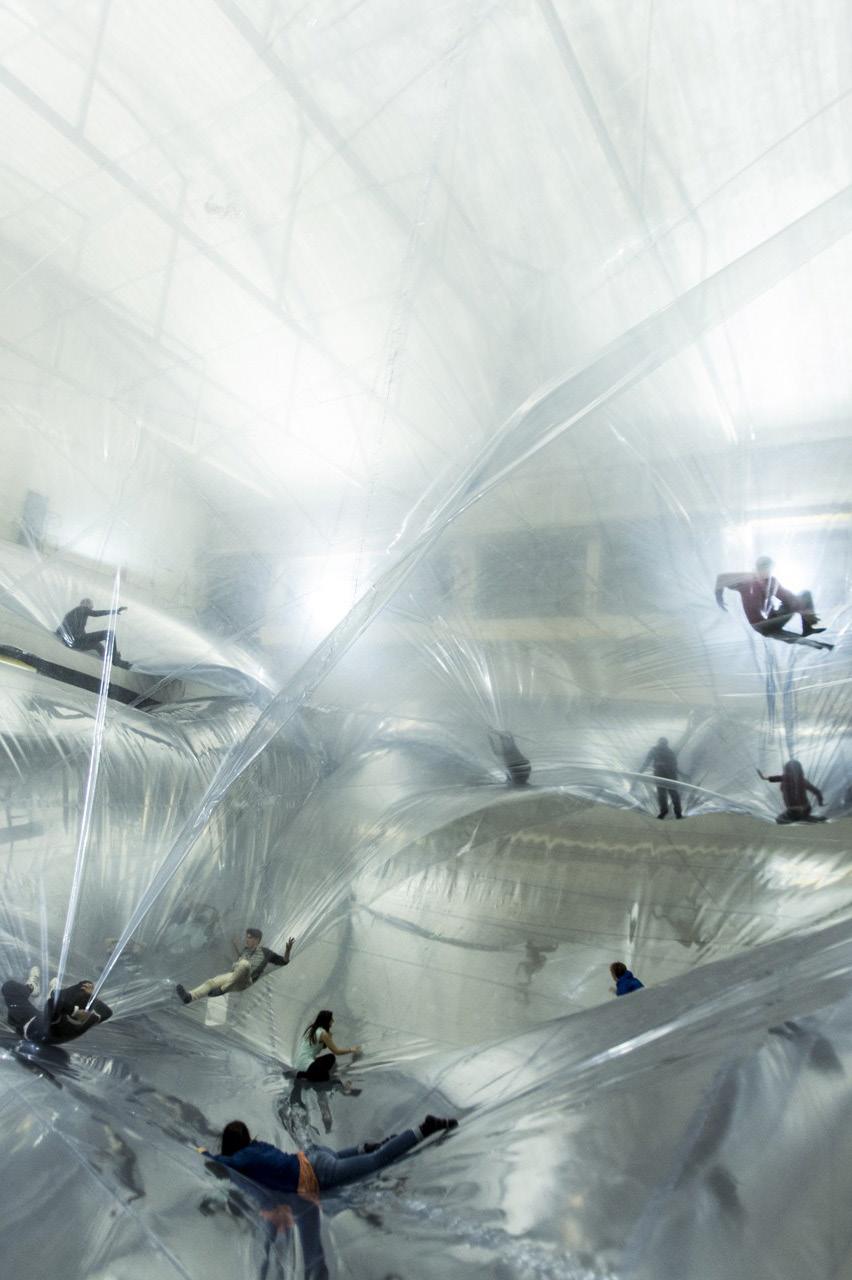
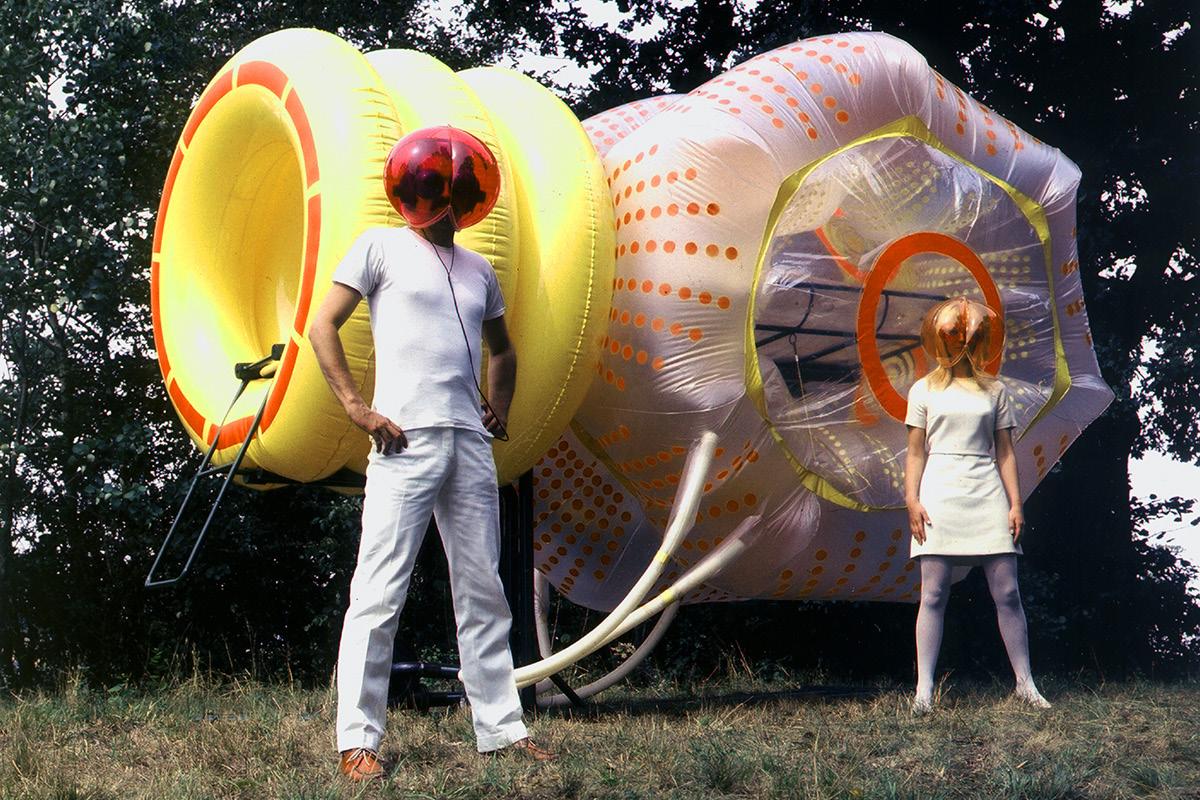
Nomadic Pneumatics challenges these limitations by proposing a shift toward pneumatic architecture — a system where pressurized inner tubes create durable, mobile, and reusable structures without constant inflation.
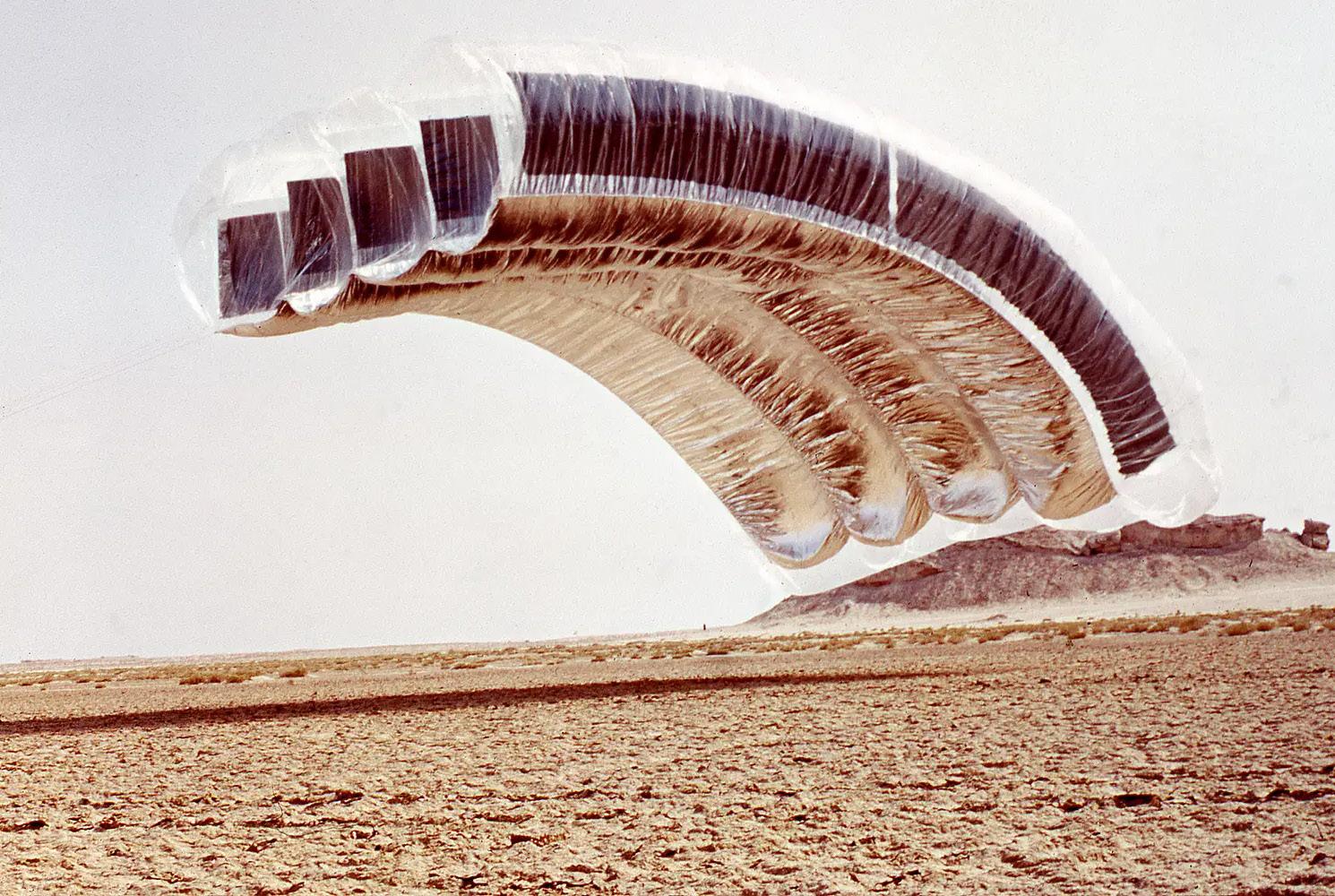
By drawing from industrial pneumatics in transportation, aerospace, and safety systems, this research investigates how pneumatic structures can store and redistribute pressure to form self-supporting, lightweight, and deployable architectural solutions.

By exploring air pressure as a structural force, this thesis examines how pneumatic systems— capable of holding high PSI, like tires, airbags, and hydraulic bladders—can be reconfigured to create scalable, adaptable enclosures.
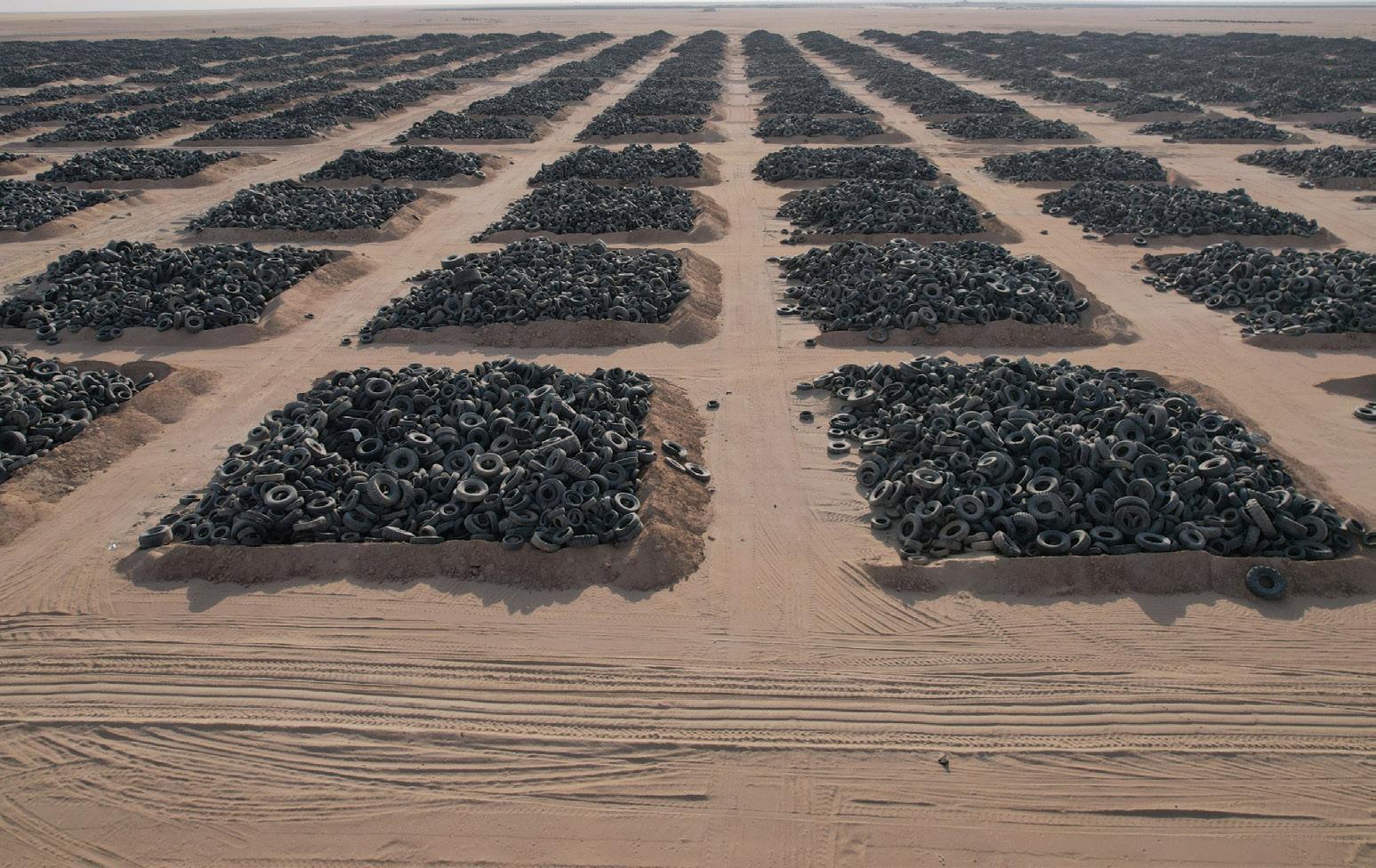

Author: Michael Webb | Archigram
Year: 1967
Function: Individual Housing
Unlike site-specific, rigid materials such as concrete or timber, pneumatics offer ease of transportation, rapid deployment, and dynamic flexibility, making them ideal for mobile and nomadic architecture.
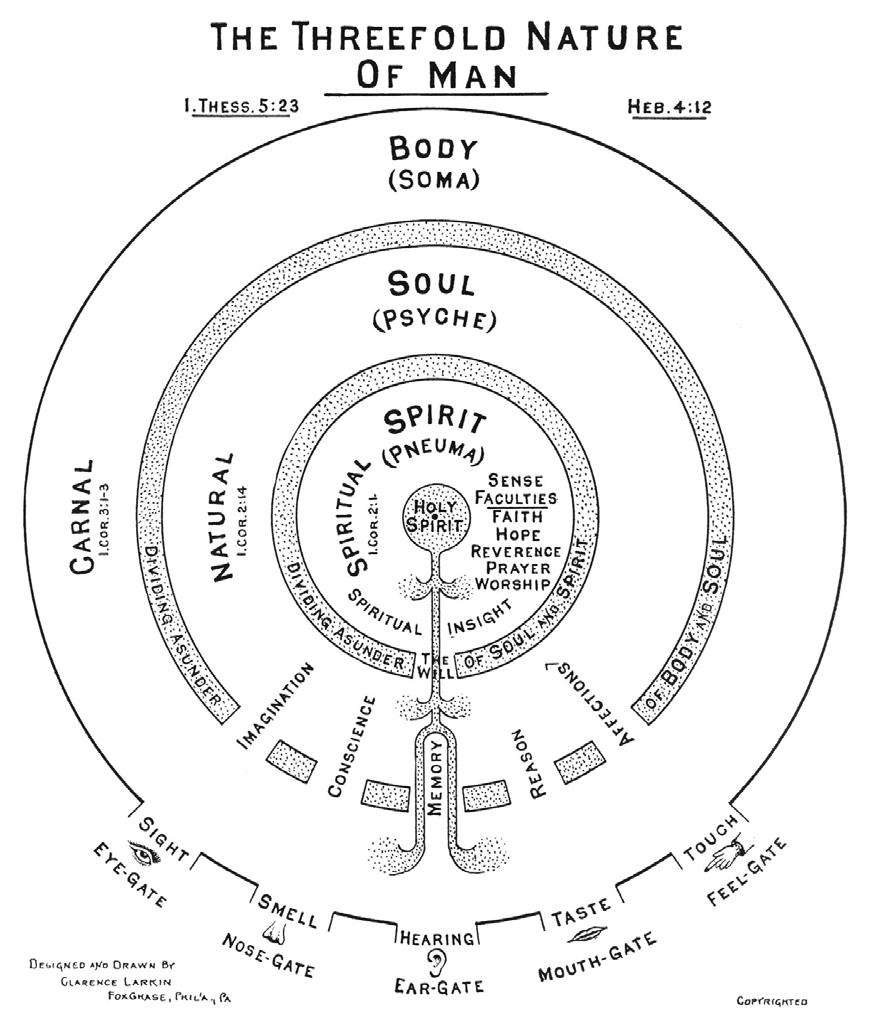
The word pneumatic is derived from Greek word “pneuma” meaning “breath” or “air in motion”. It can also be translated as “spirit” in a religious context.
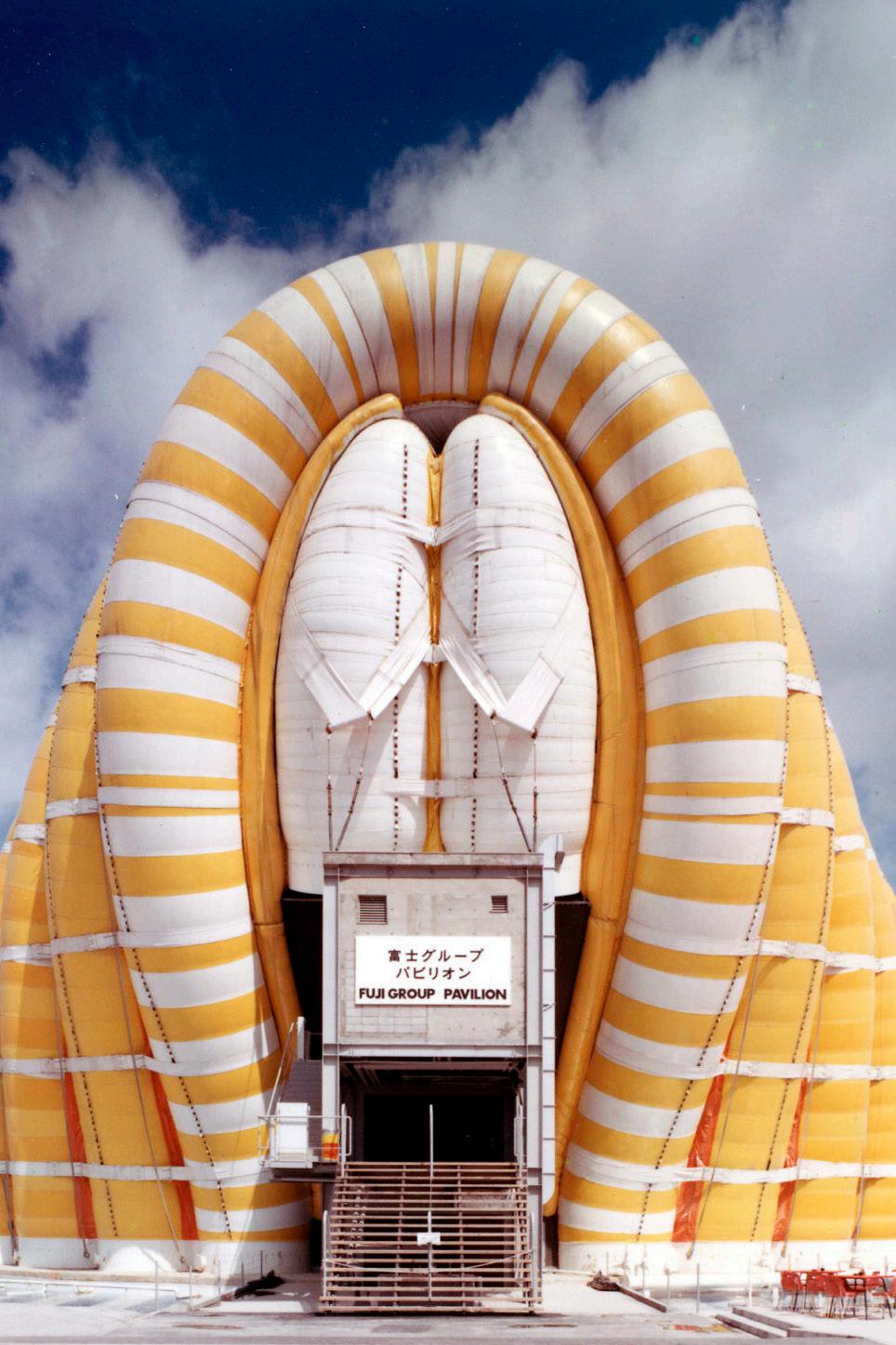
Pneumatic Architecture
a building design that uses compressed air to support a flexible membrane. This creates lightweight, energy-efficient structures.
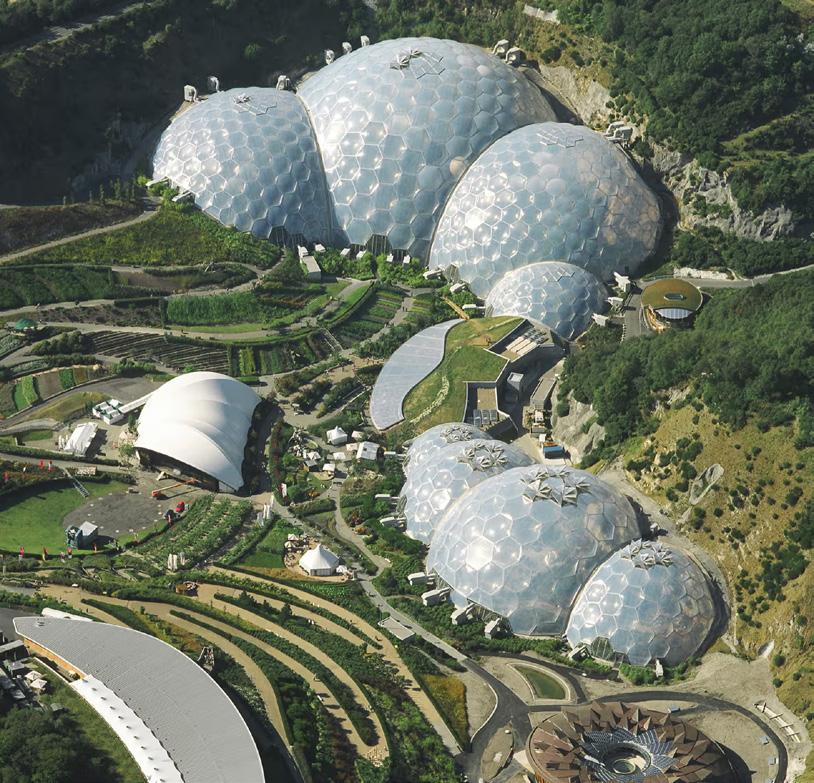
The Eden Project: supposedly the air inside is actually heavier than the structure itself
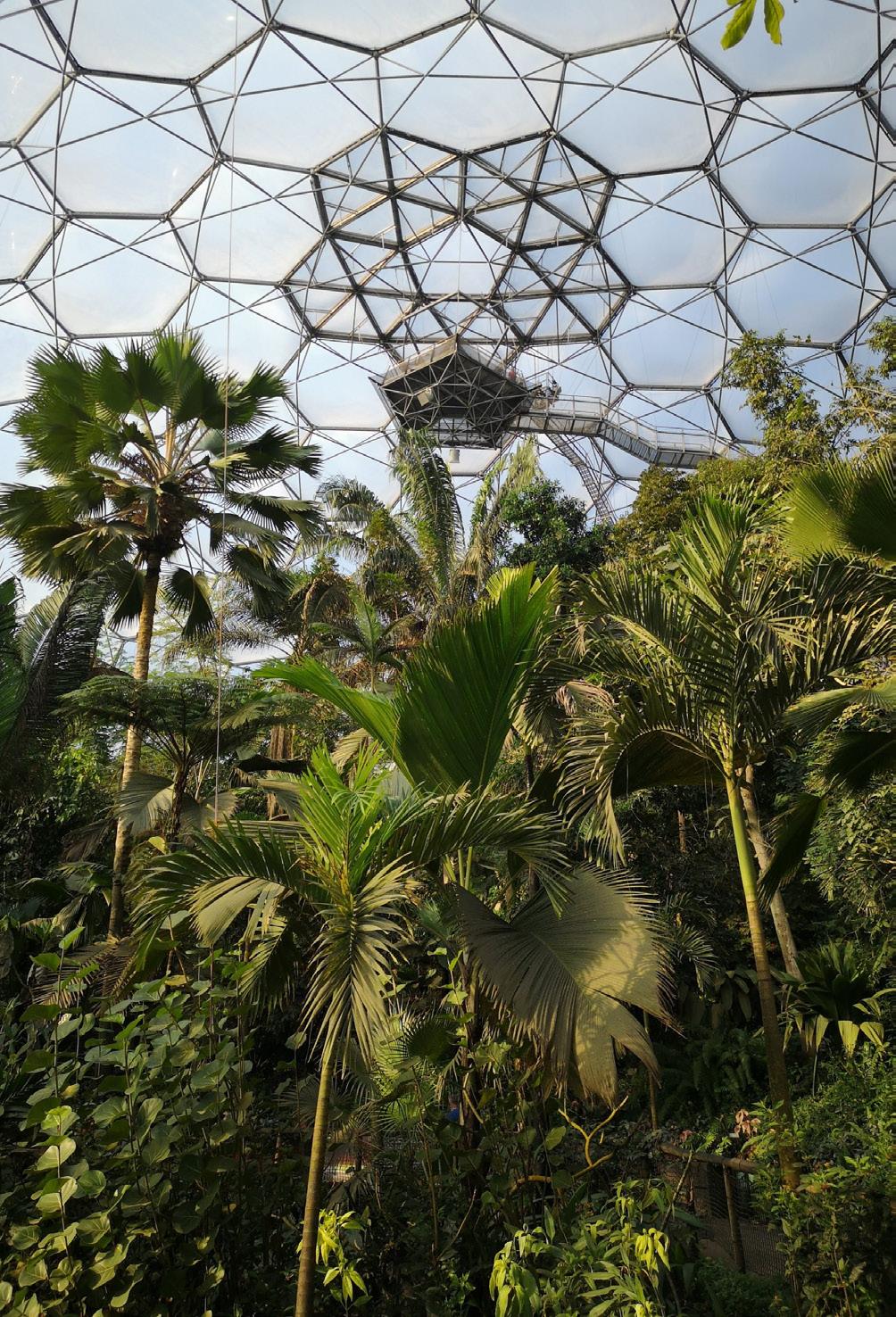
tire they are not that much different.
Pneumatics quietly power many of the ways we move through the world.


a range of vehicles and devices—across land, sea, and air—that rely on pneumatic systems to operate, stabilize, or transport.
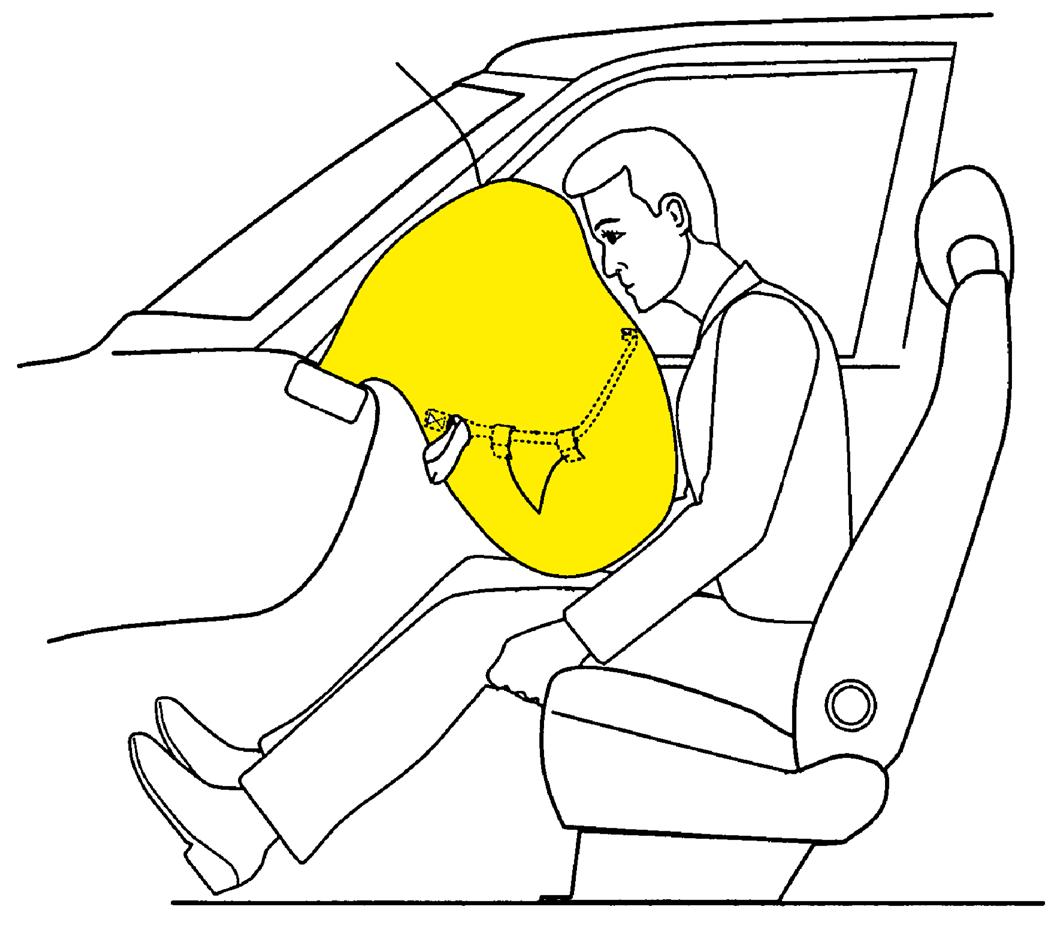
Pneumatics are all around us, intently built into the ways we move and stay safe
Their ability to store, release, and shape air on demand makes pneumatics an essential, invisible layer of safety we trust with our lives every day



Pneumatic structures offer unique advantages for temporary and mobile applications.
Lightweight and compact when deflated, they can be easily transported, rapidly deployed, and quickly adapted to different needs.
Standard Dimensions
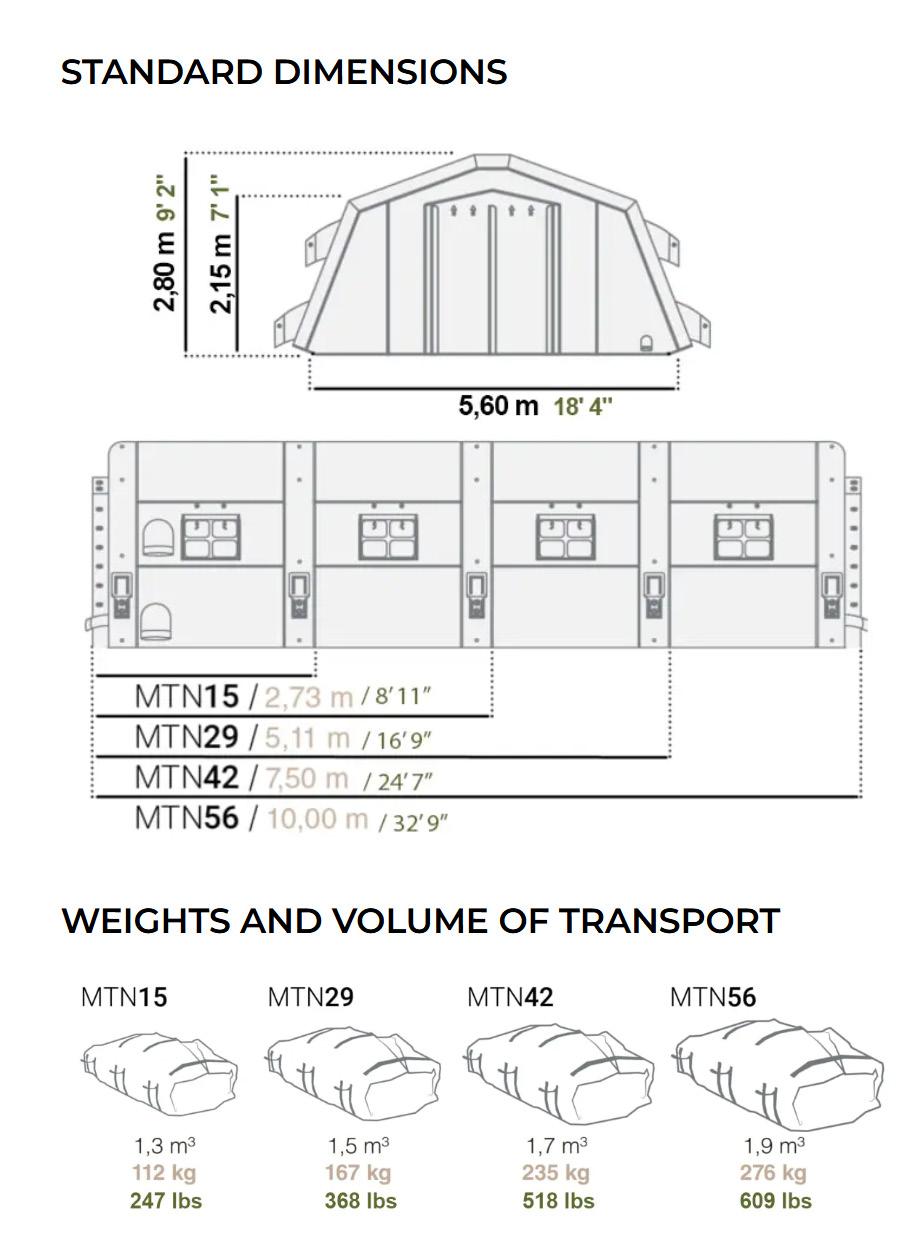
Weights and Volume of Transport
In disaster relief, pneumatic shelters provide immediate, life-saving protection. In refugee camps, they offer flexible housing solutions that can move and grow with shifting populations.
Though they may seem ordinary, these materials are the products of highly engineered, industrial fabrication processes.
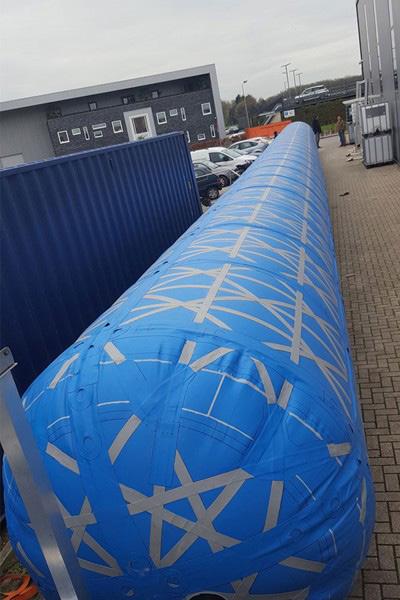
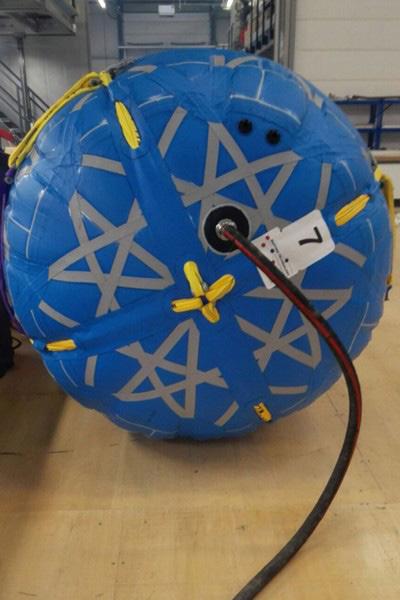
Containing air, nonetheless, is not easy.



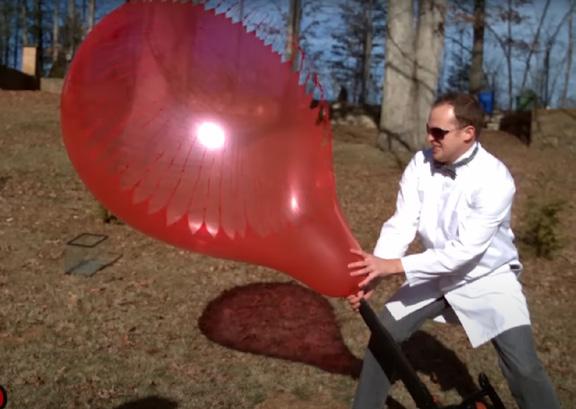

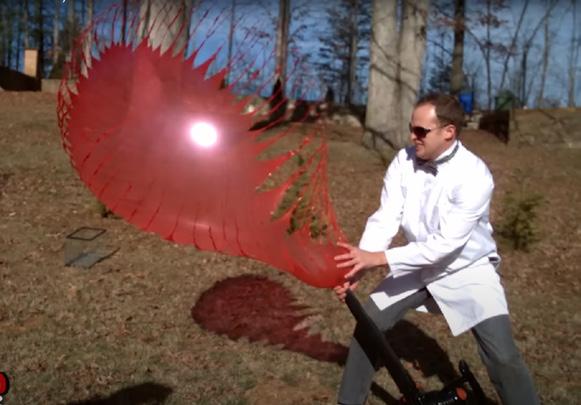
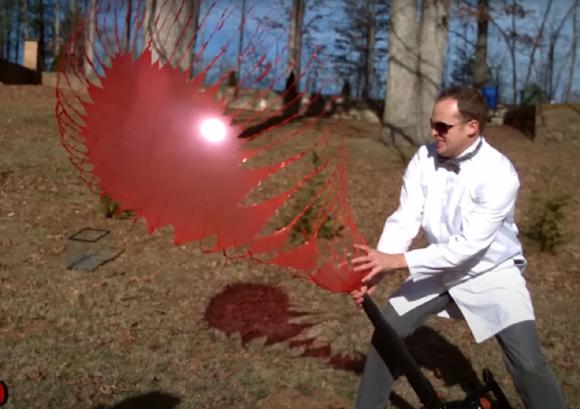
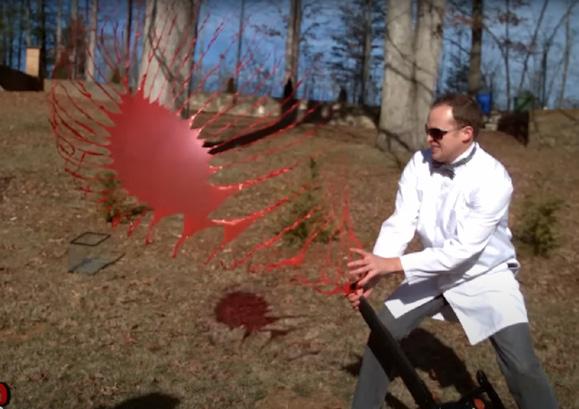

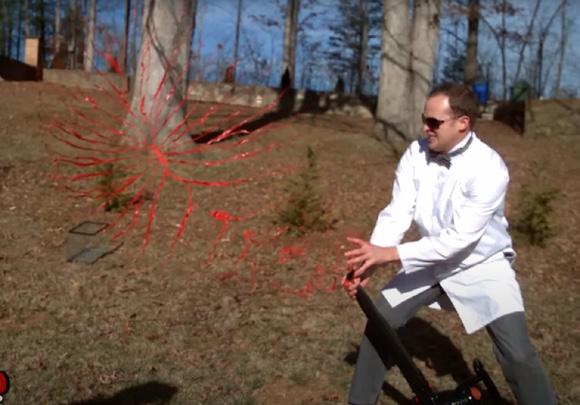
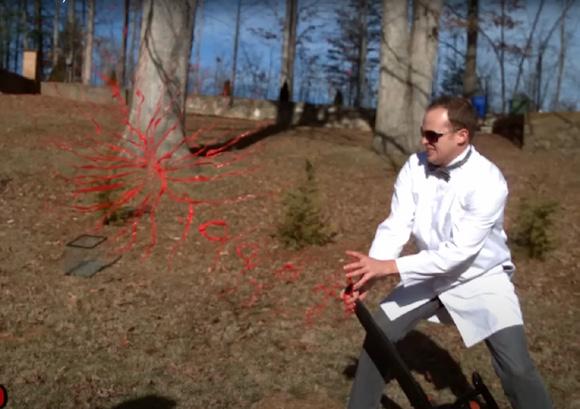
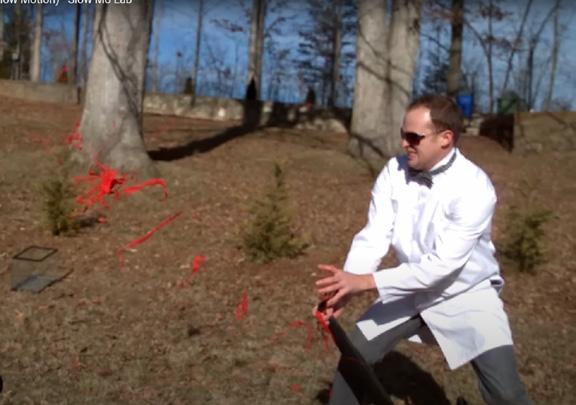

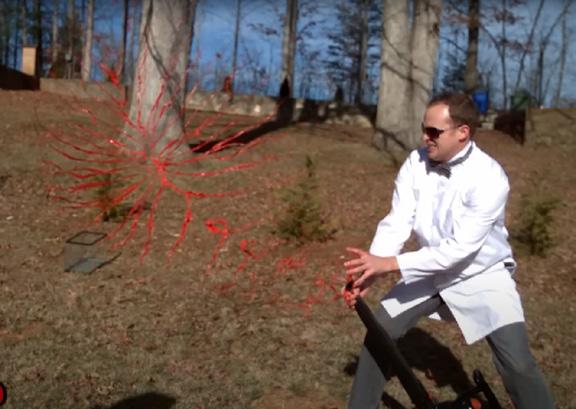
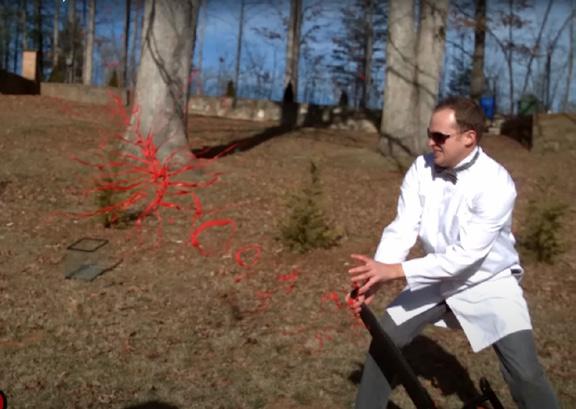
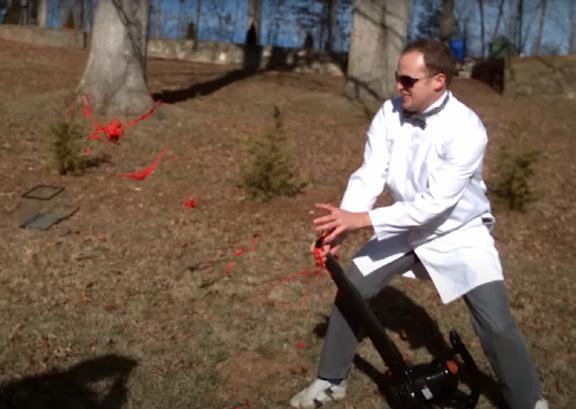
“How can pneumatics reframe inflatable architecture as a scalable,serious,and deployable design system?”
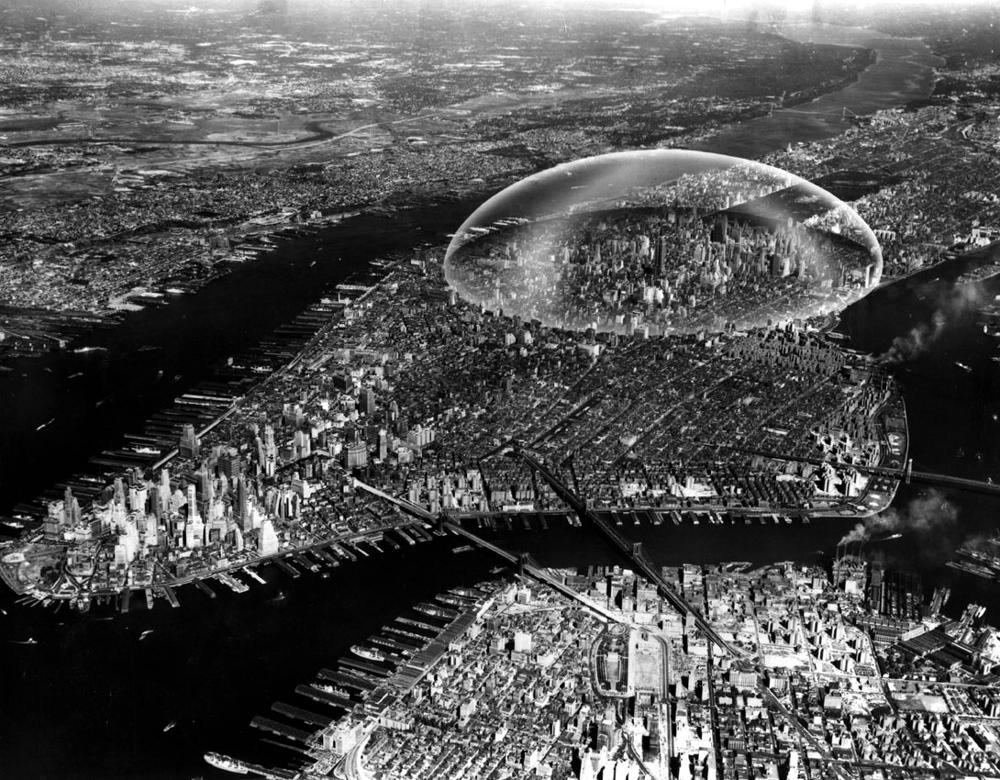

chapter two-
WHY MATICS?PNEU-


there is no maximum span as determined by strength, elasticity, specific weight as with other materials

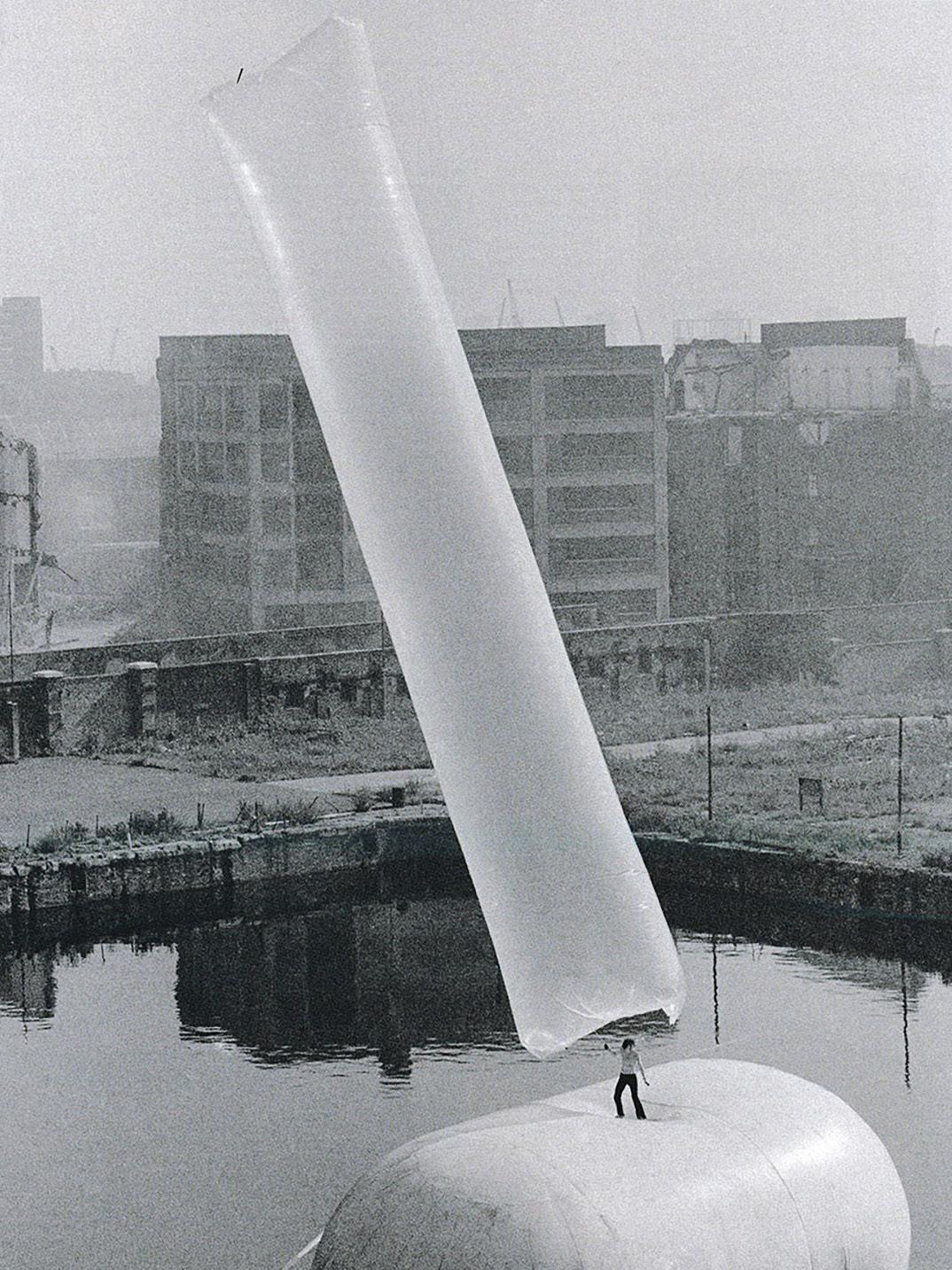
they can span great lengths
Pneumatics use significantly less material than traditional construction,
The amount of CO2 emissions from steel manufacturing is almost double the amount of steel created: 1.85 tonnes of carbon per 1 tonne of steel. If steel were a nation, it would be the 5th largest producer of carbon emissions in the world!
ultimately lowering construction time and cost
pneumatic structures can be constructed faster and at a lower cost than traditional buildings
they are lighter than traditional building materials so less energy needed to transport
and they require less material to make which means reduced costs
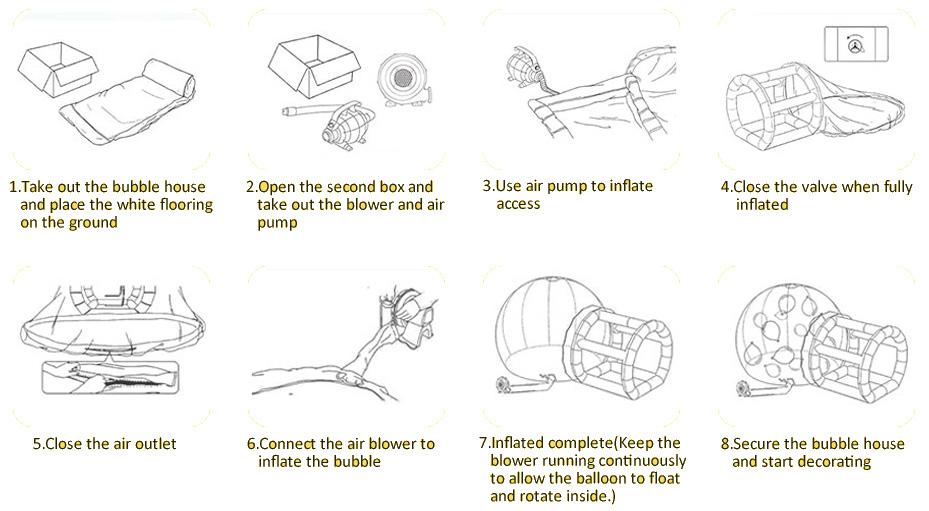
inflatable elements can be disassembled, transported, and repurposed.
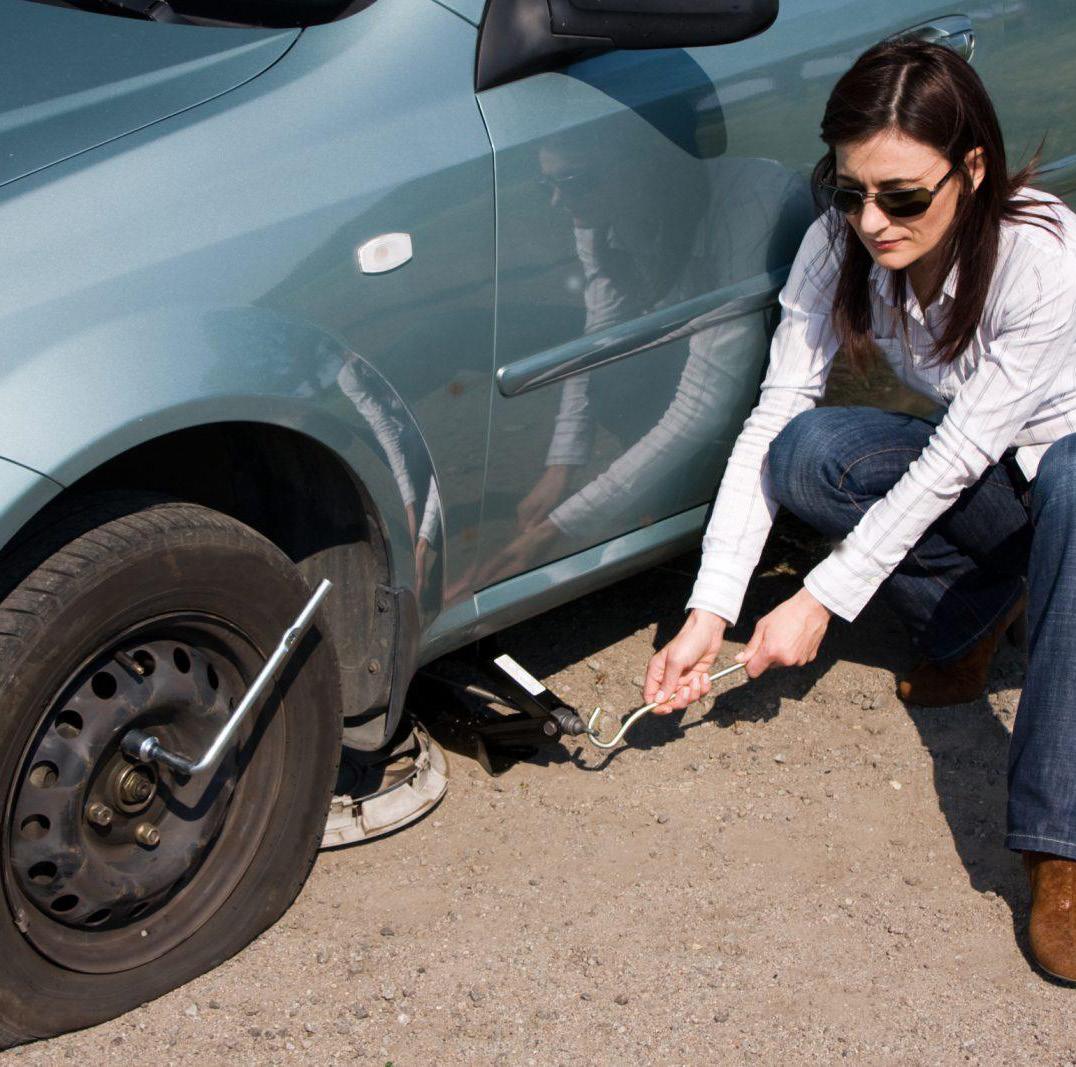
PSI
“pounds per square inch,” which is a unit of pressure measurement, indicating the force applied per square inch of area
Atmospheric pressure is measured in absolute terms, whereas the other pressures are relative to atmospheric pressure. Therefore the absolute pressure in a car tire is around 350,000 Pa/50 psi/3.5 atm (relative pressure of car tire, plus absolute atmospheric pressure) 6,900 Pa
51,700 - 58,600 Pa 7.5 - 8.5 psi 0.5 - 0.6 atm
- 262,000 Pa
Negative pressure domes use air-blowers to create a vacuum between the inner and outer layers of a dome. This vacuum, or negative pressure, holds a projection screen in place and gives it its shape.
Solid structures can buckle or fracture under pressure, even if the material itself resists compression—especially when forces are applied directly without flexibility.
With pneumatic constructions, internal pressure distributes evenly across the membrane, creating pure tensile forces that prevent buckling.
The construction has a specific fluidity and reverts to its natural form the moment that any pressure is removed.
Homogeneous: looks the same at all locations
Not Isotropic
Isotropic: looks the same in all directions
Not homogeneous
inflatable structures do not work well with objects created by flat surfaces, however with spherical objects, the air pressure distributes evenly to each point on the surface, allowing the object to maintain its integrity across.
The inner pressure automatically seeks to find its own form, the outer surface assuming the minimum surface area by maximum volume.
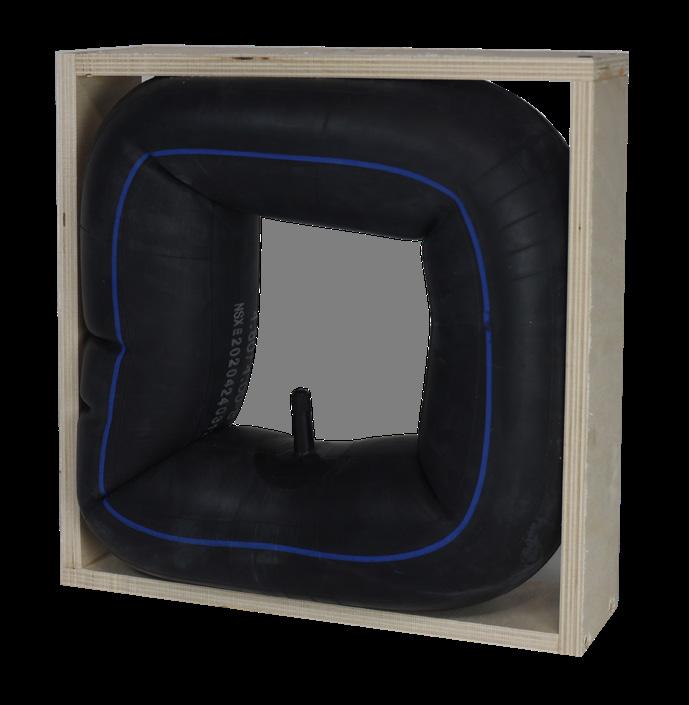
This is the principle of the sphere. If the membrane differs considerably from the spherical form this results in differing pressures causing a cushion effect.
chapter three-
SOFT STARTS
Air Supported - the entire internal volume of the structure is pressurized
Air Inflated - only the space between dual membranes is pressurized. the interior functional space remains at atmospheic pressure atmospheric pressure
internal air pressure keeps membranes taut, shedding snow and preventing buildup
Tension in Cables
Foundation Reactions
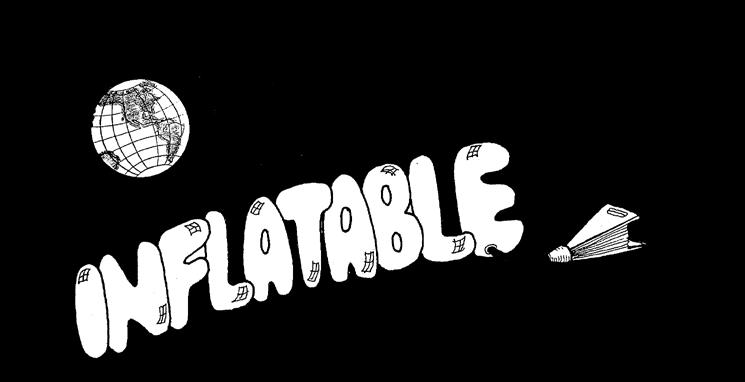
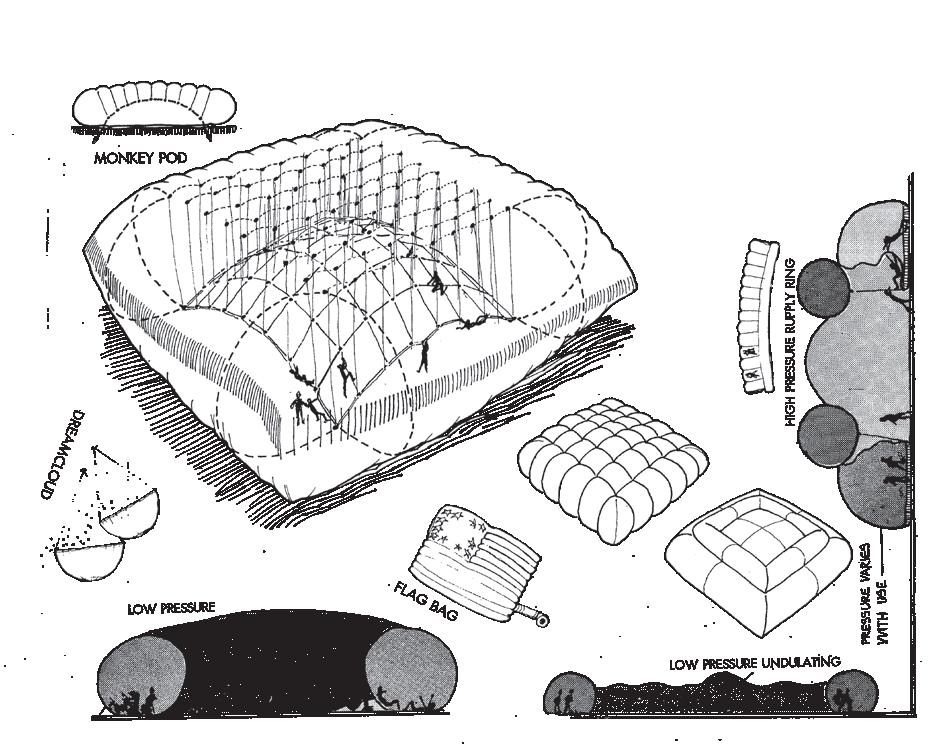
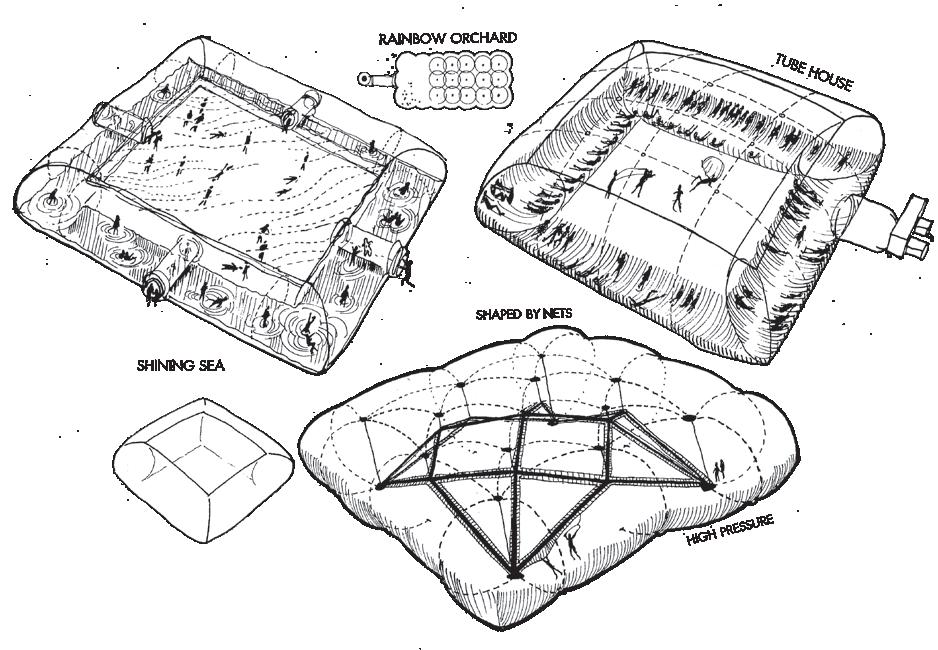
INFLATOCOOKBOOK
Author: Ant Farm
Year: 1971
Function: practical guide to creating inflatable structures
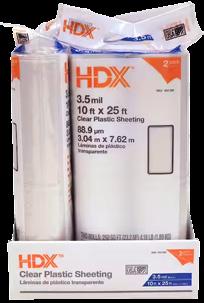
9 x 12 ft plastic drop cloth
.7 mil
Polyethylene
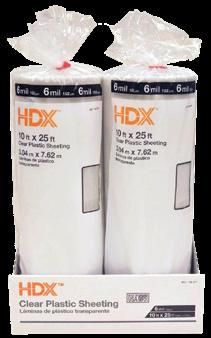
10 x 25 ft clear plastic sheeting
6 mil
Recycled polyethylene
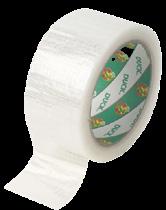
20m x 50mm clear, gloss finish
0.23mm
Polyethylene fabric
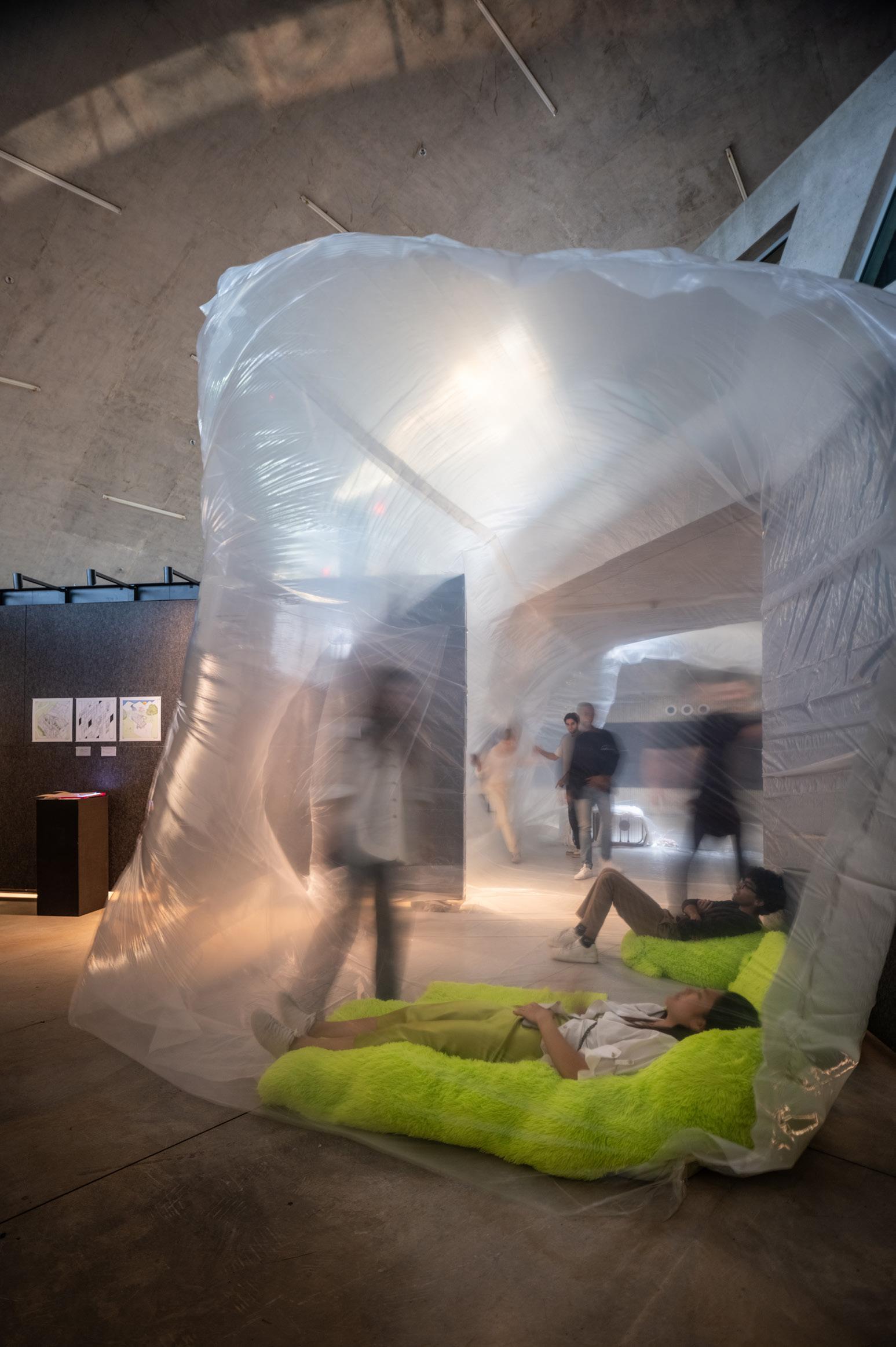
INFLATOPIA
18 x 32 ft Inflatable Bubble
Milstein Hall Visions of Utopia Exhibition
In collaboration with Jack Miezskalski and Raihaan Bose
Exhibition Threshold exterior interior
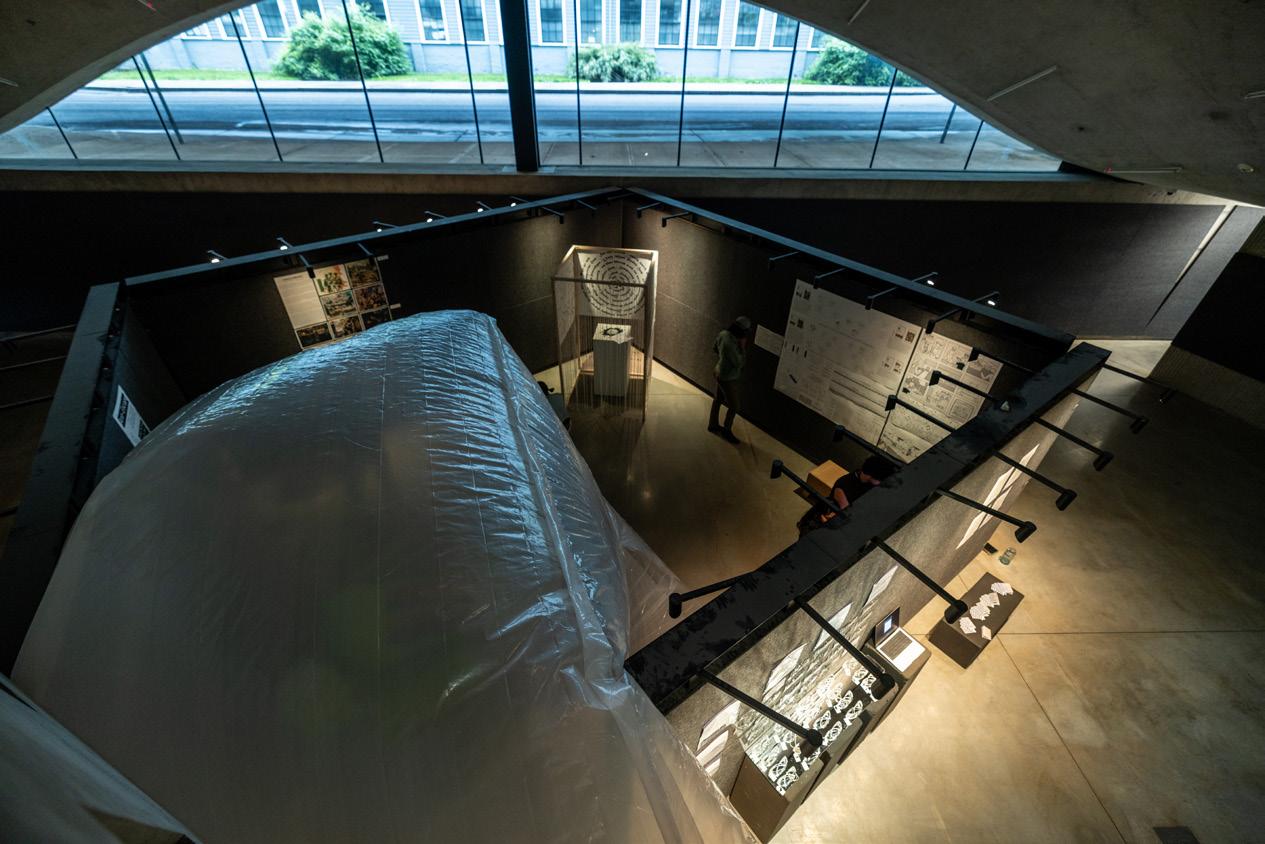


walls conforming the space
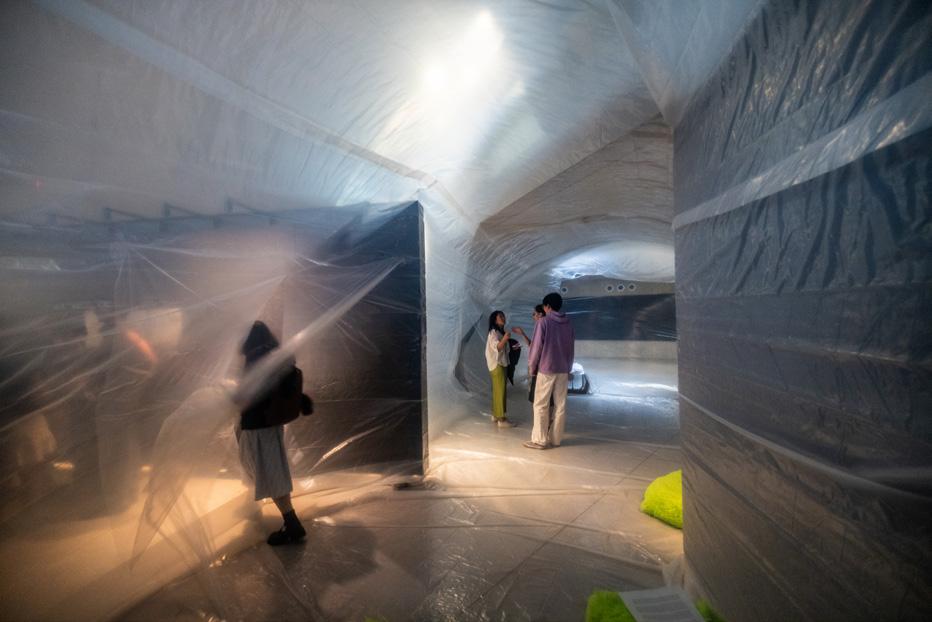
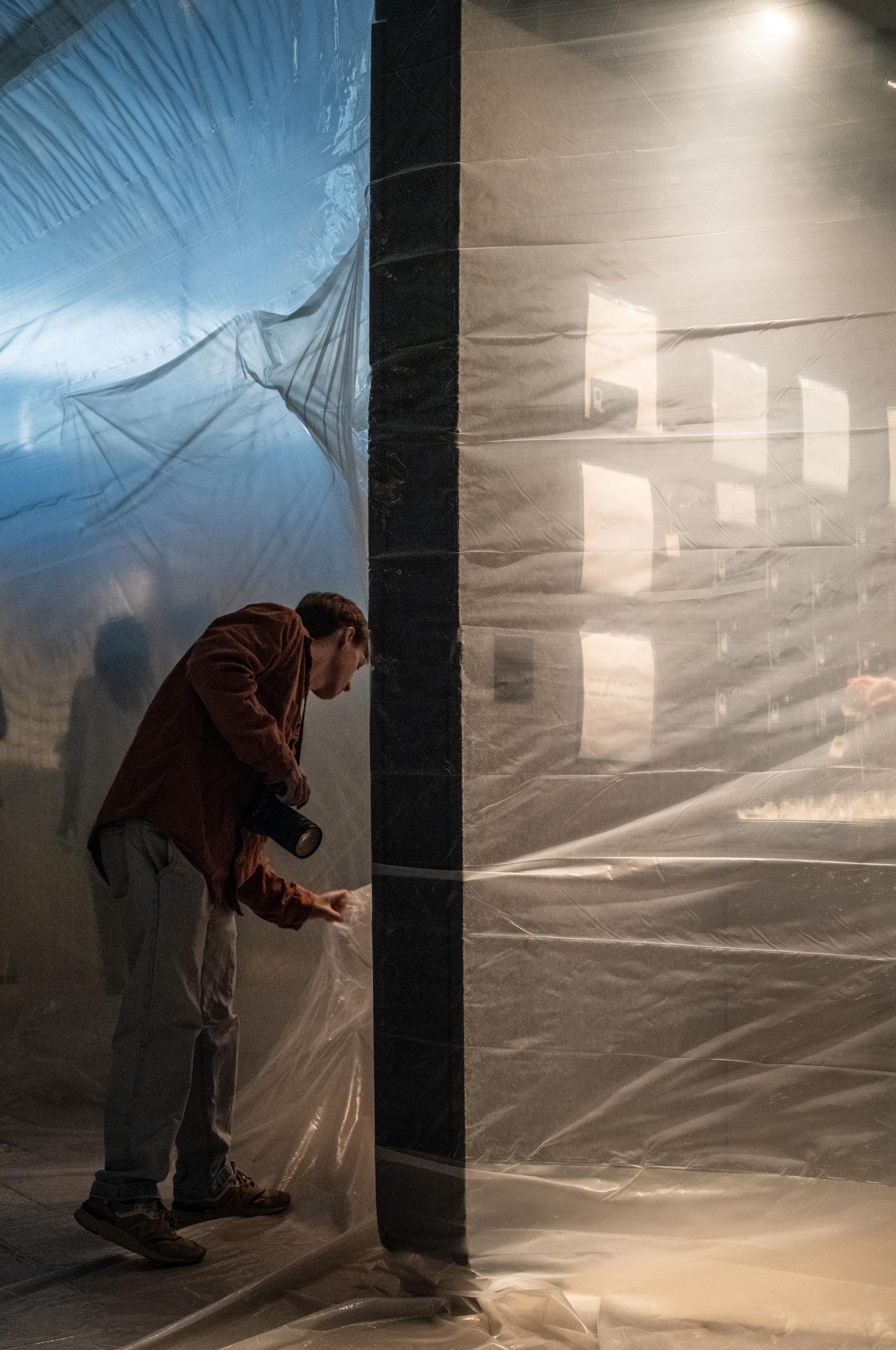
constant source of energy
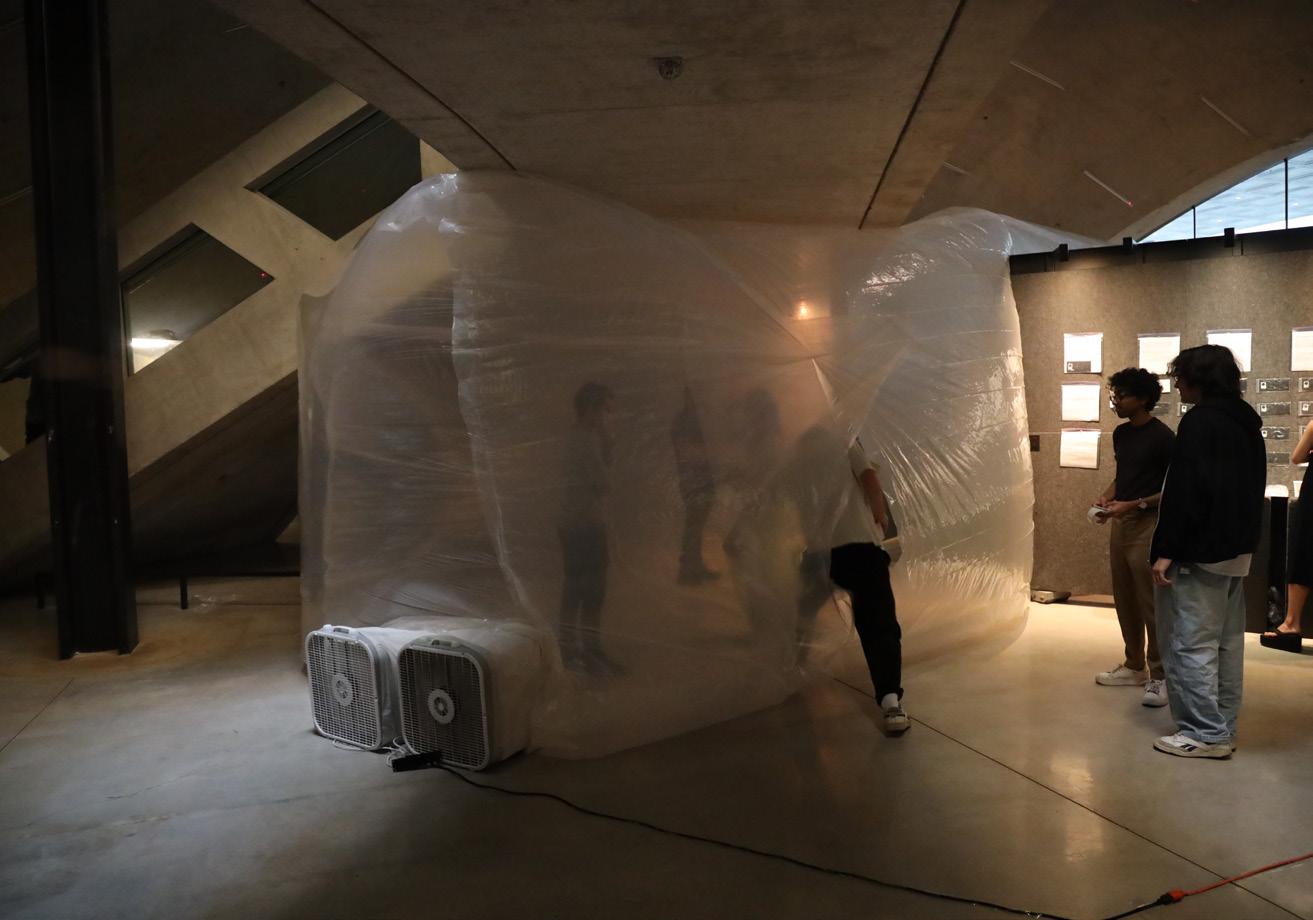
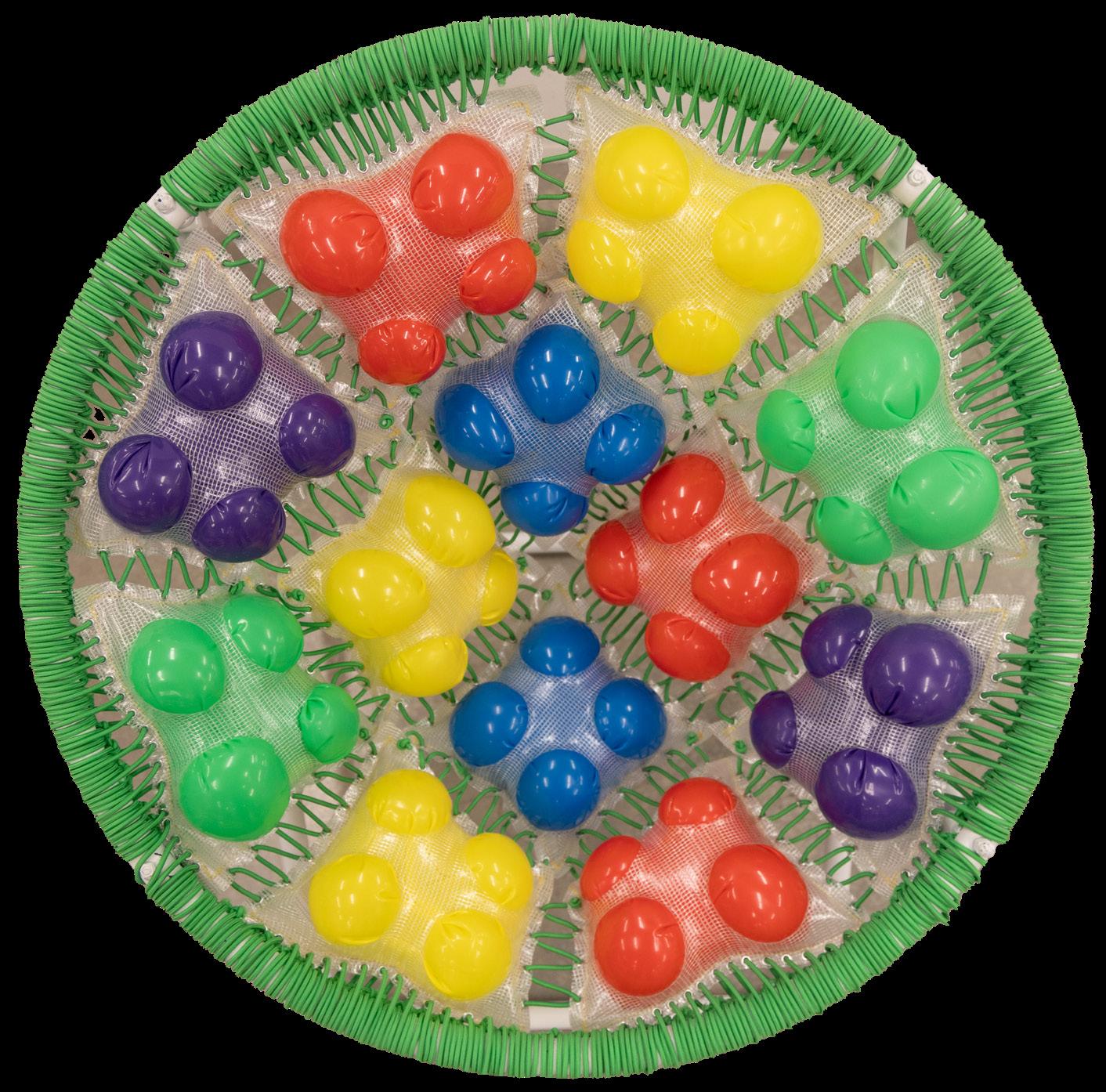
BUBBLE BUTT
Lounge Chair
system of modular, bladder cushions suspended by tensioned cords

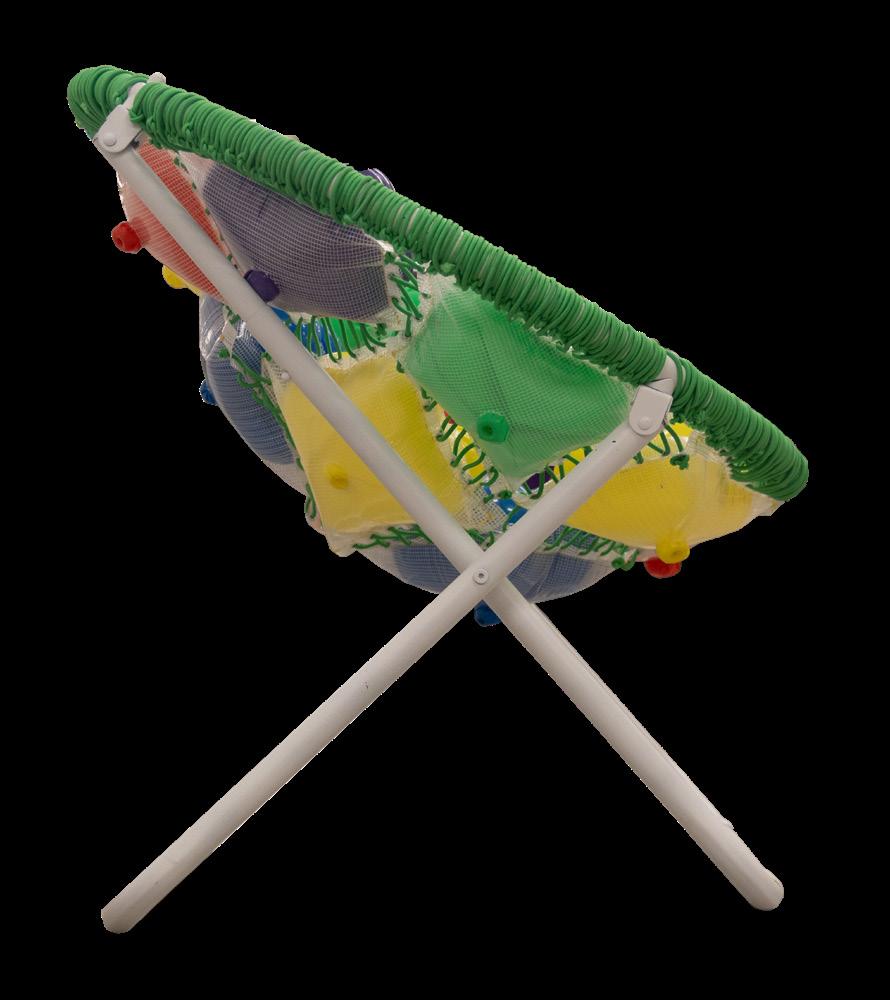
constant use of energy
balloons were so easy to use because they maintain their pressure no energy needed
chapter four-
BURSTING THE BUBBLE
Why InflatablesCurrentFail
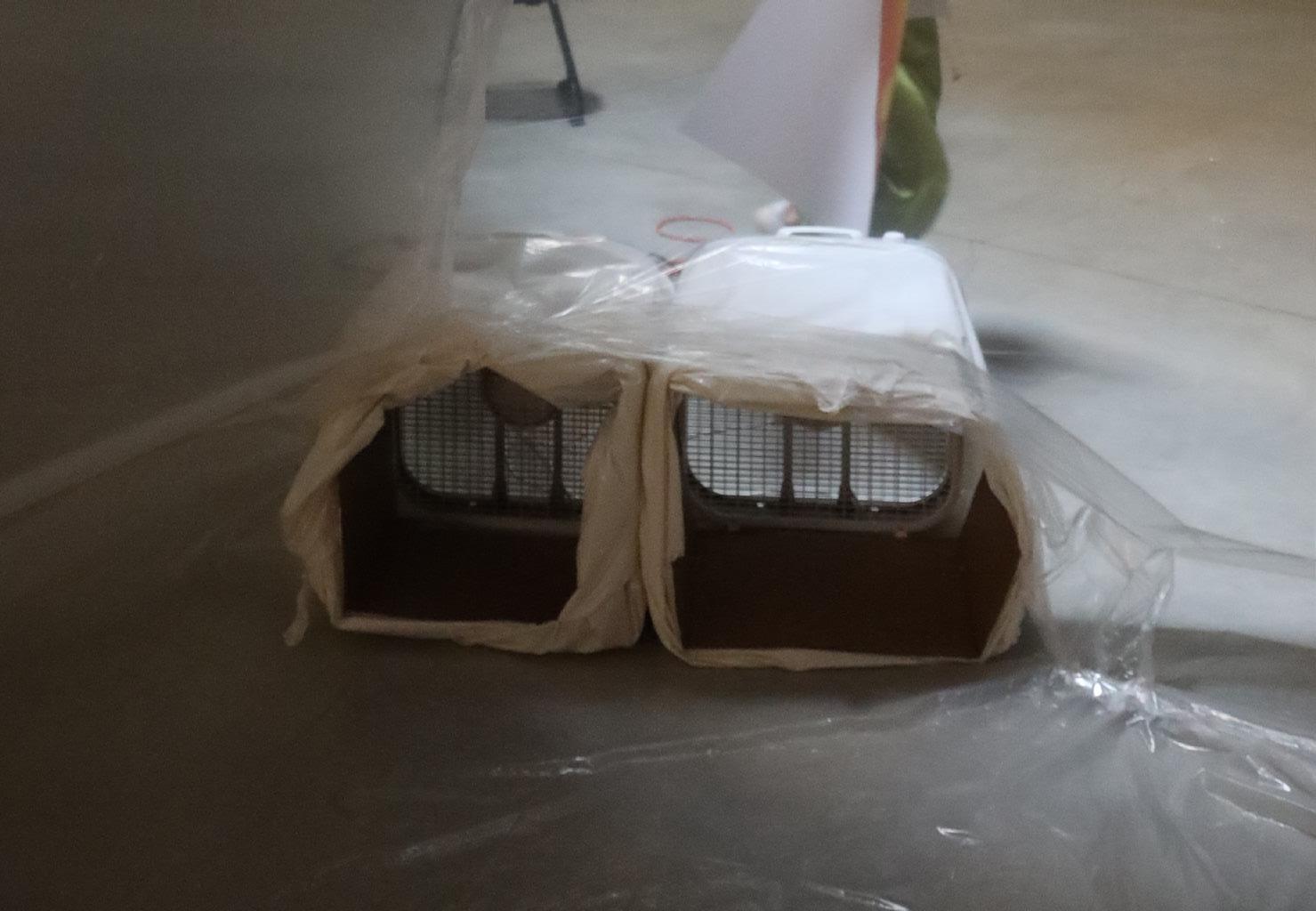
Inflatables today are unsustainable. They are often single-use and wasteful. Puncture prone.
Not Scalable or Adaptable:
Designed for temporary use, not for architectural longevity.
The Need for a New Approach: Can we make fun, adaptable, and reusable pneumatic architecture?
The future of inflatables is not in temporary, wasteful structures,

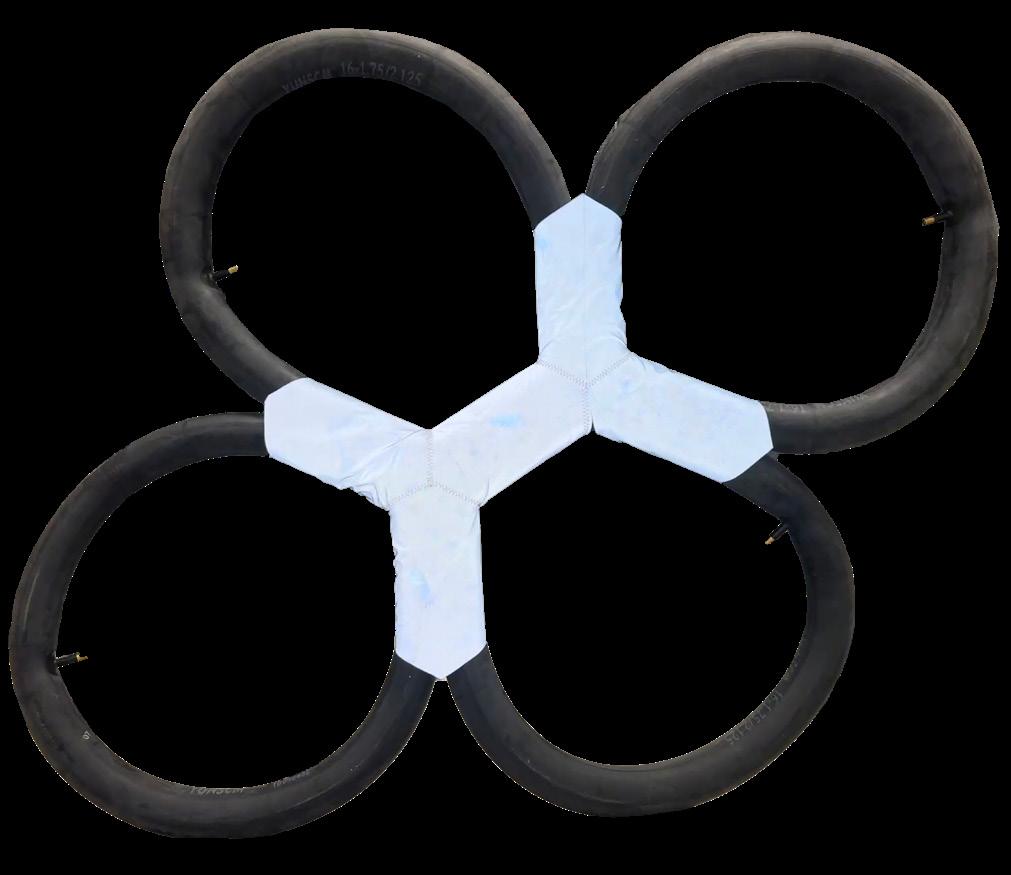
but in deployable, mobile, and scalable pneumatic architecture.
Why does deployability matter?
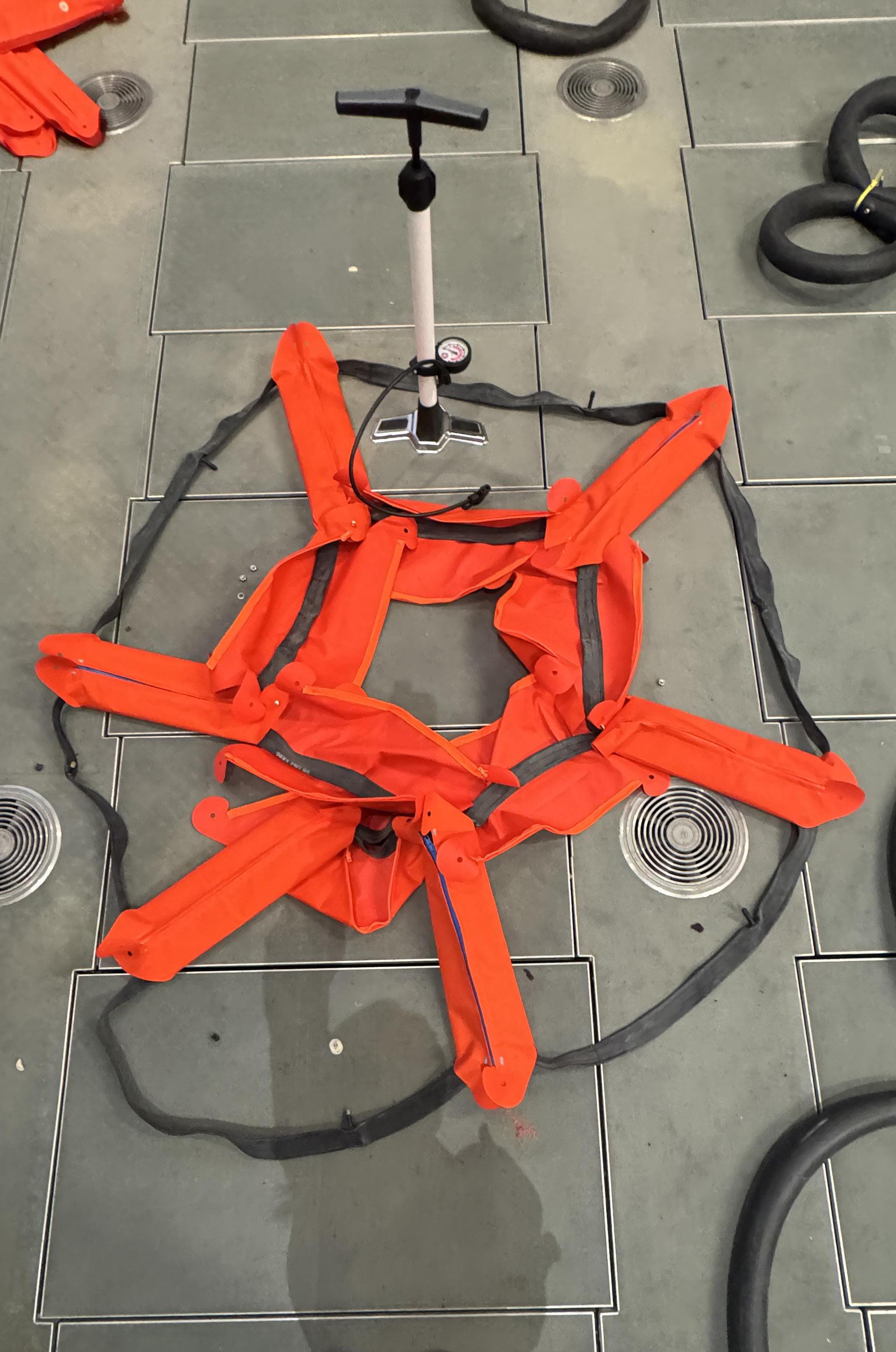
Allows for mobility and reusability, avoiding single-use waste.
Creates architecture that moves with people—not just stays in one place.

chapter five-
FOUND PRESSURE
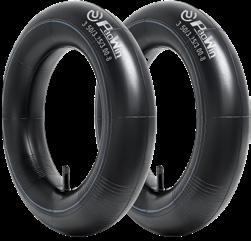

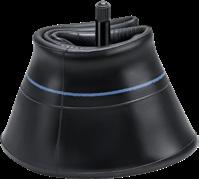


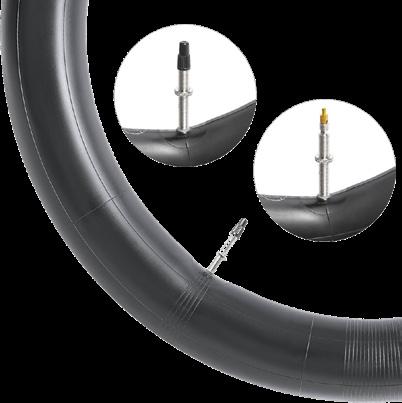
Tire = Building Component
Textile = Joint
Air = Structure
By reusing these industrially manufactured inner tubes, I tap into their existing material intelligence while giving them new life and purpose.

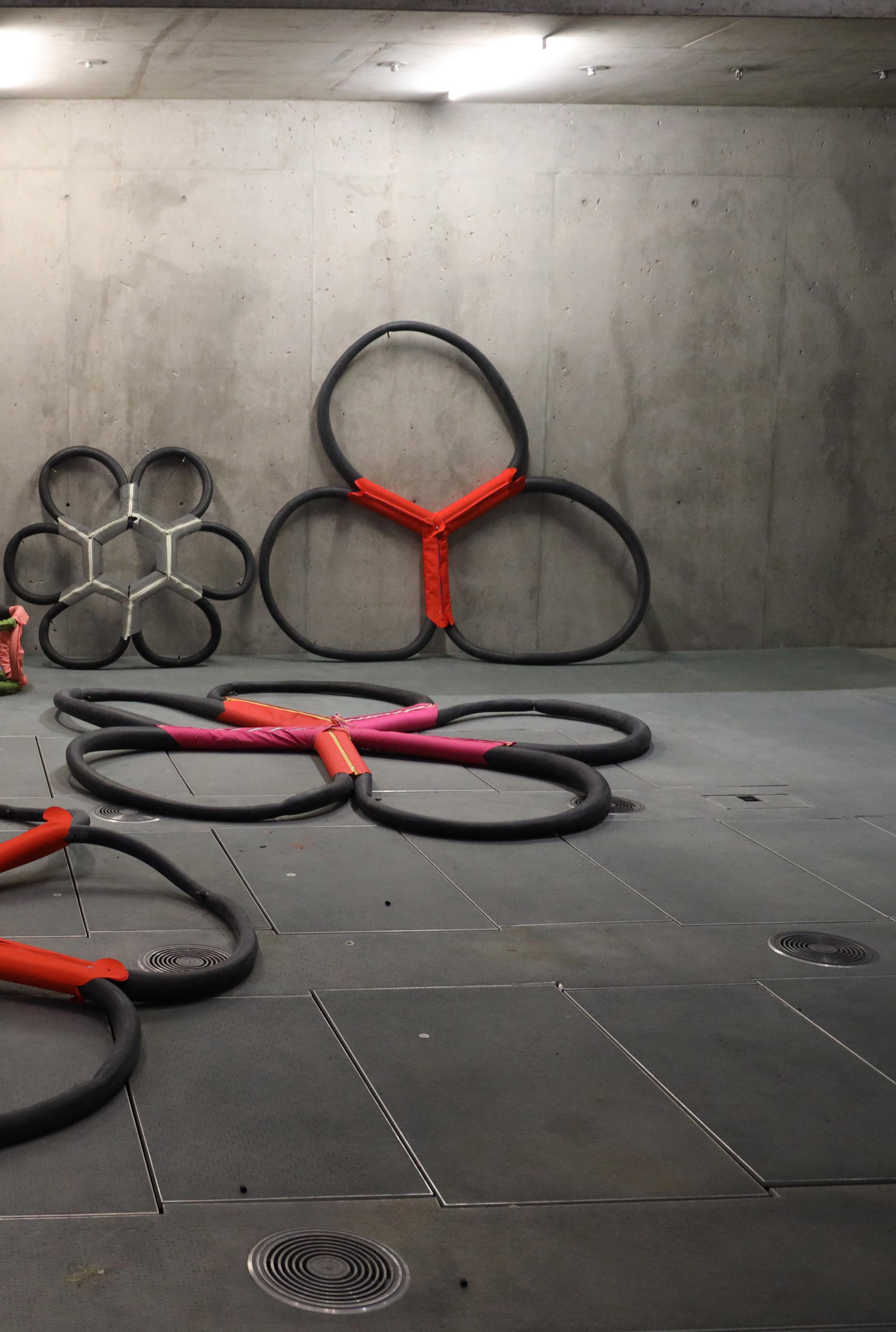
PVC laminate ripstop
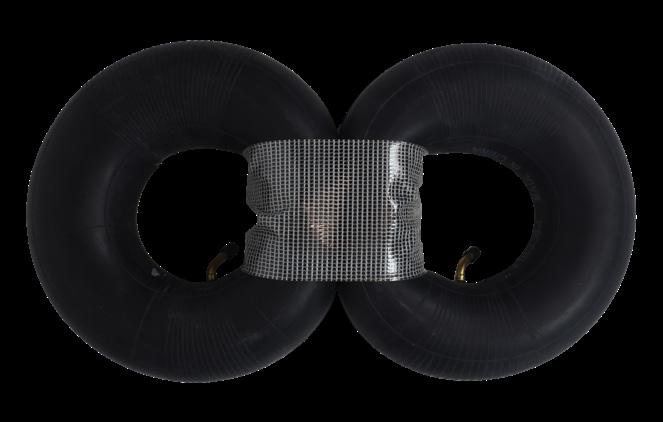

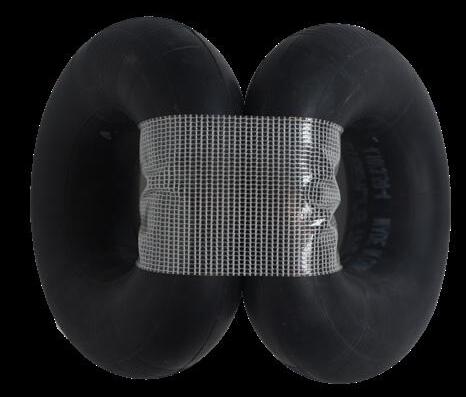
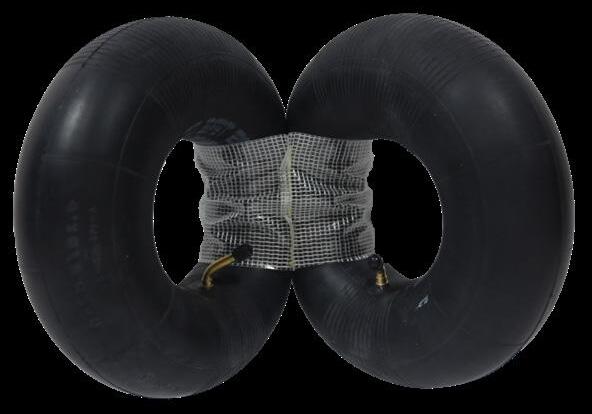
A Movement and rigidity
B C
Excellent compressive strength
Unable to be unassembled without ripping the stitching

natural geometry as form finding logic
these include circles, hexagons, triangles, spirals, and fractals, all of which demonstrate structural efficiency and spatial logic
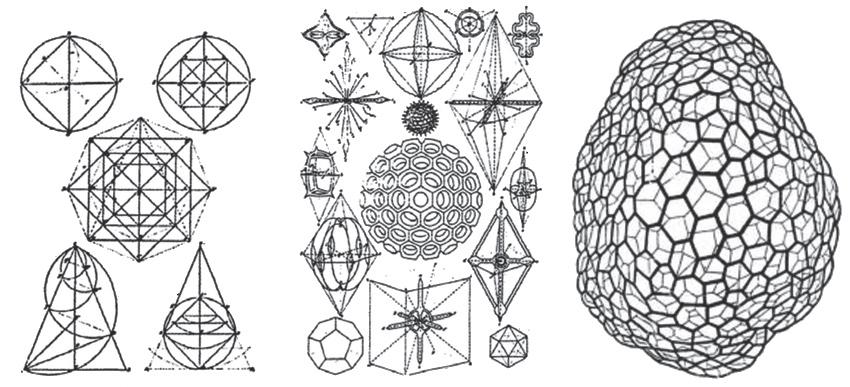
how nature defines form
The Institute for Lightweight Structures (IL) Univeristy of Stuttgart
Director: Frei Otto
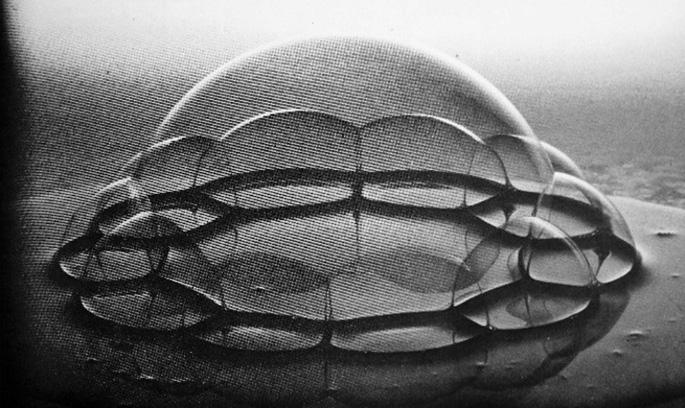
When two or three bubbles adhere to each other they form an even wall between themselves.
The outer membranes result in a 120° angle. In the case of a grouping of four they develop an angle of 109°.
The is the basis of all foam and these naturally occuring forms have a minimal surface area in relation to their volume.
Starting from a single cluster of units, each module connects edge-to-edge, allowing the system to grow outward organically.
Looking closer at the connection, I designed different fabric sleeves to wrap tightly around the tires, compressing them together.
This creates strong joints and turns the curved forms into flat, wall-like surfaces.
Buttons
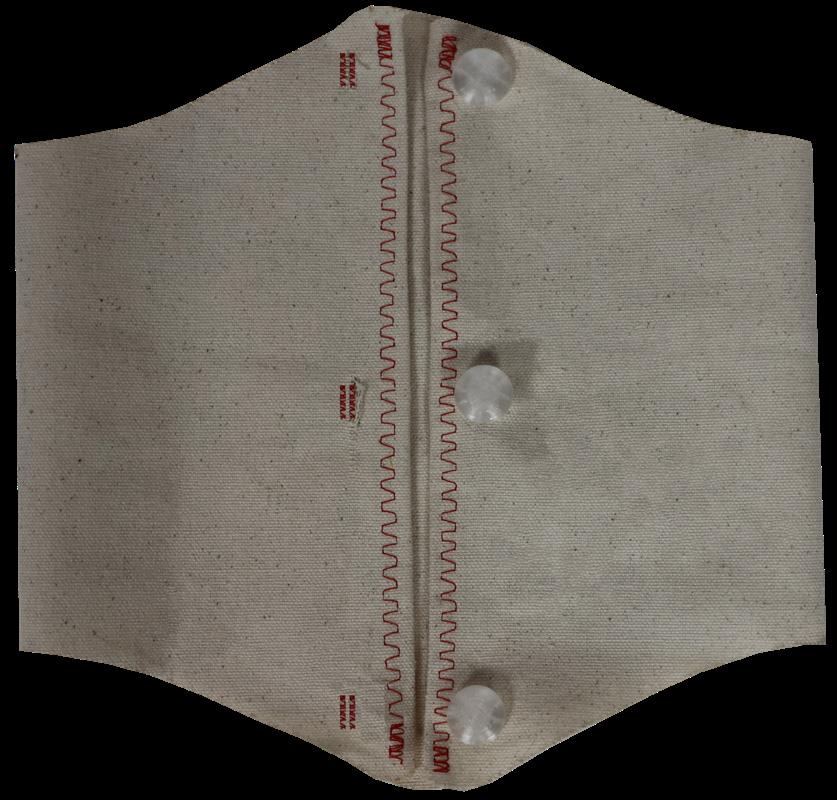
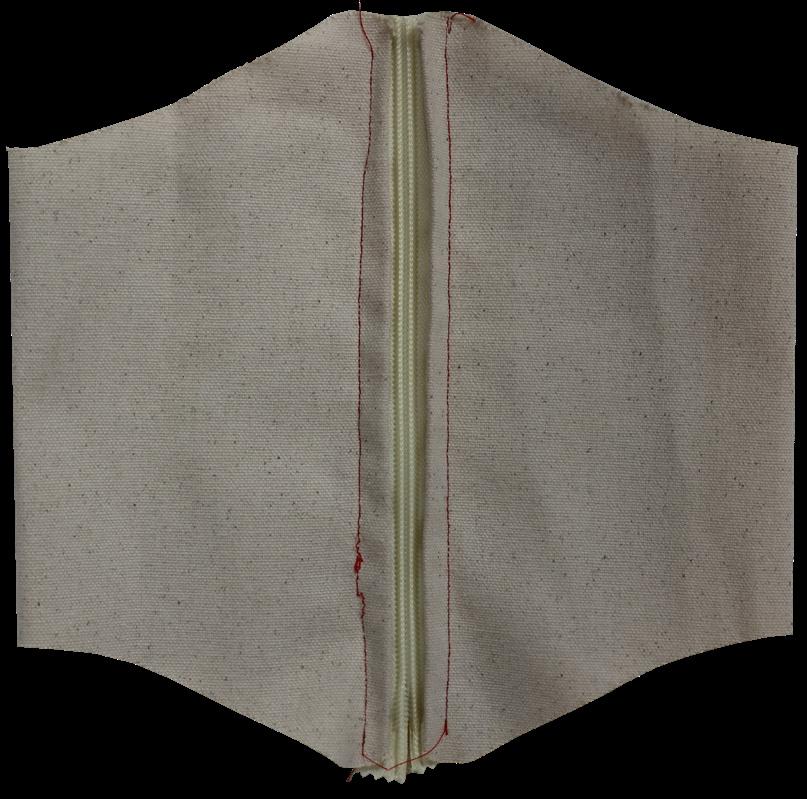

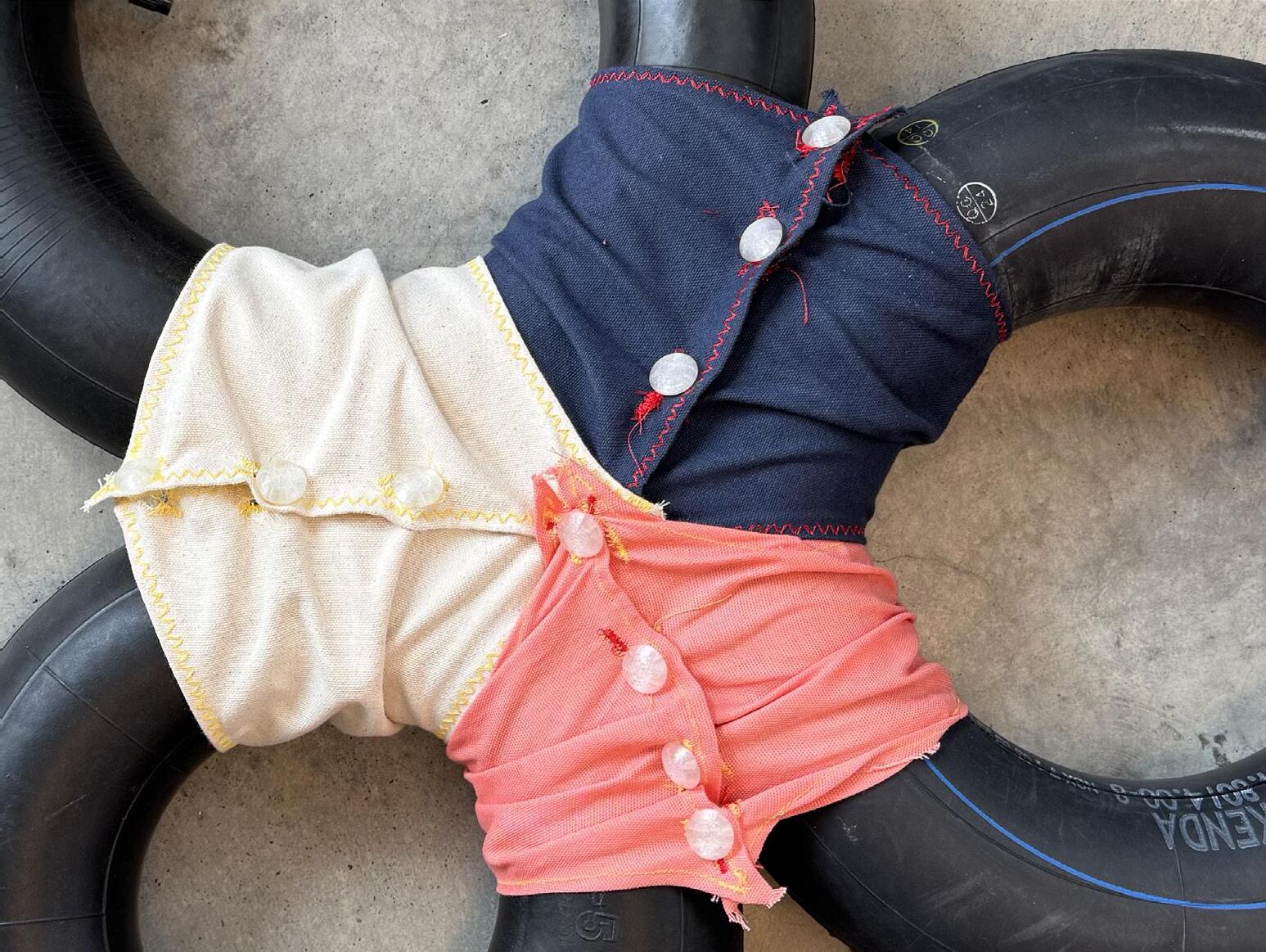

A 3 different tire sizes
Duck Canvas was the best result
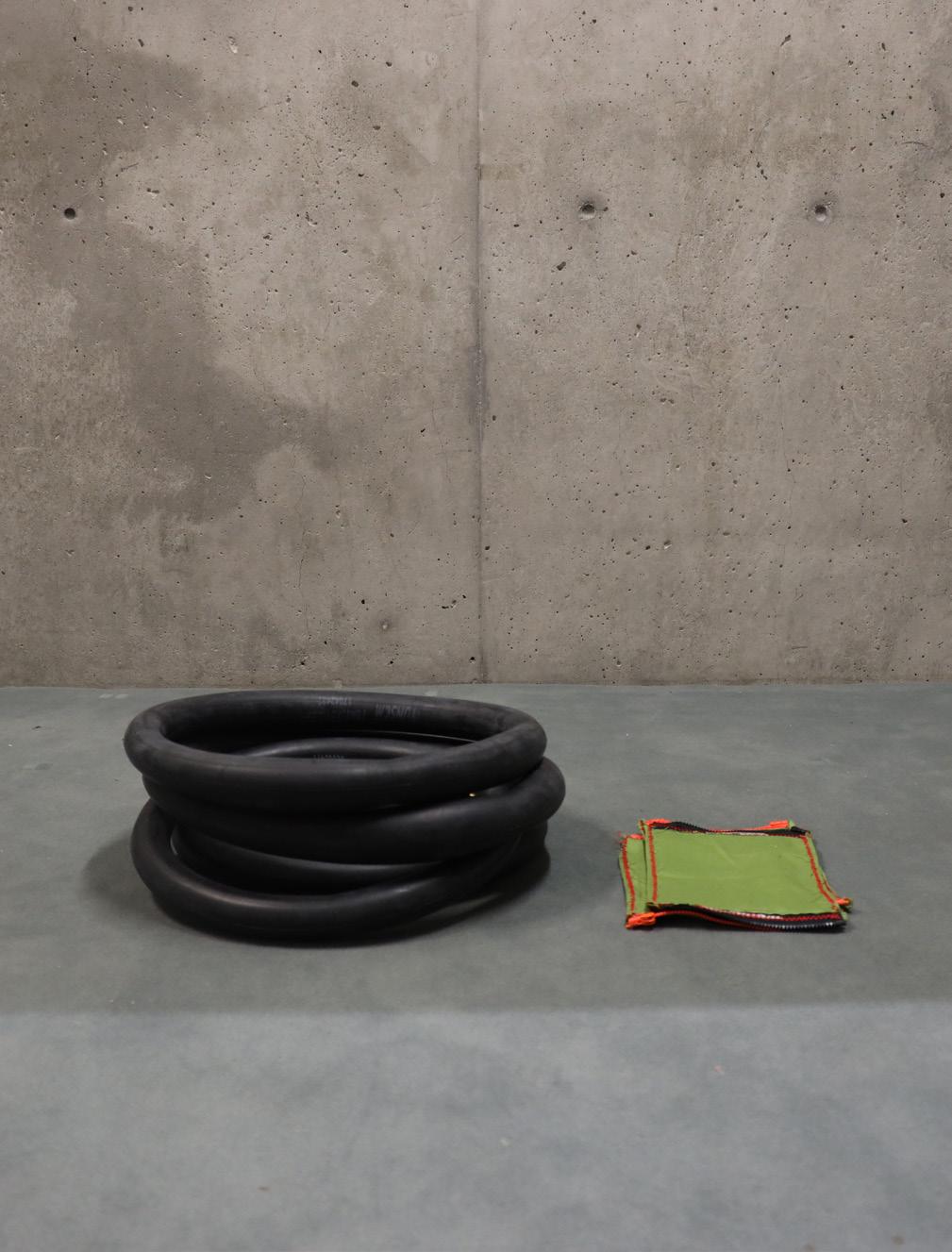
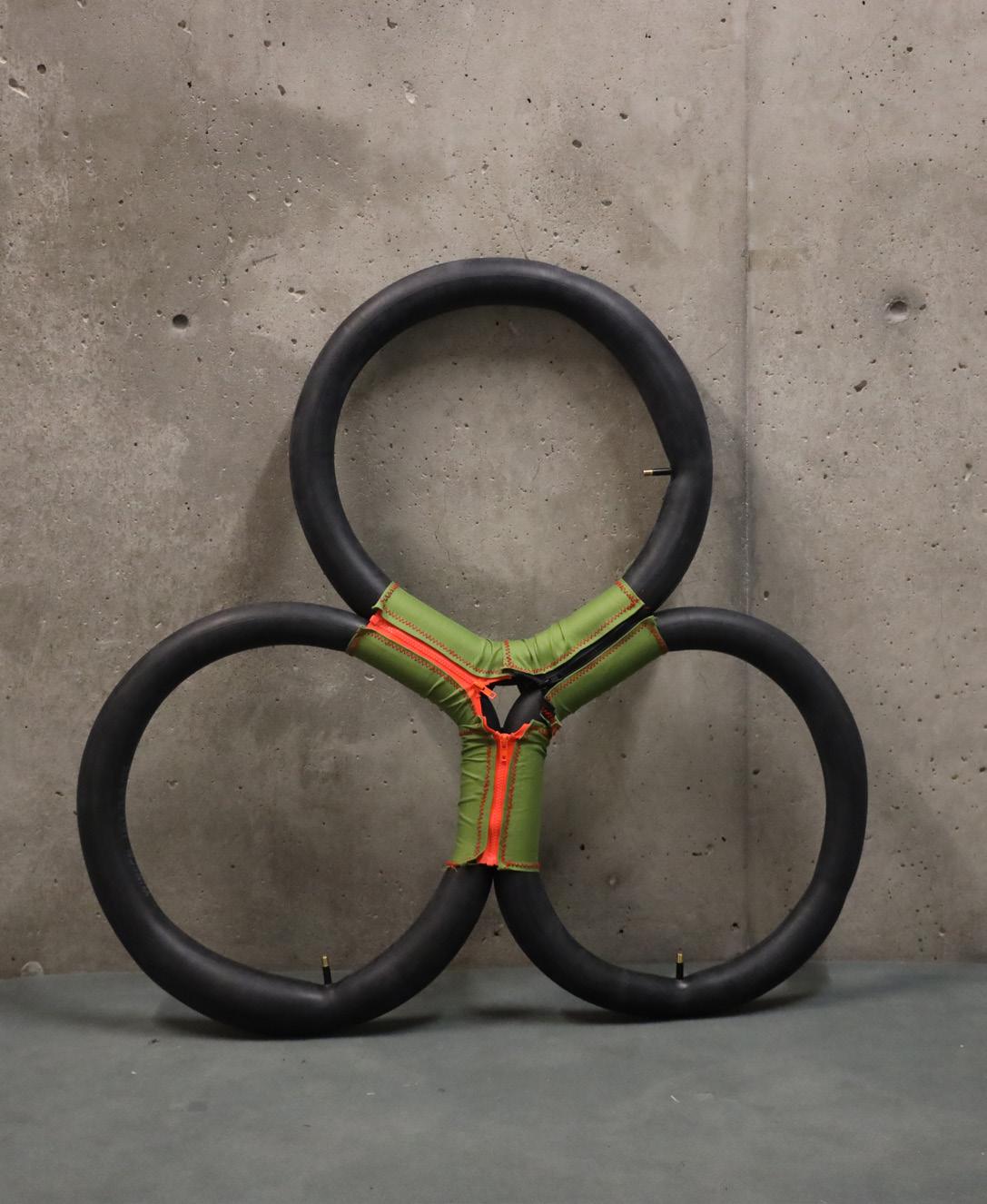

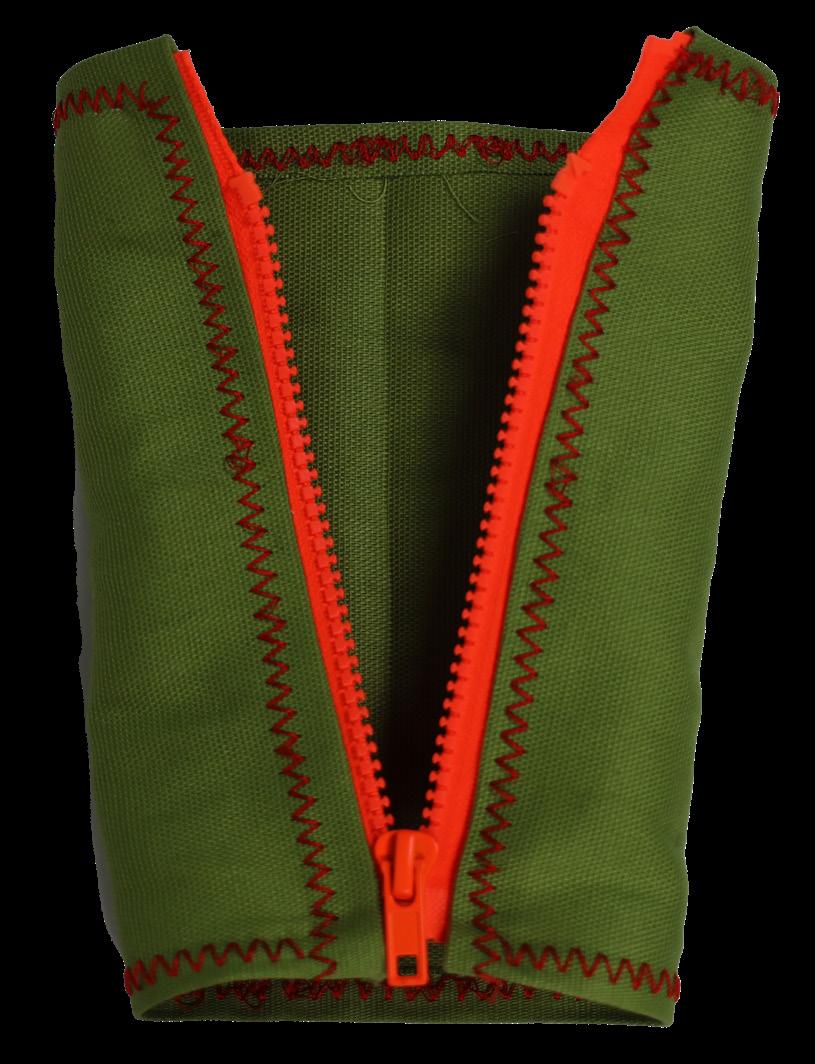
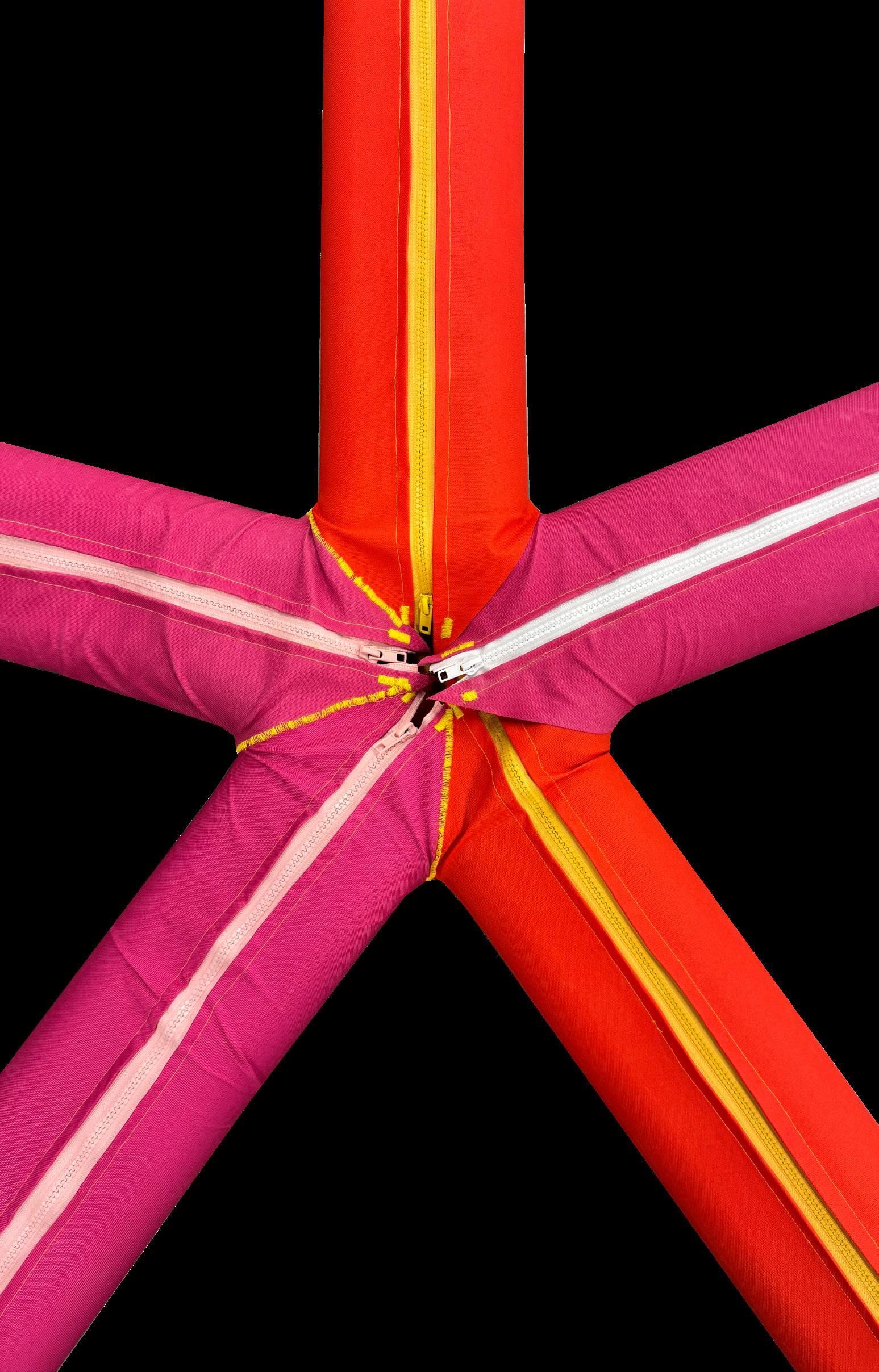
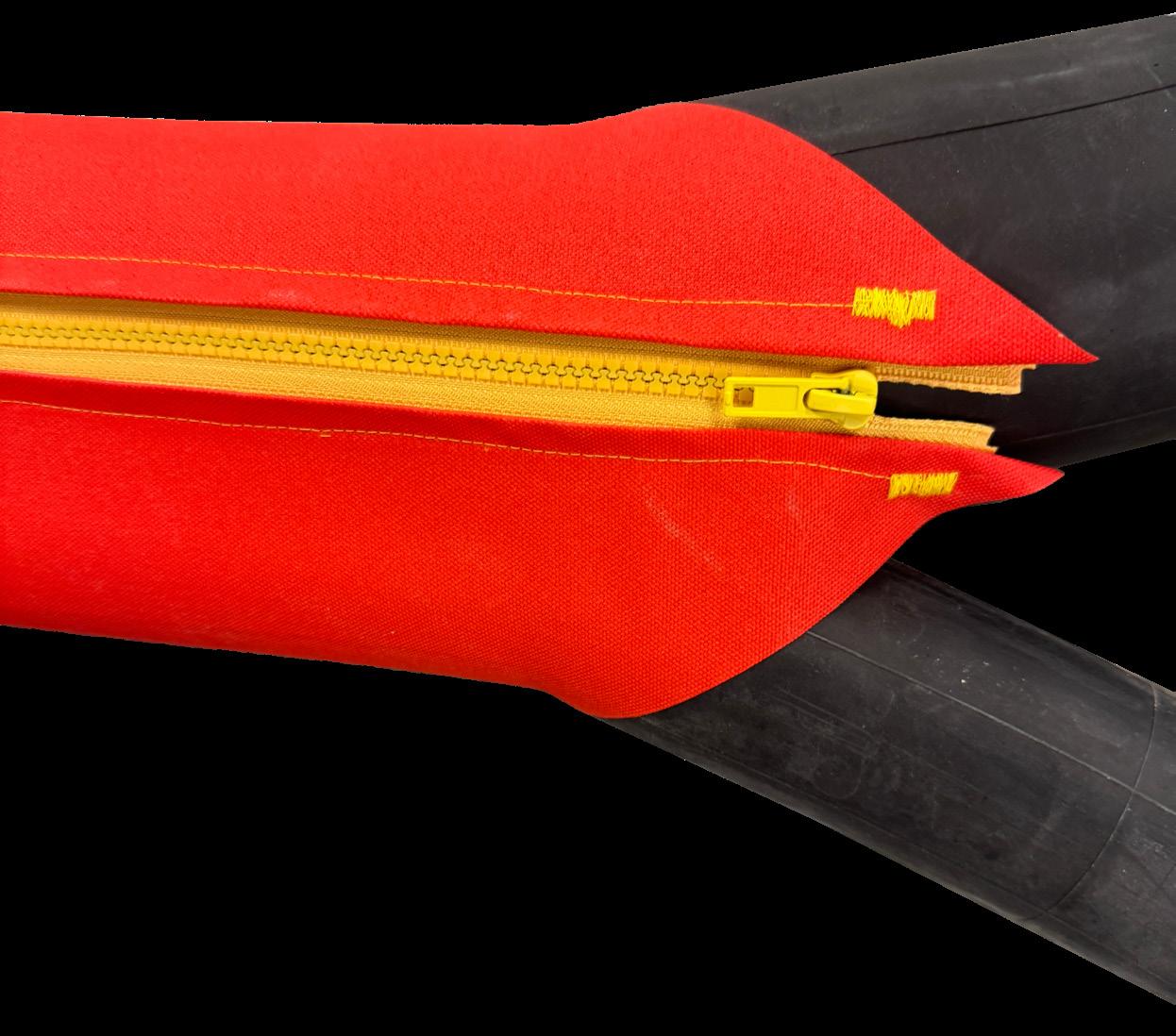

Interior corner connection needed
chapter six-
LOGIC
In geometry, the truncated icosahedron is a polyhedron that can be constructed by truncating all of the regular icosahedron’s vertices. Intuitively, it may be regarded as footballs (or soccer balls) that are typically patterned with white hexagons and black pentagons
Inspired by Goldberg polyhedra, this thesis taps into a logic of geometric subdivision—where each reused pneumatic module mirrors the scalable, adaptive nature of geodesic constructions, enabling structures that can grow, shift, and reconfigure without fixed boundaries.


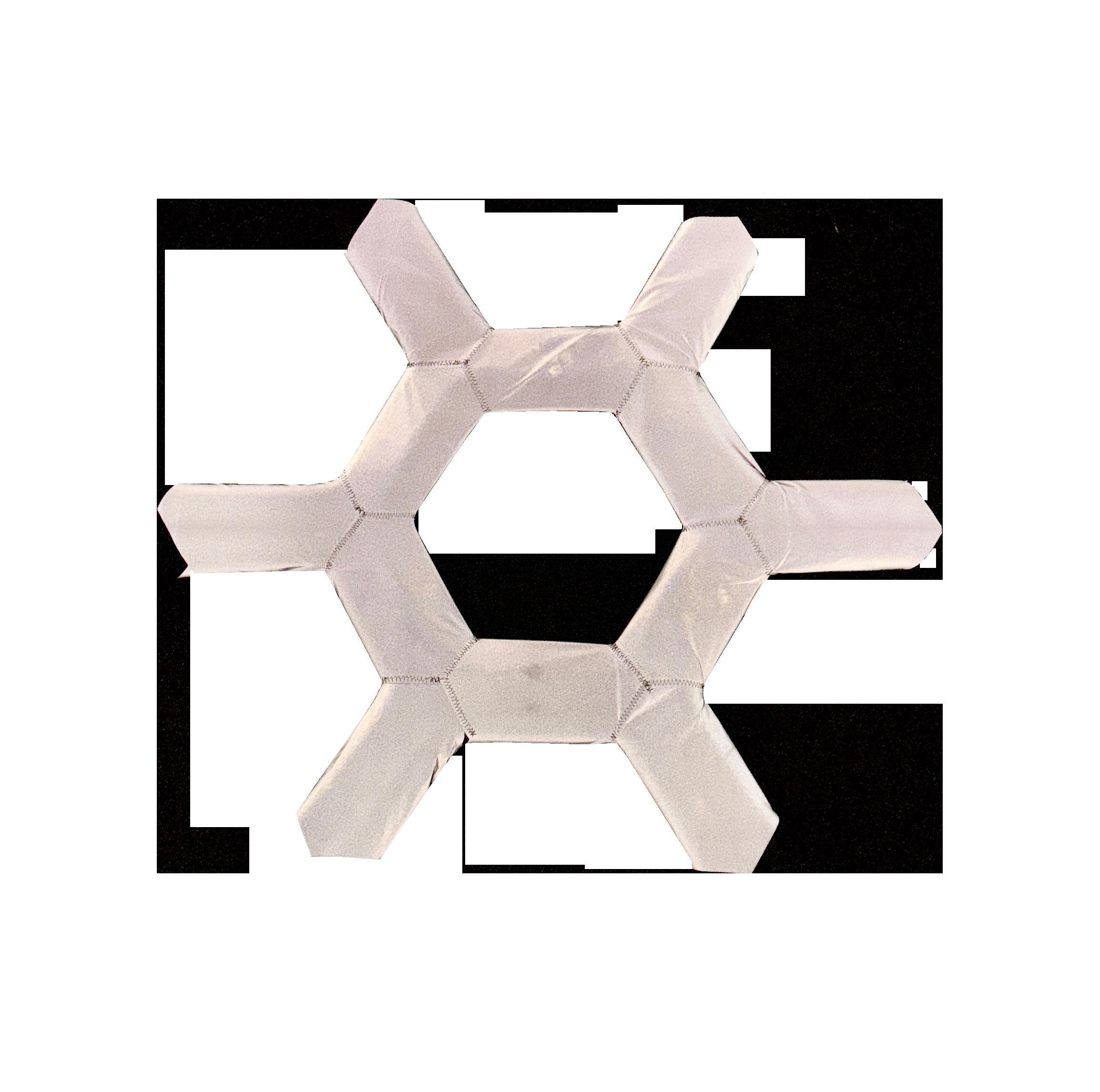
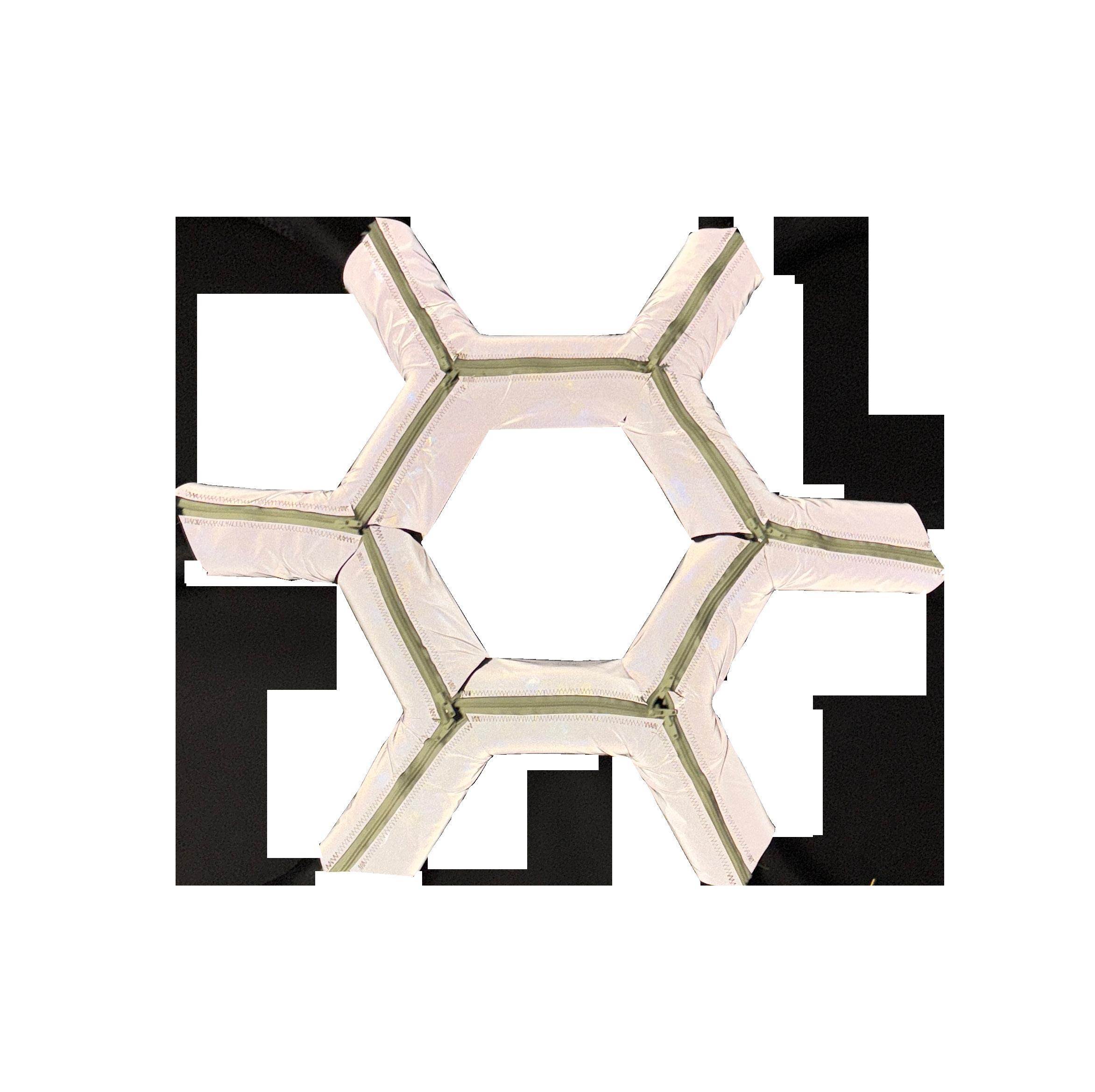
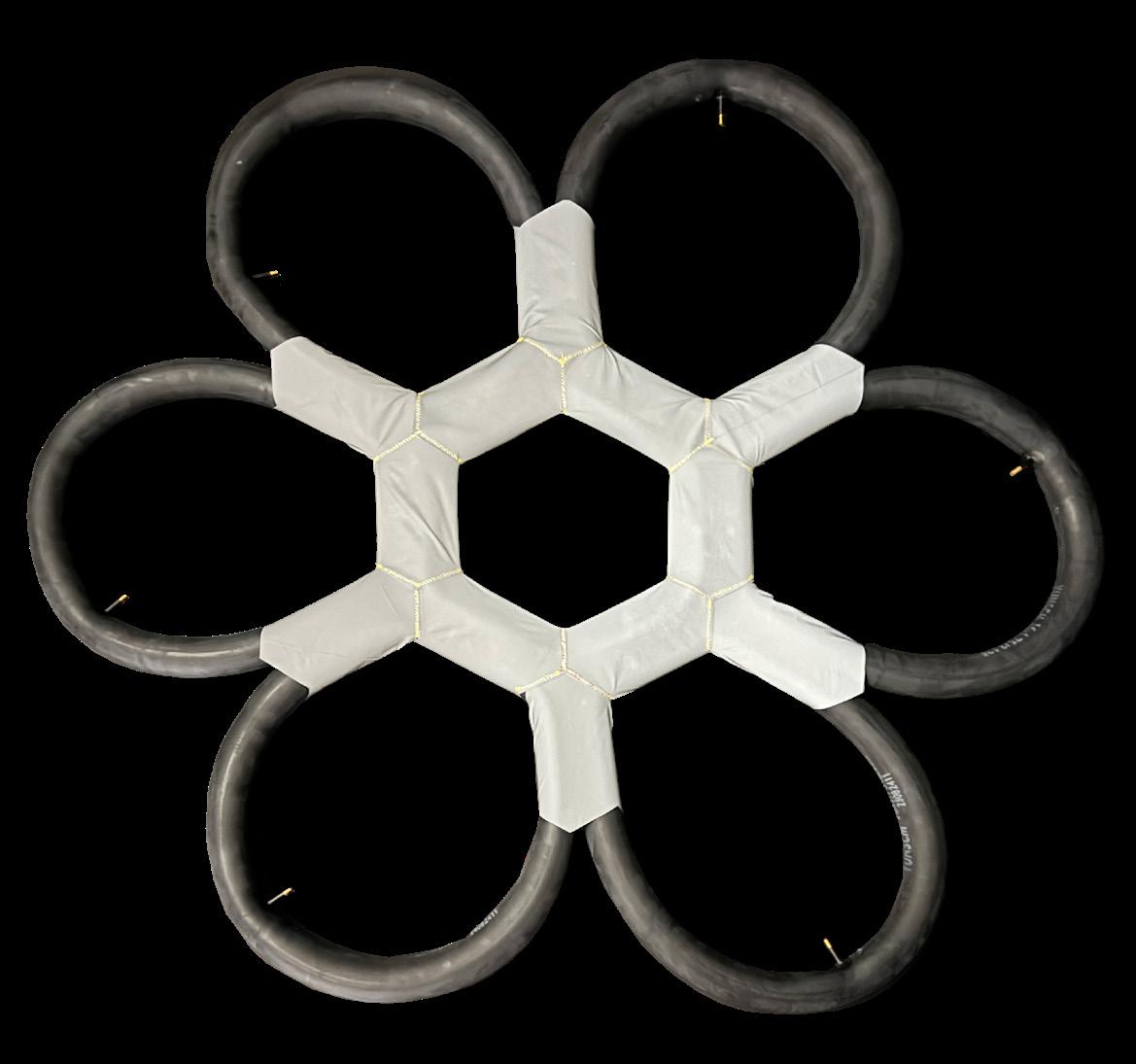
A Full hexagon enclosure
Reflective utility material 16in tires
chapter seven-
1:1 TYPEPROTO-
6.5 FT
The simplicity of the module enables complexity through repetition: curved becomes linear, linear becomes spatial.
chapter eight-
HOW TO AIR
Component Assembly
Quantity A
5 C sleeves
11 A sleeves
15 B sleeves
sleeves
Attach 5 B sleeves to A 5A
Attach 5 A sleeves to their corresponding B sleeves
5B
Attach 5 B sleeves to their corresponding A sleeves
5B
Attach 5 B sleeves to their corresponding A sleeves
Attach 5 A sleeves to their corresponding B sleeves 5C
Attach 5 C sleeves to their corresponding A sleeves
Final unrolled geometry
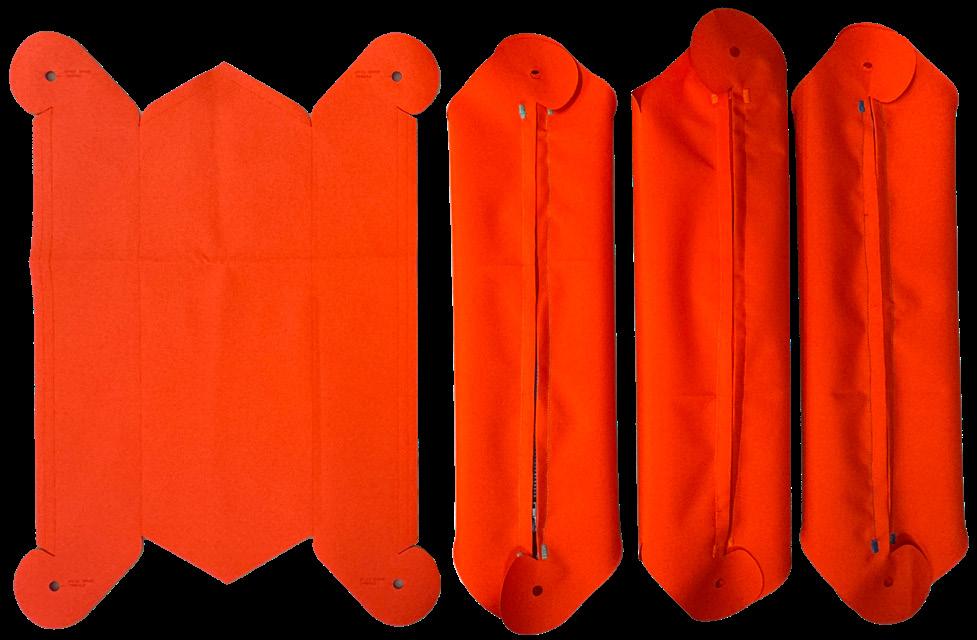
To bring air into form, the system needs a skin. The “outfit sleeves” acts as the architectural joint— negotiating between softness and structure, pressure and flexibility.


Pin the back of the zipper to the front side of the fabric
Start at the bottom of the zipper and work your way up
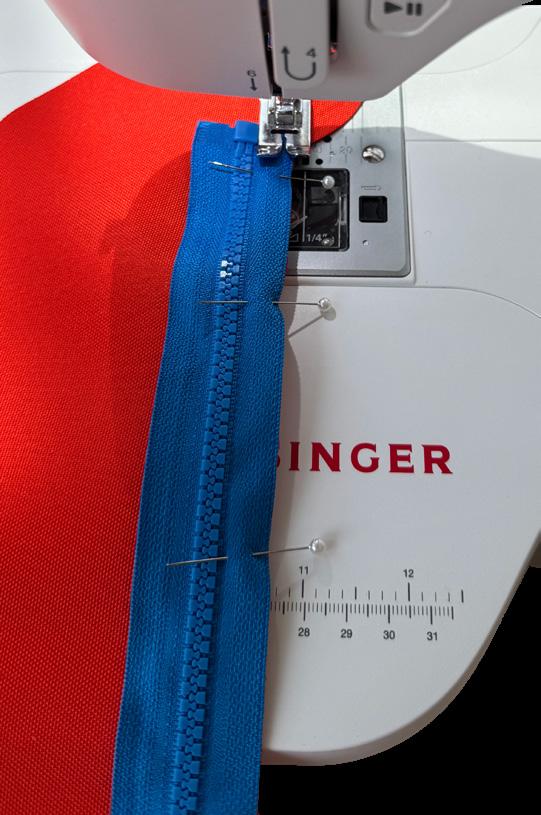
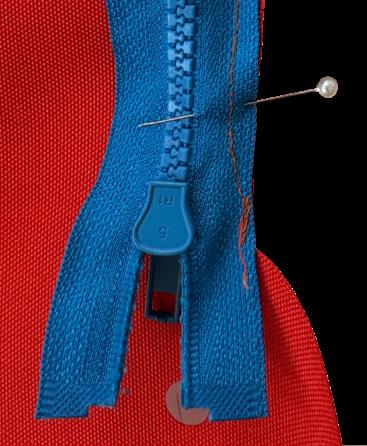
Rest the sewing foot up against the zipper for guidance when straight stitching all the way down
Flip onto other side
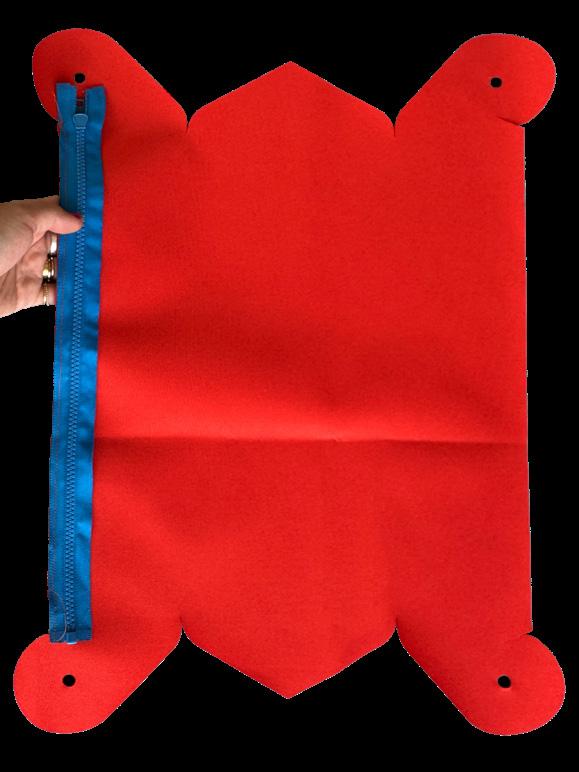
Lift and fold over scored dashed line

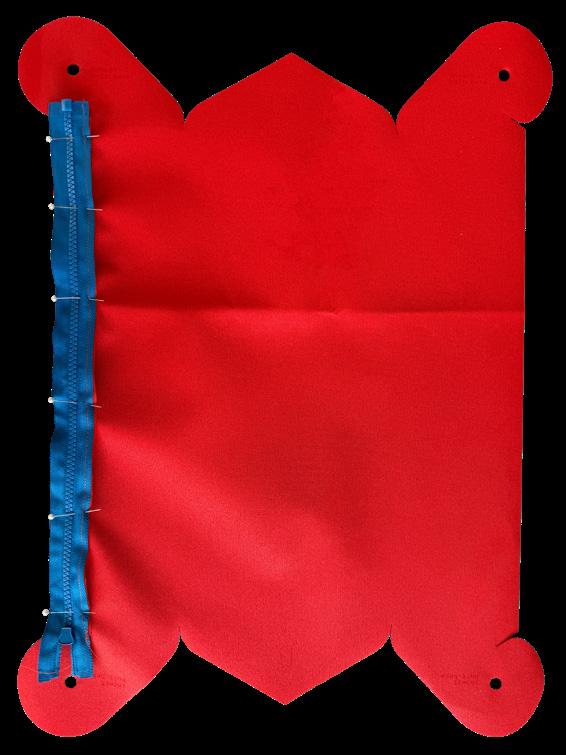
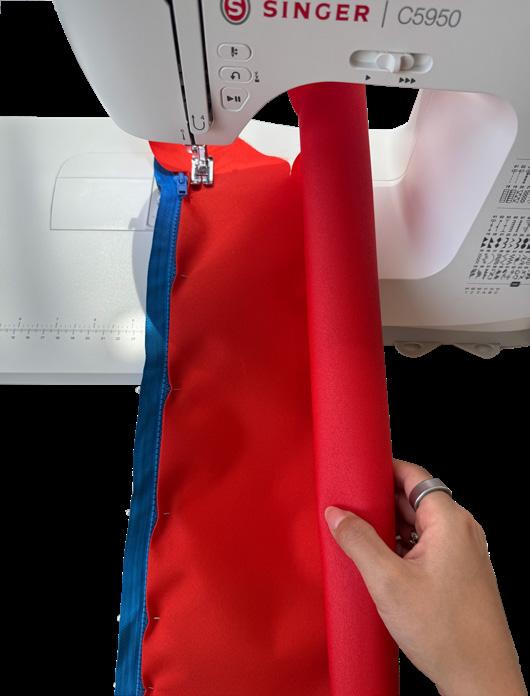
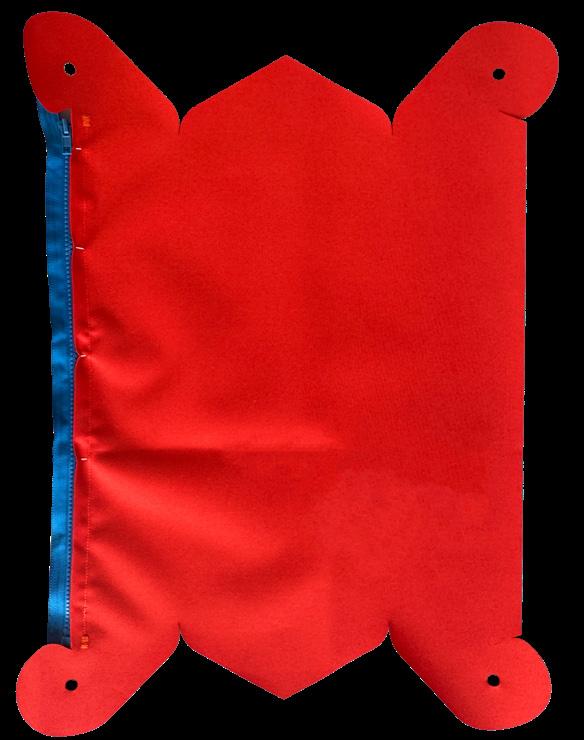


Flip the piece on its front and place the sewing foot against the zipper
Start and end with the cross stitch and have a straight stitch going in the middle
First zipper done!
Fold and transfer the alternate zipper over to the other side
Repeat step 2


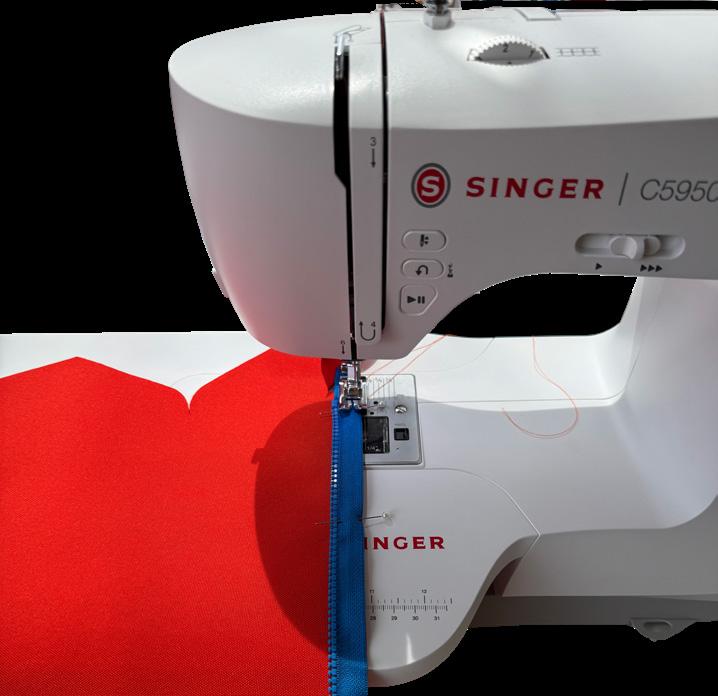

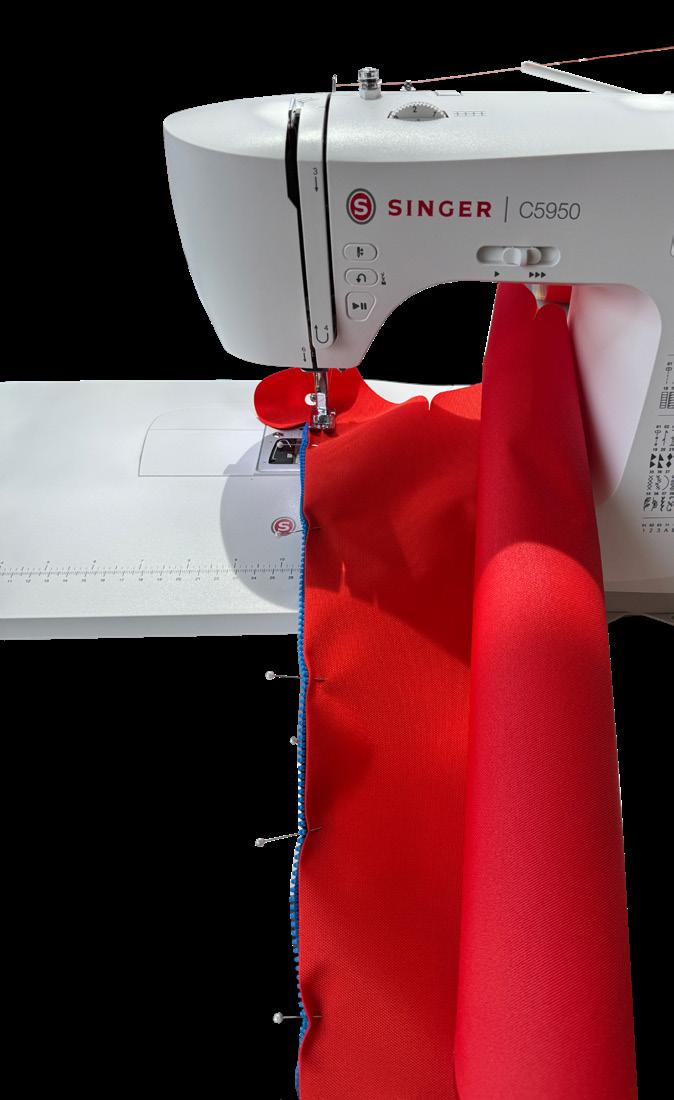
Repeat steps 3-5
Repeat step 6
Second zipper done!


chapter nine-
PUMP UP THE JAM
(PUMP IT UP)
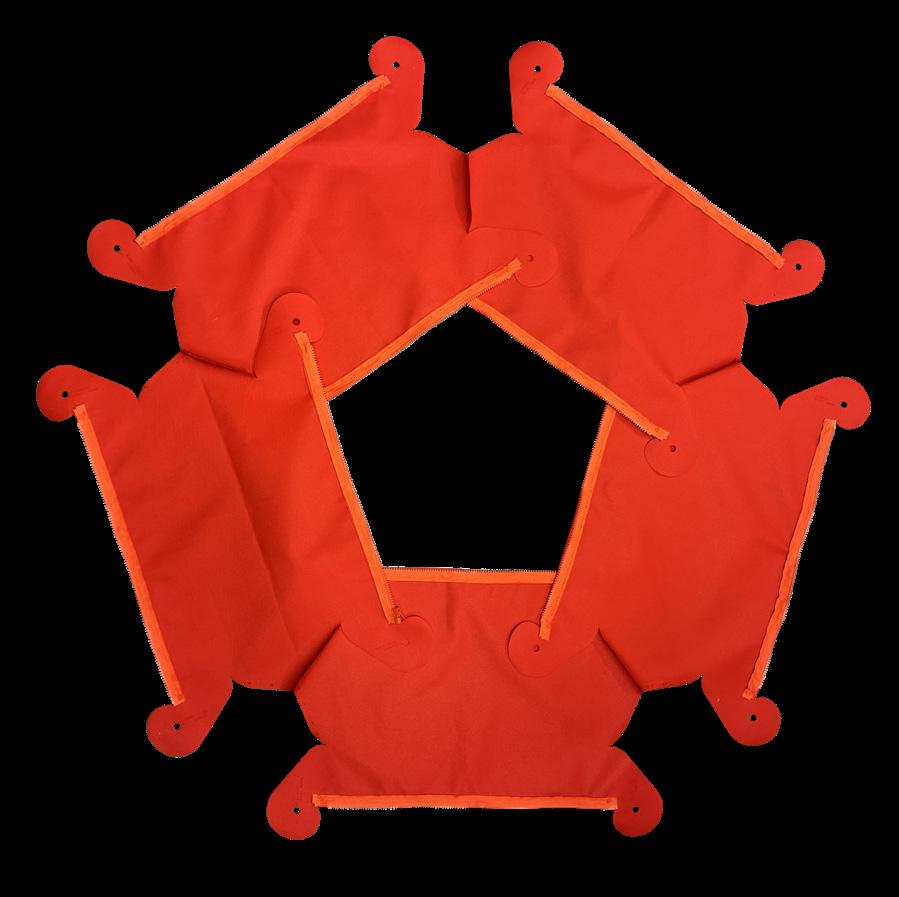
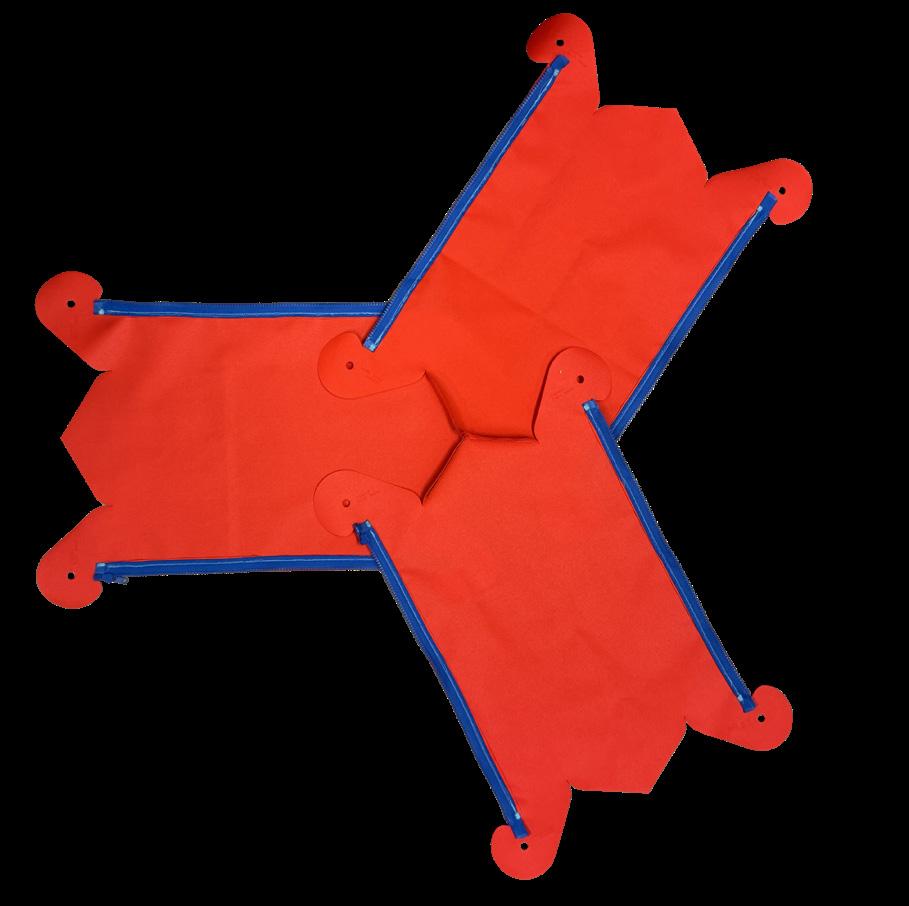
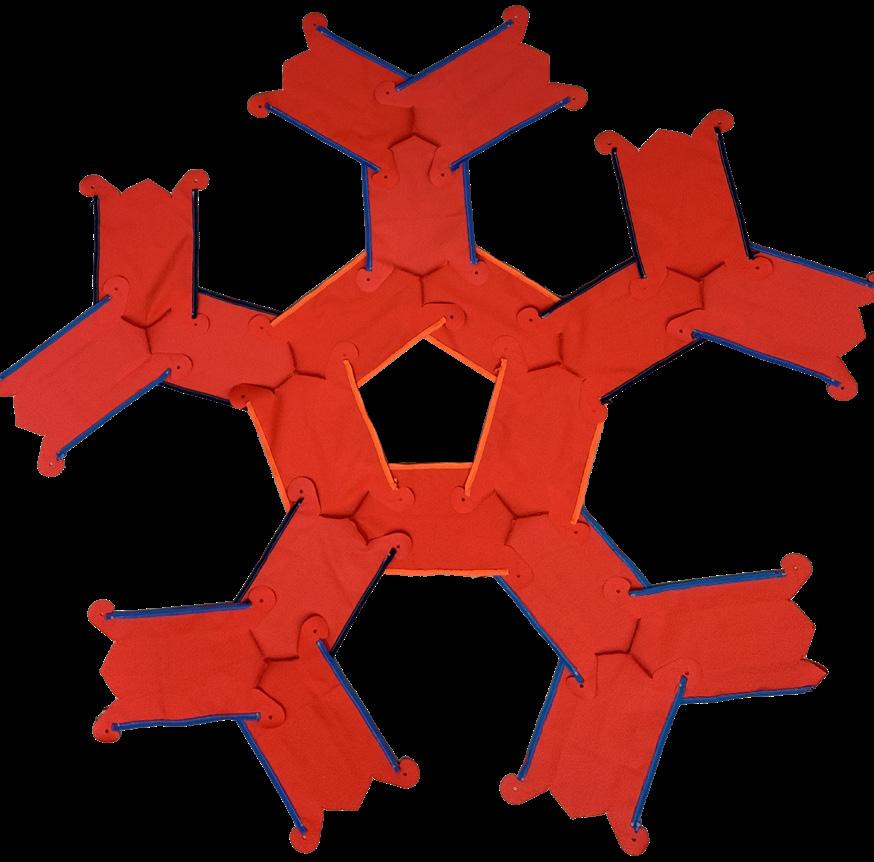
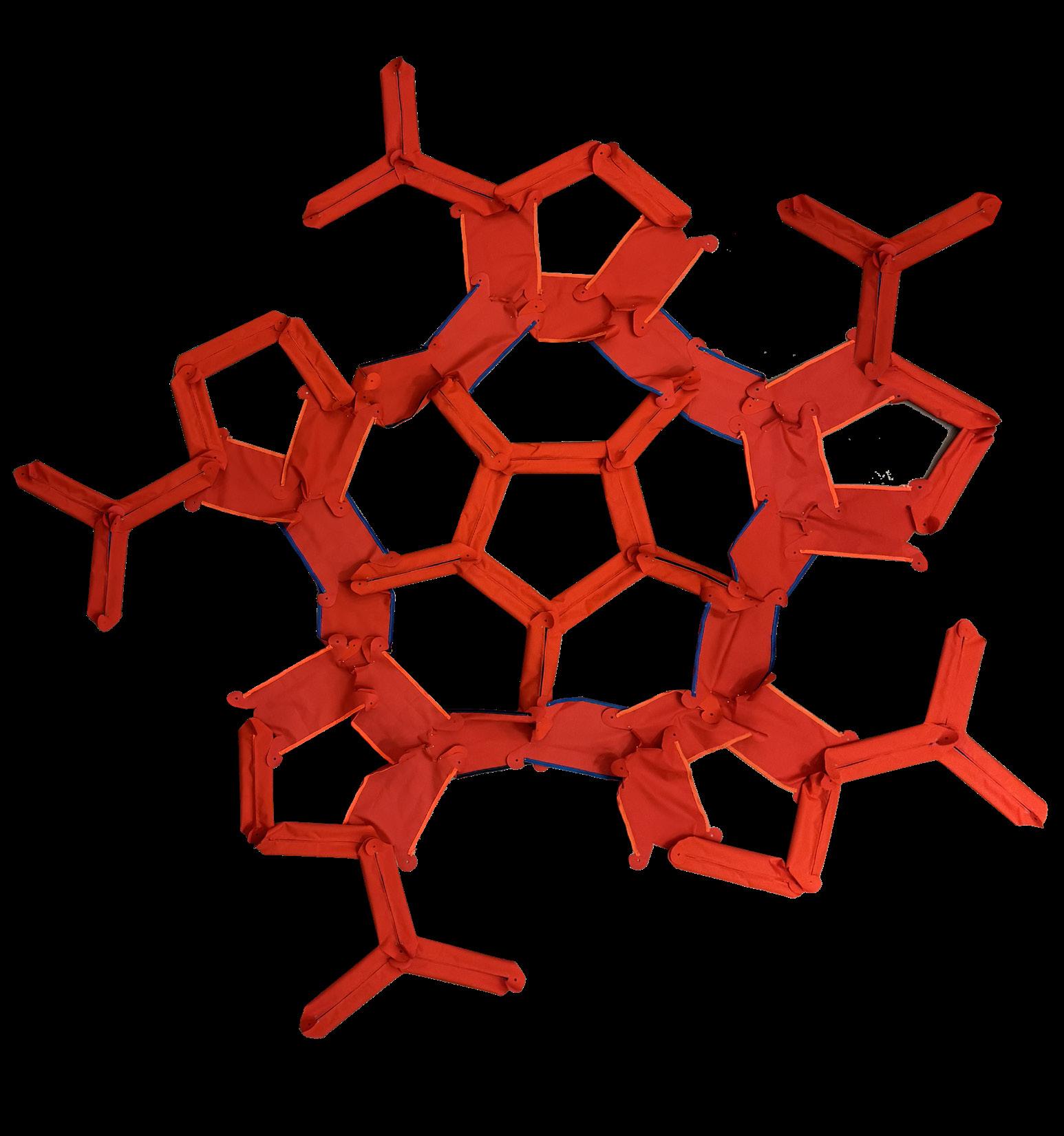
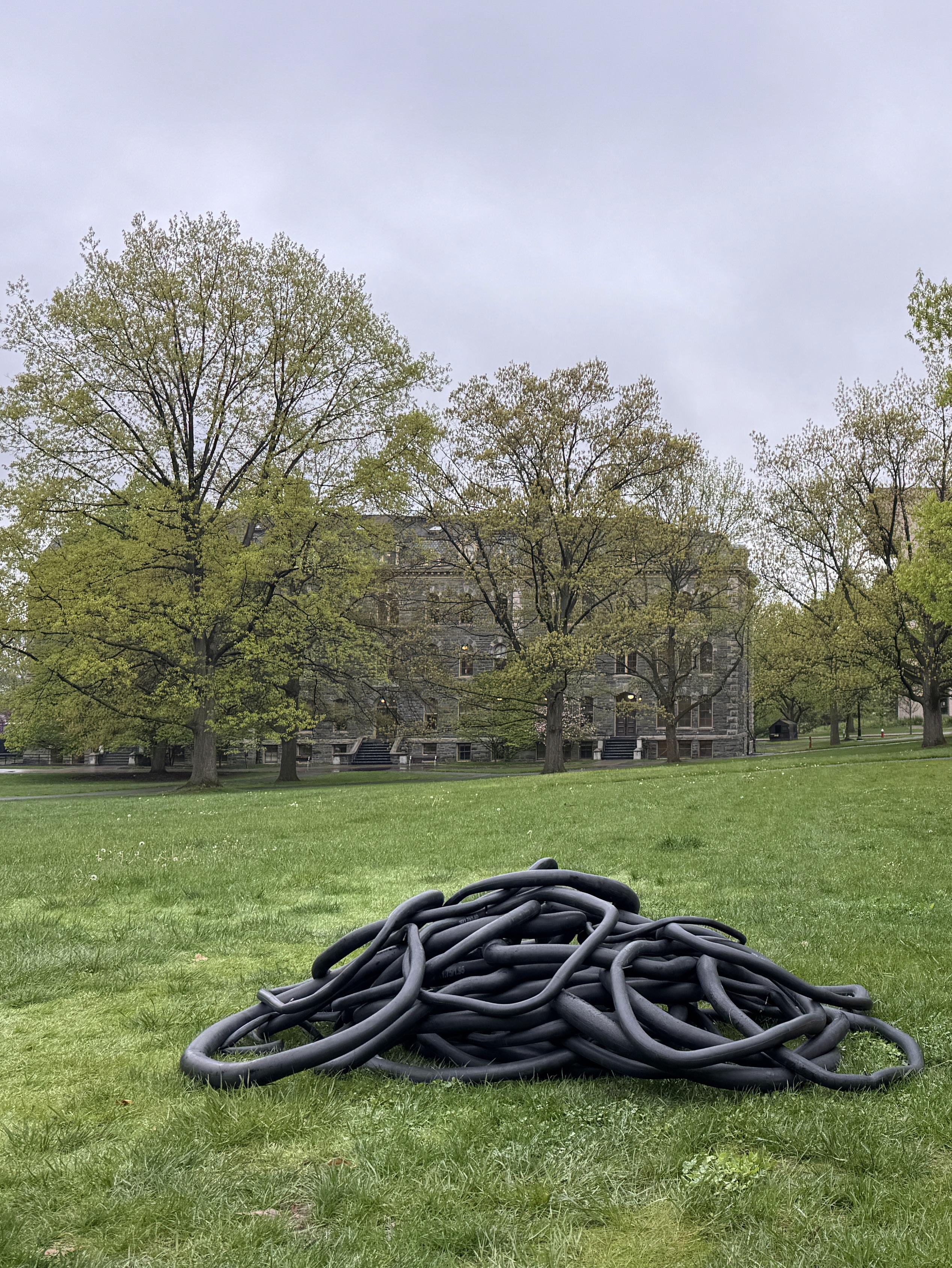
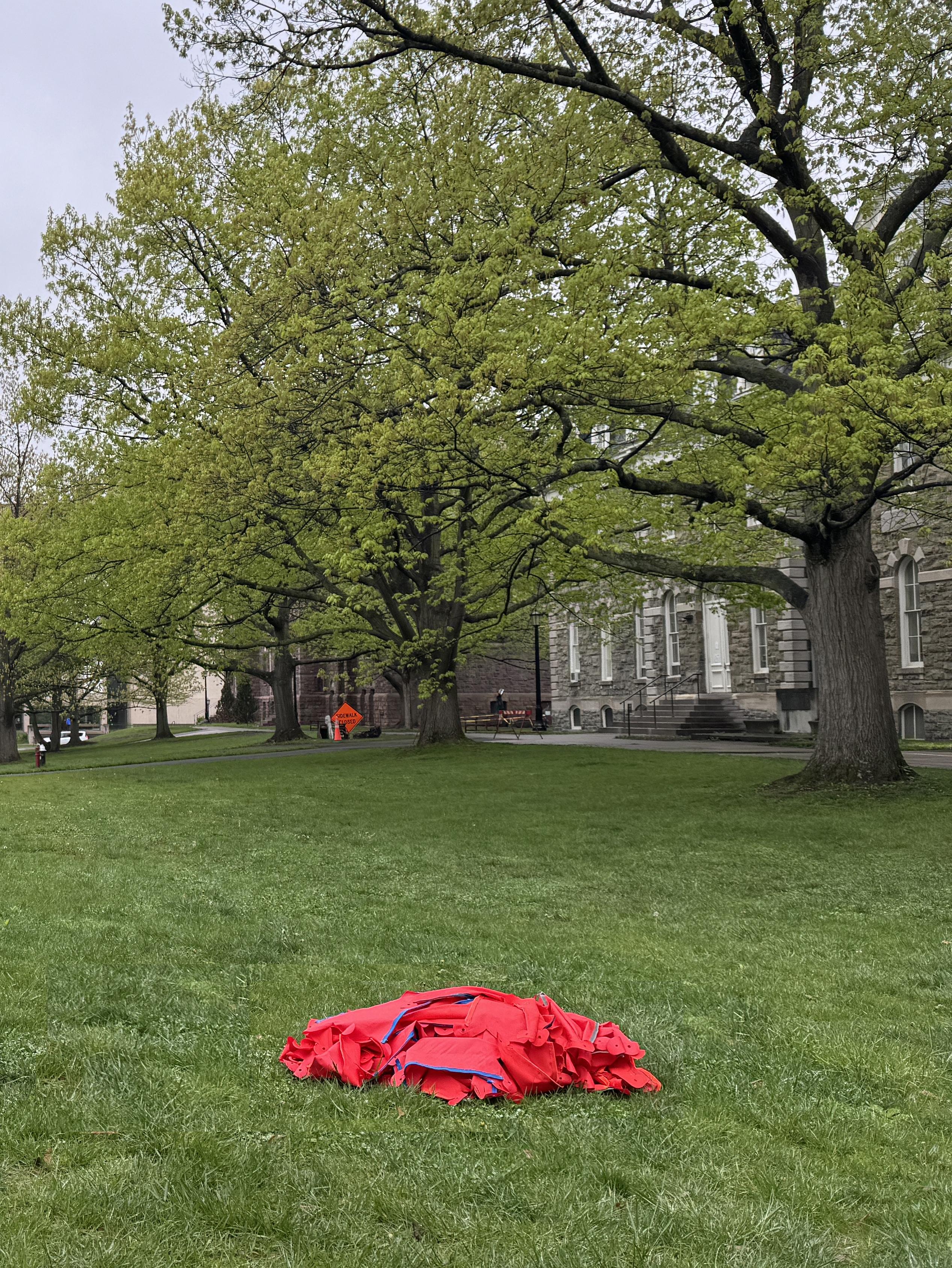



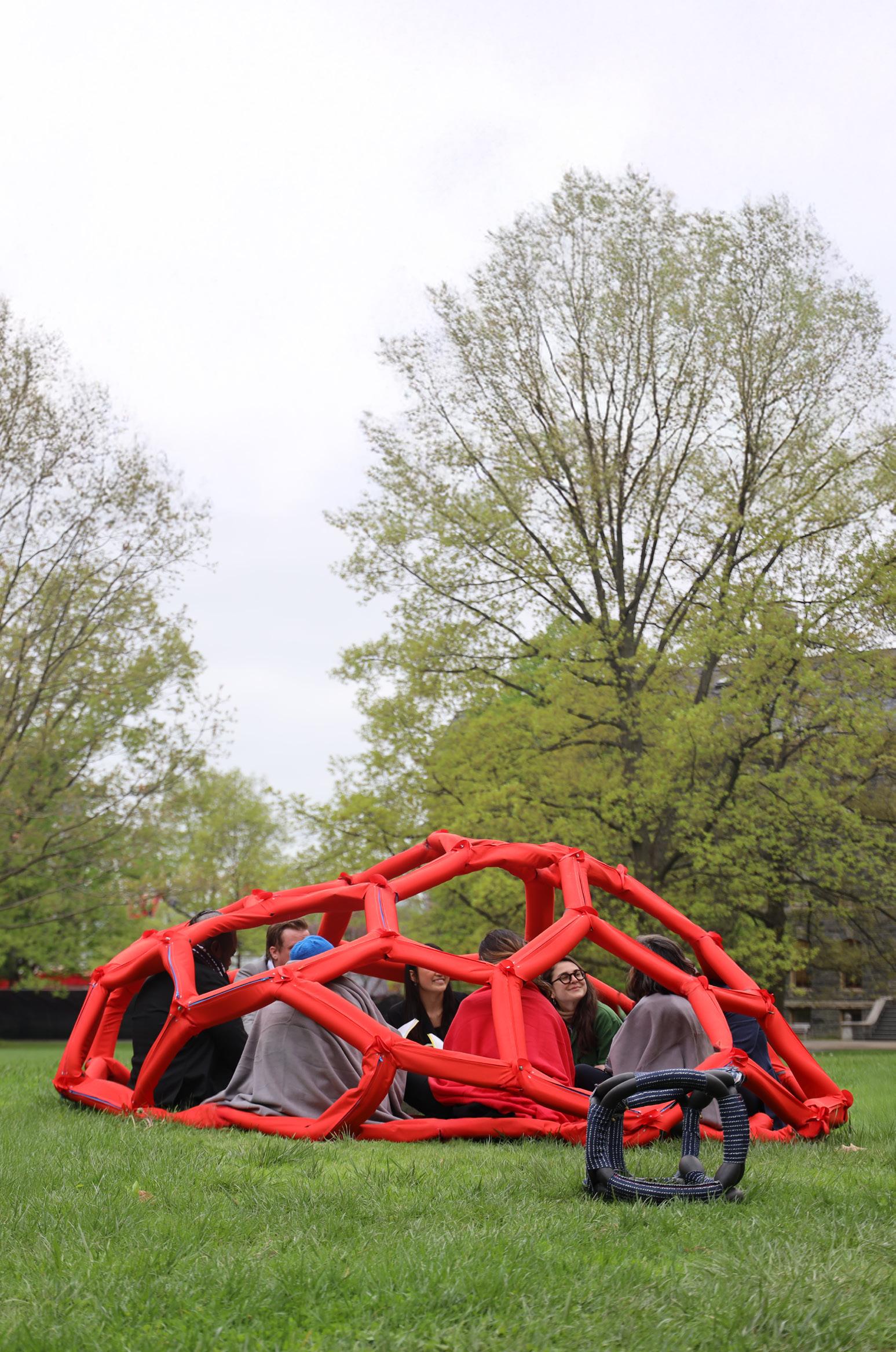

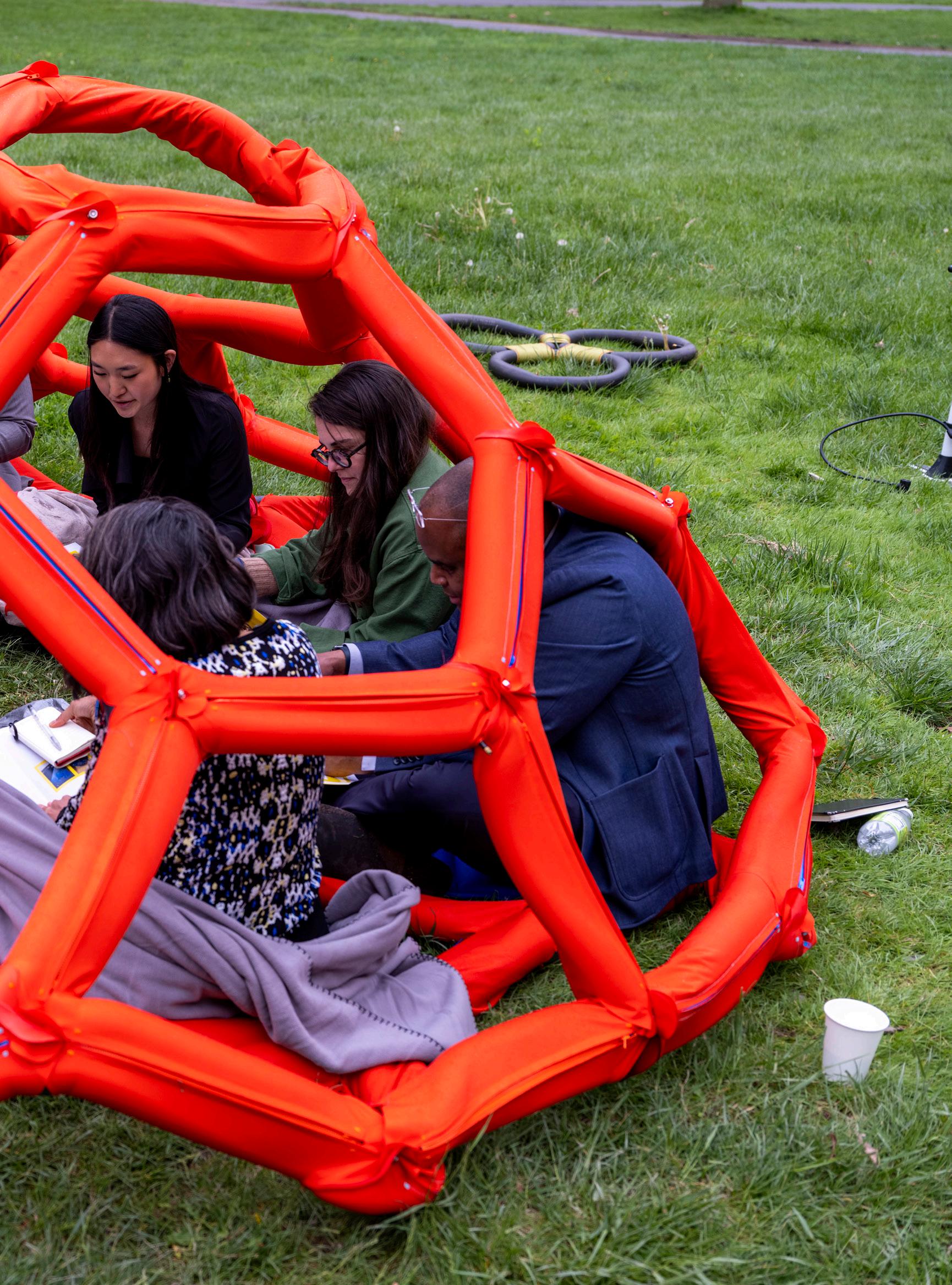
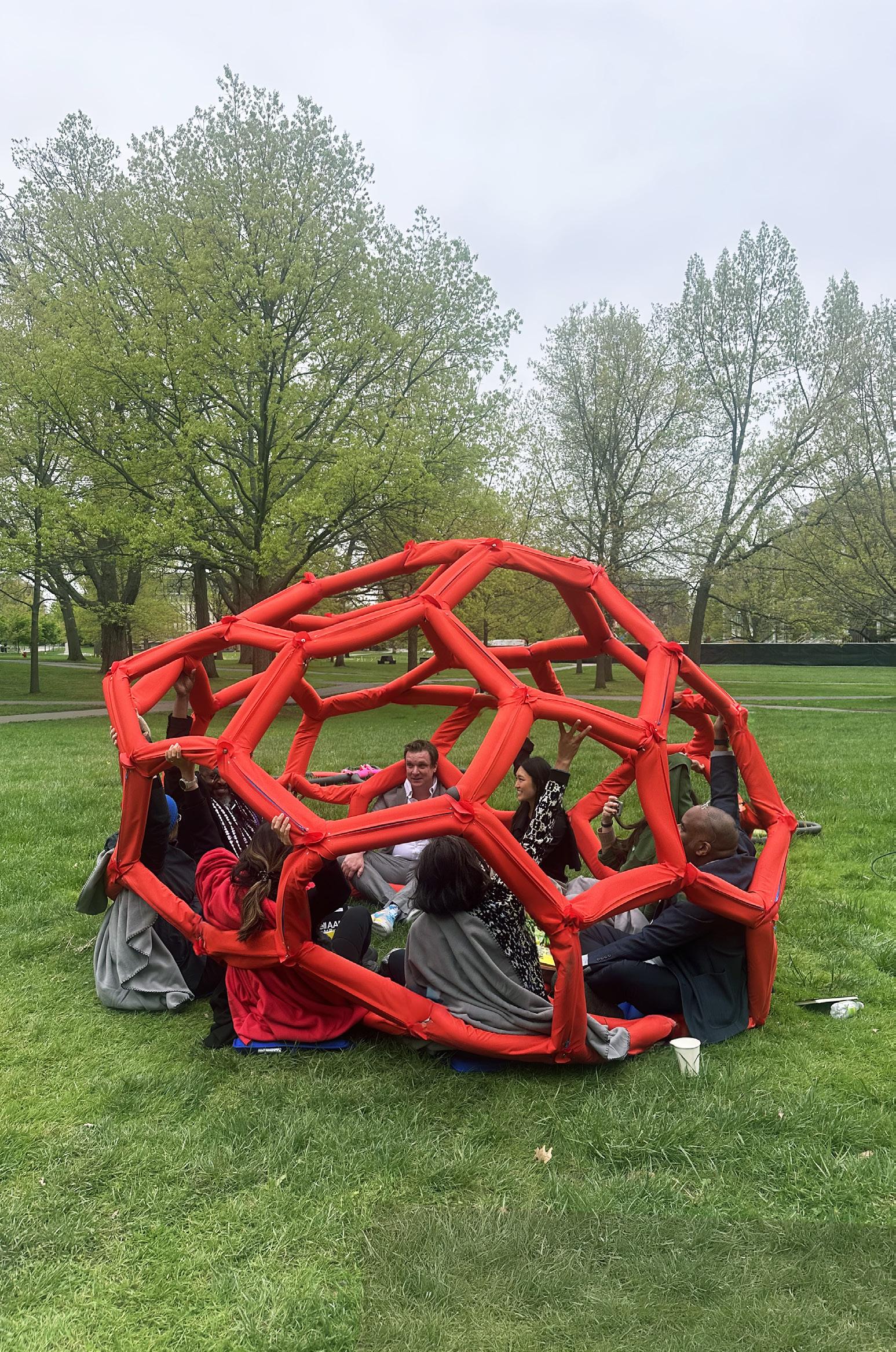
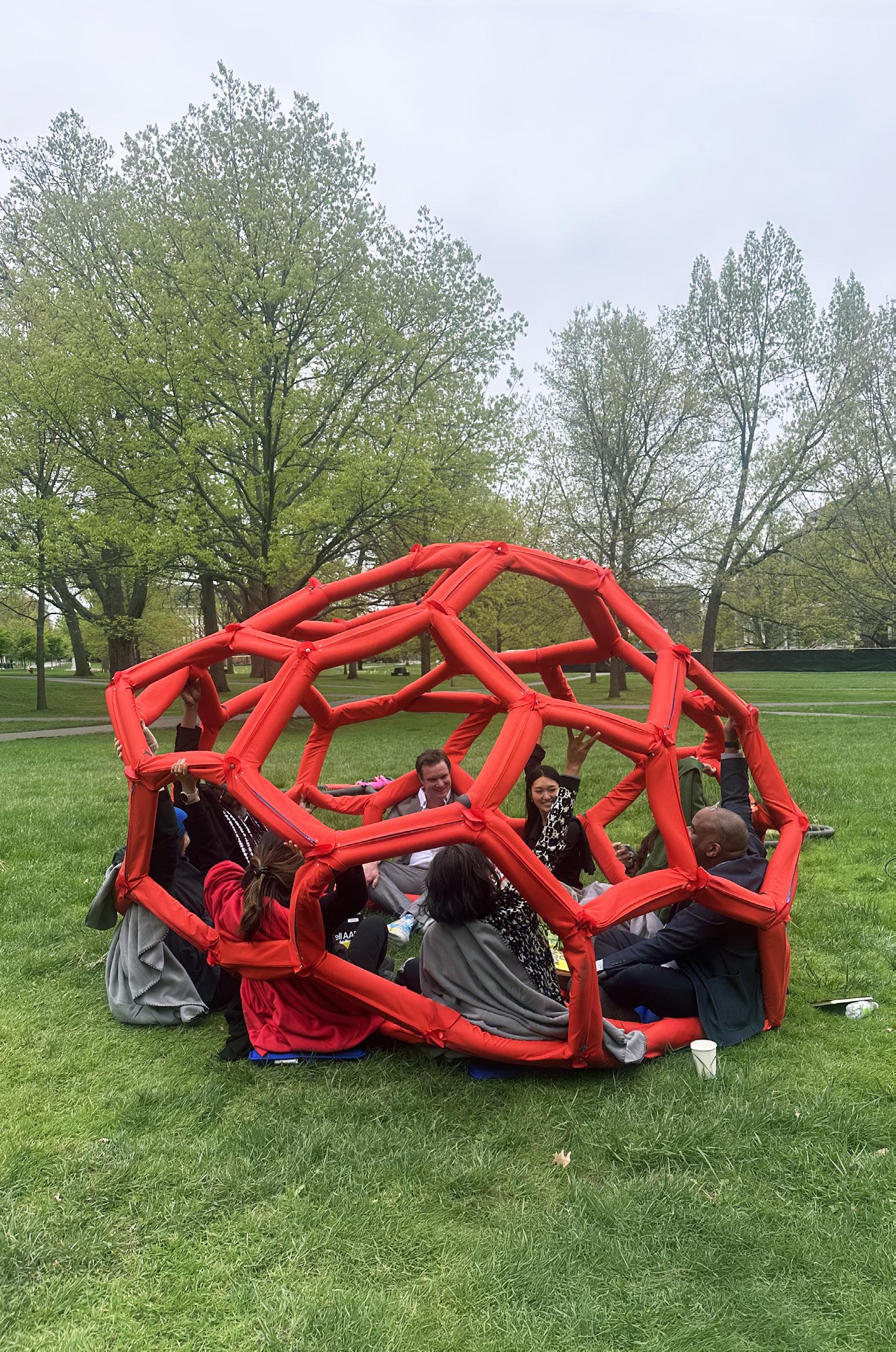
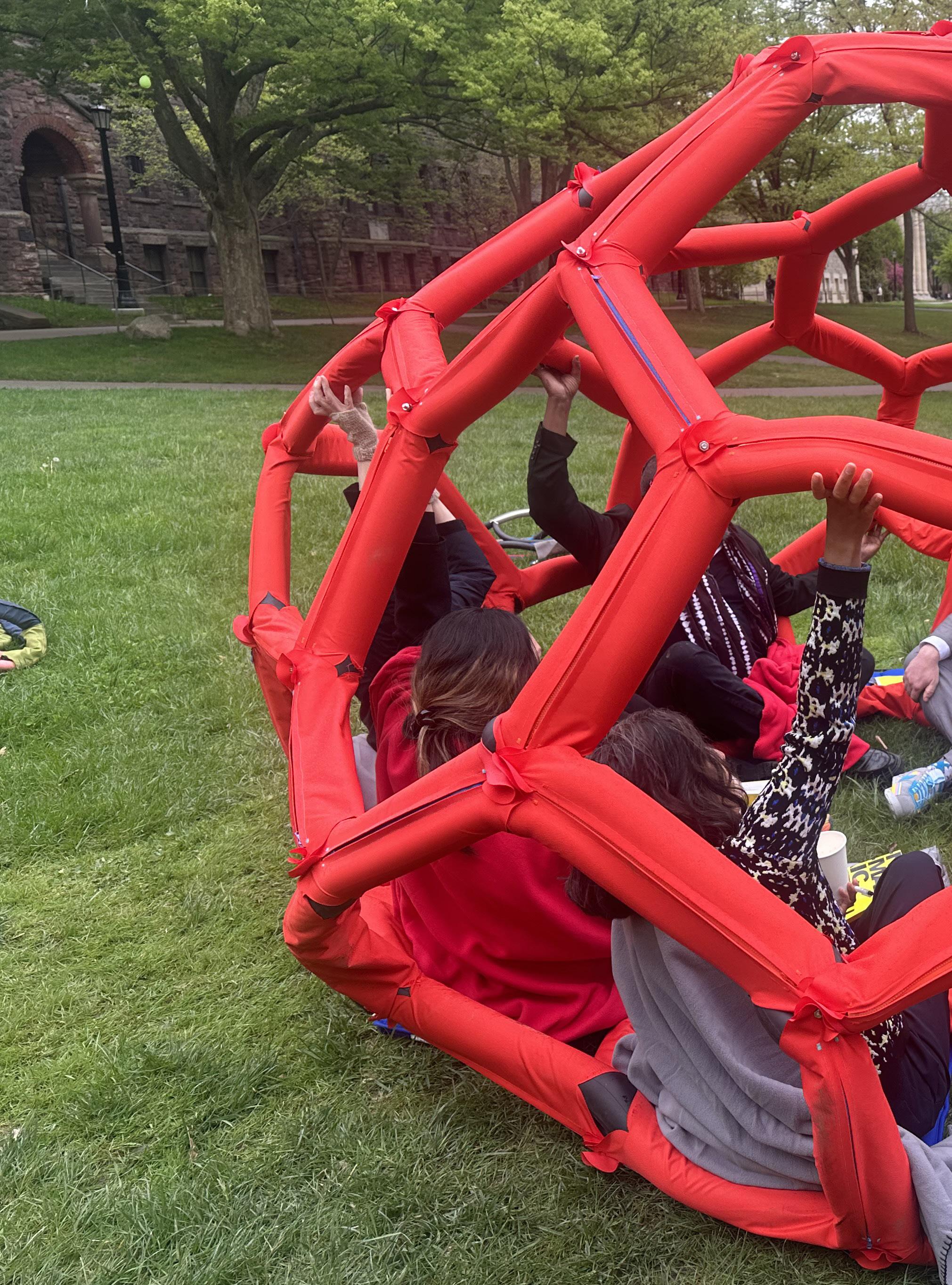
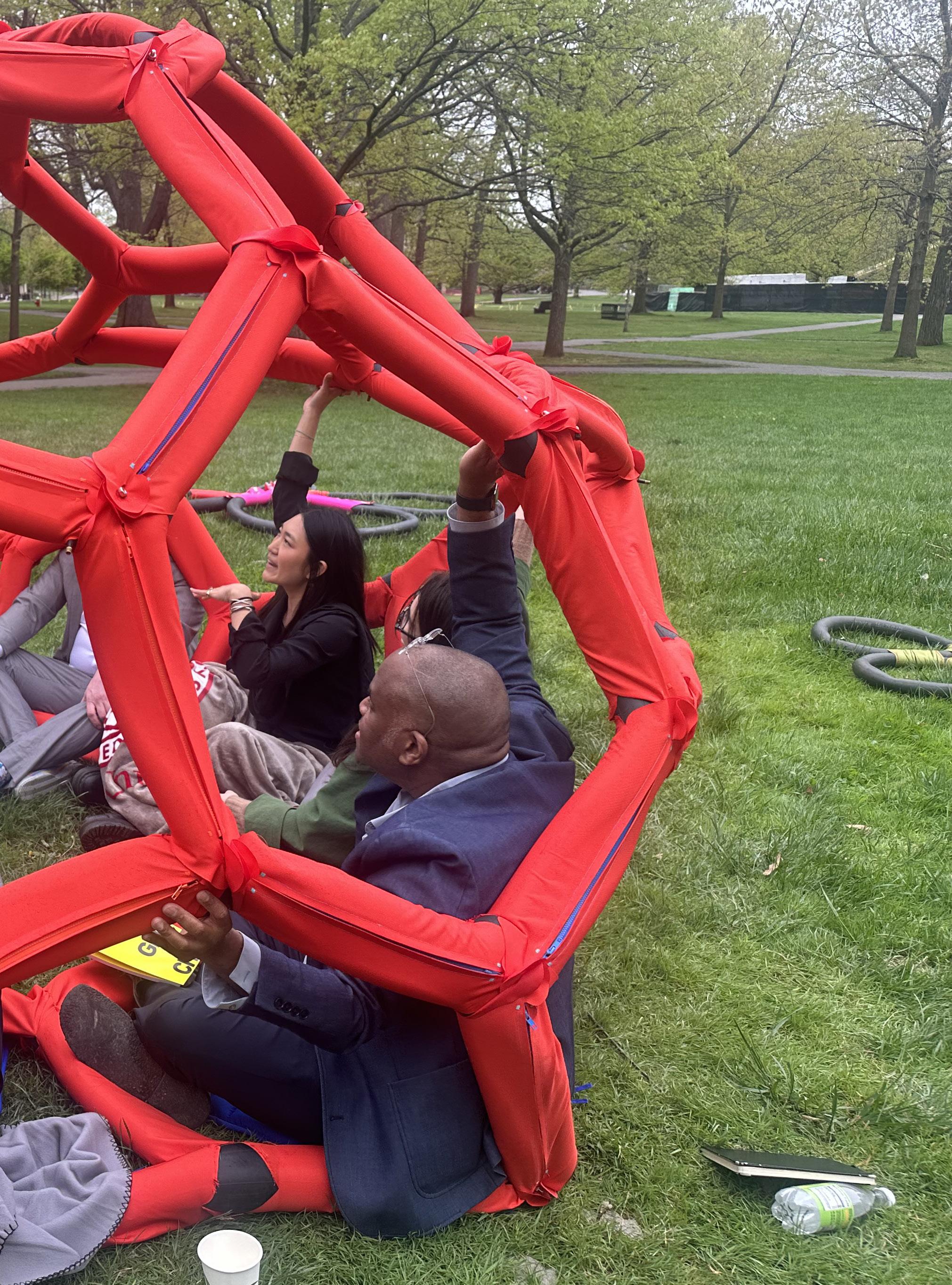


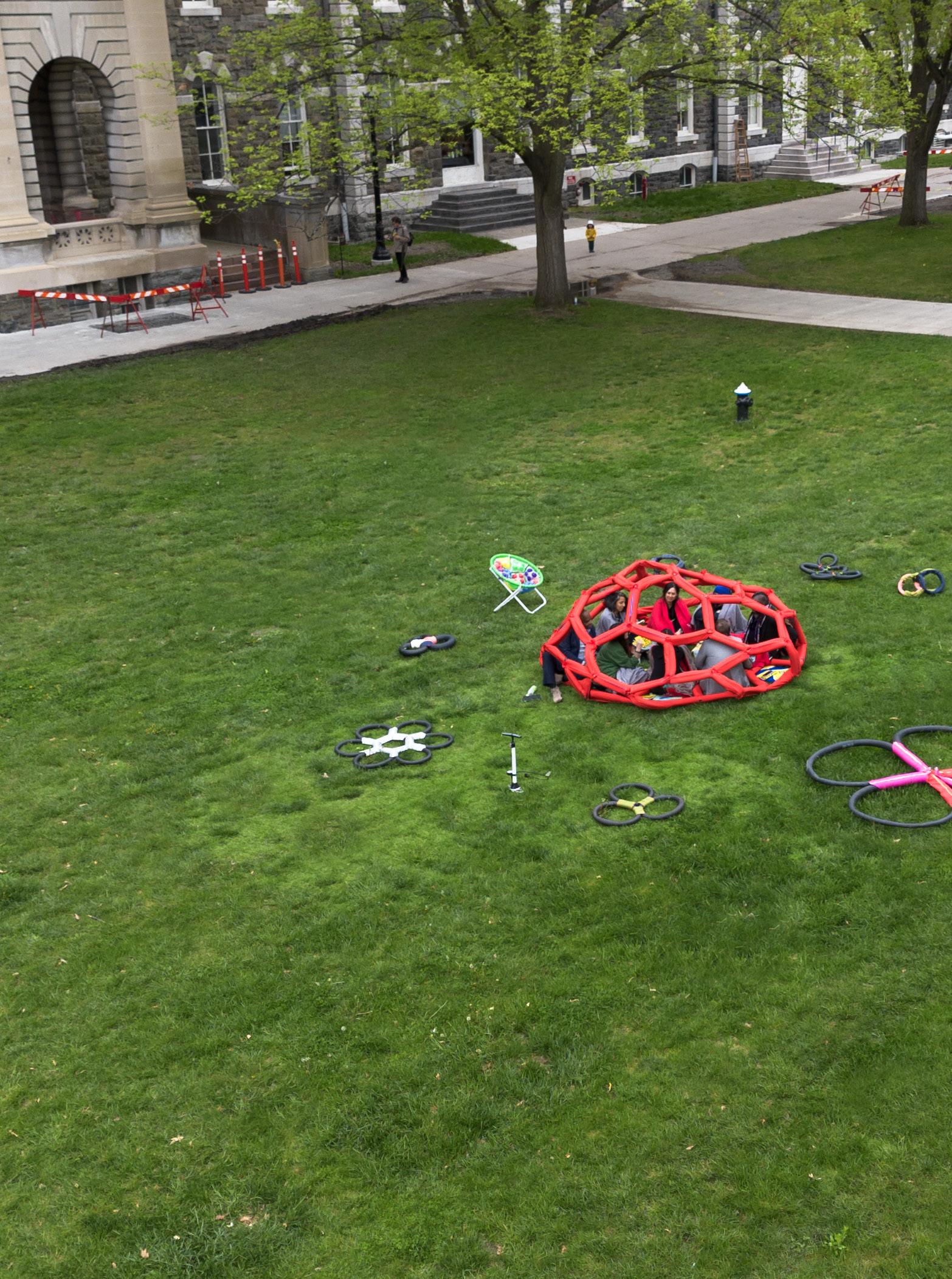
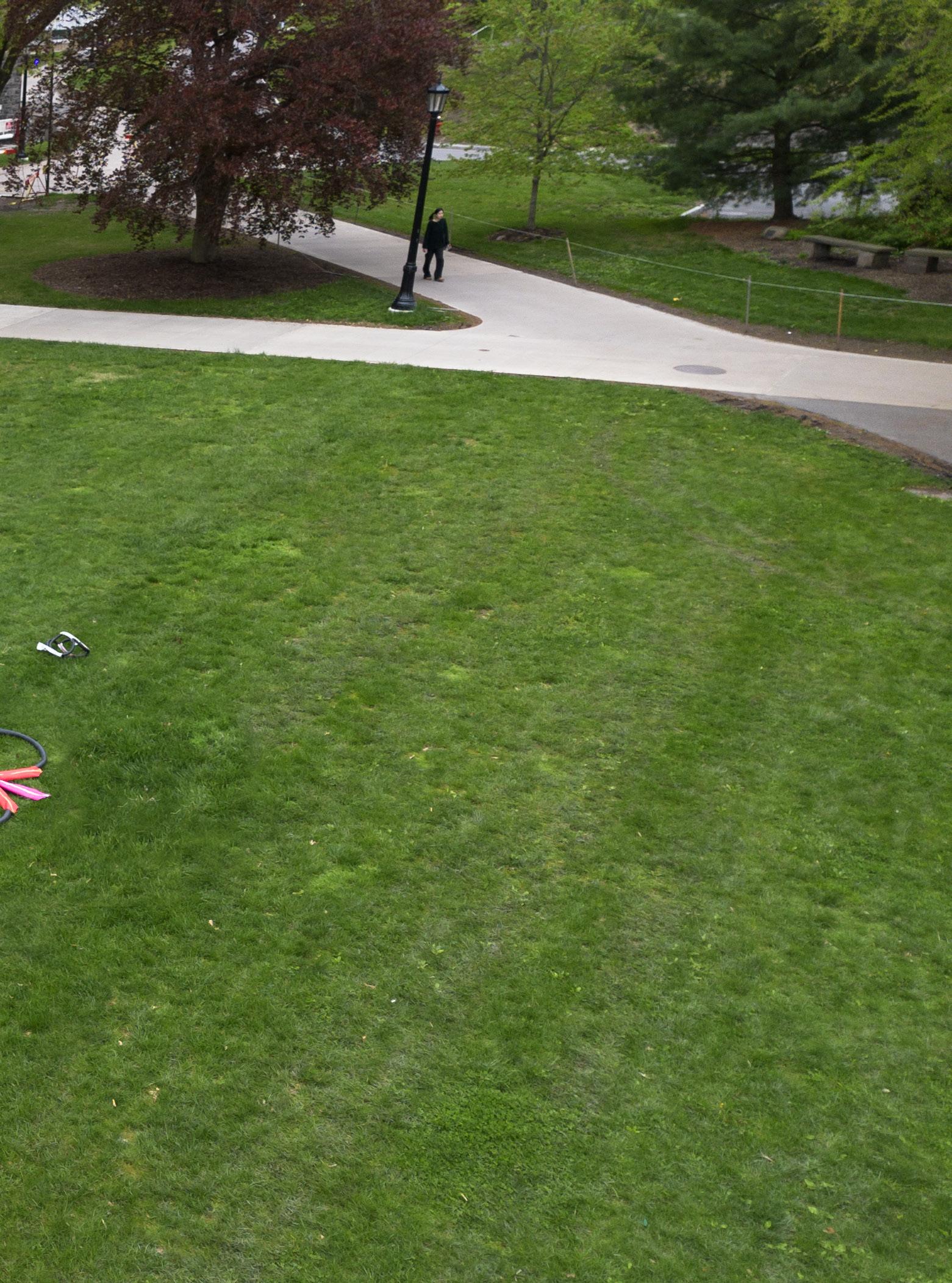
Panel of Critics

AAP Critics

Guest Critics Advisors





chapter ten-
AIRCHIVE
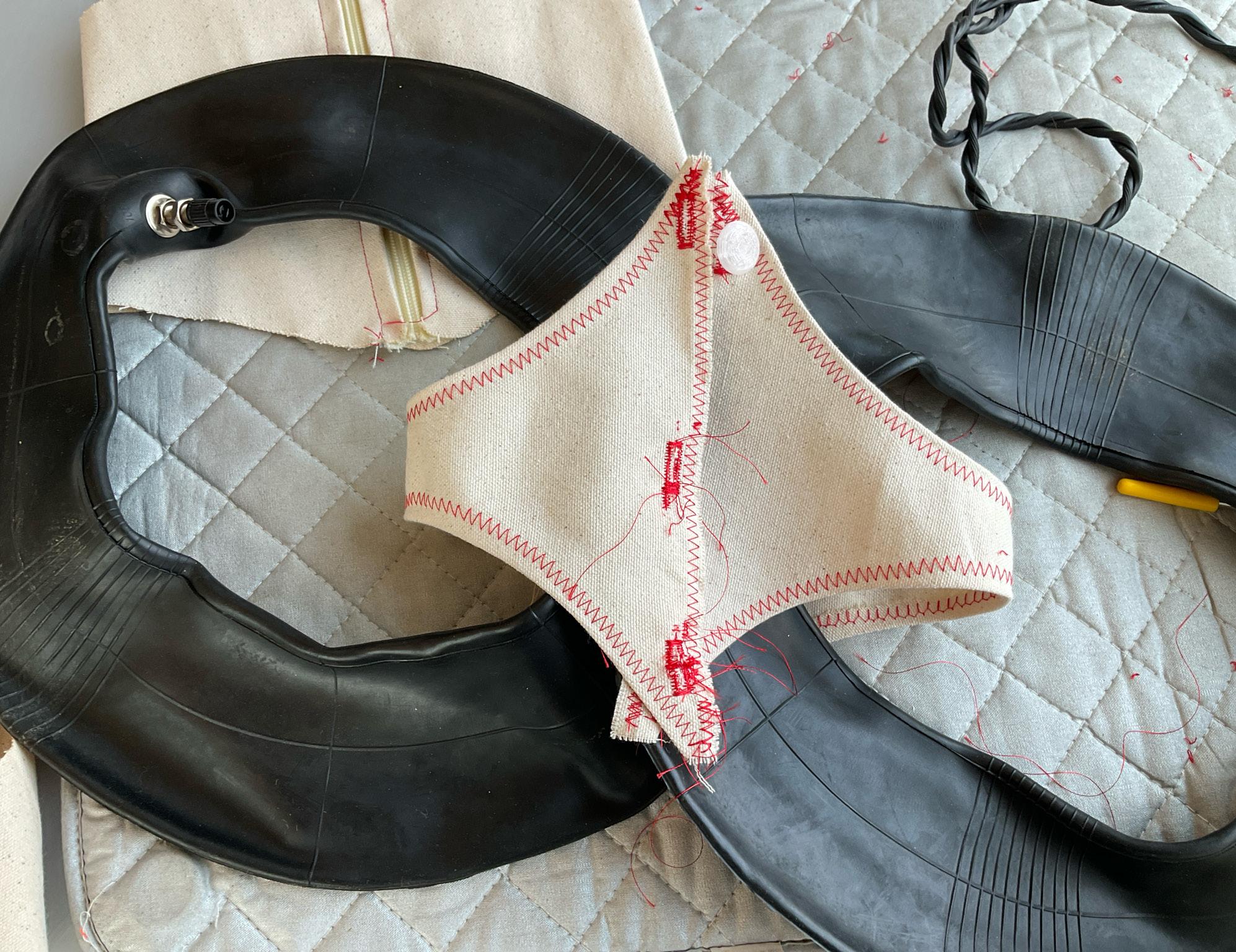
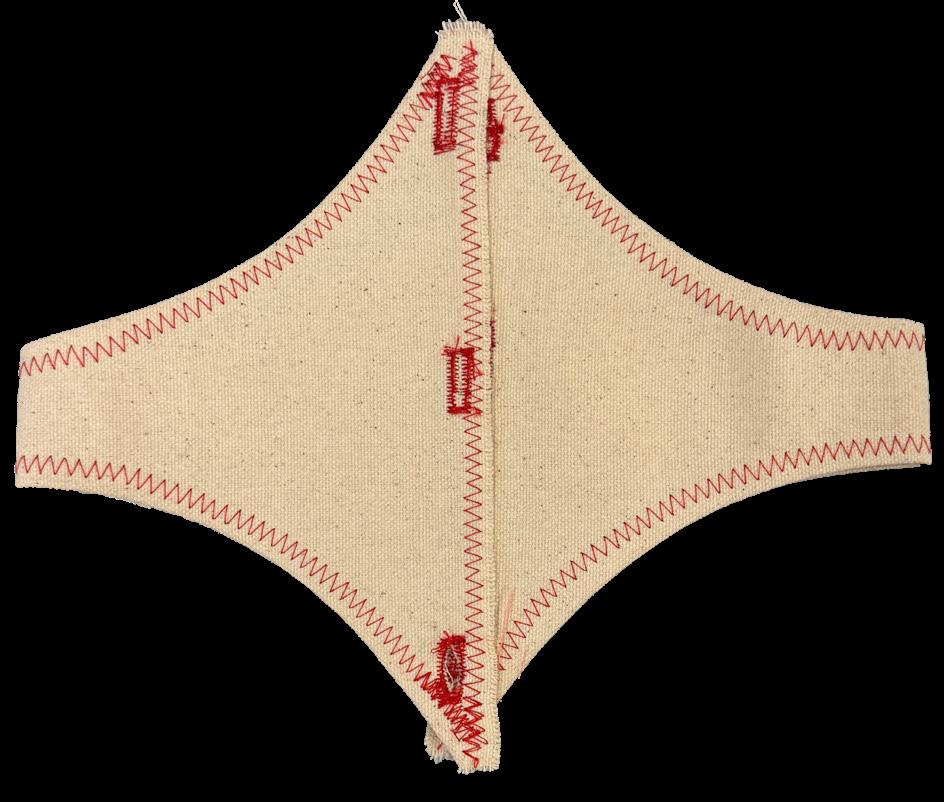
This change ensures that the force is distributed across the stronger axis of the fabric, reducing stress on the seam
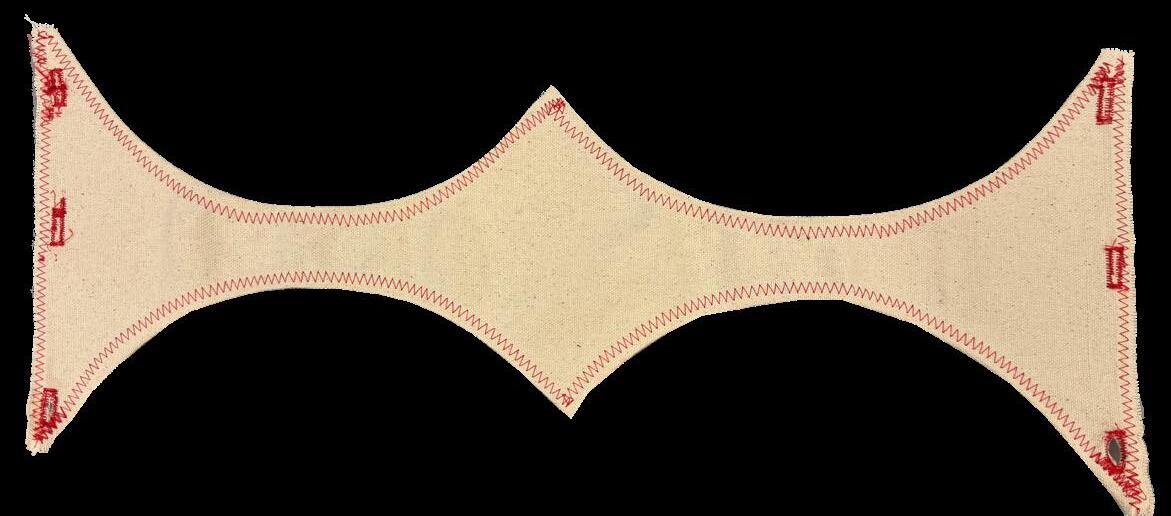
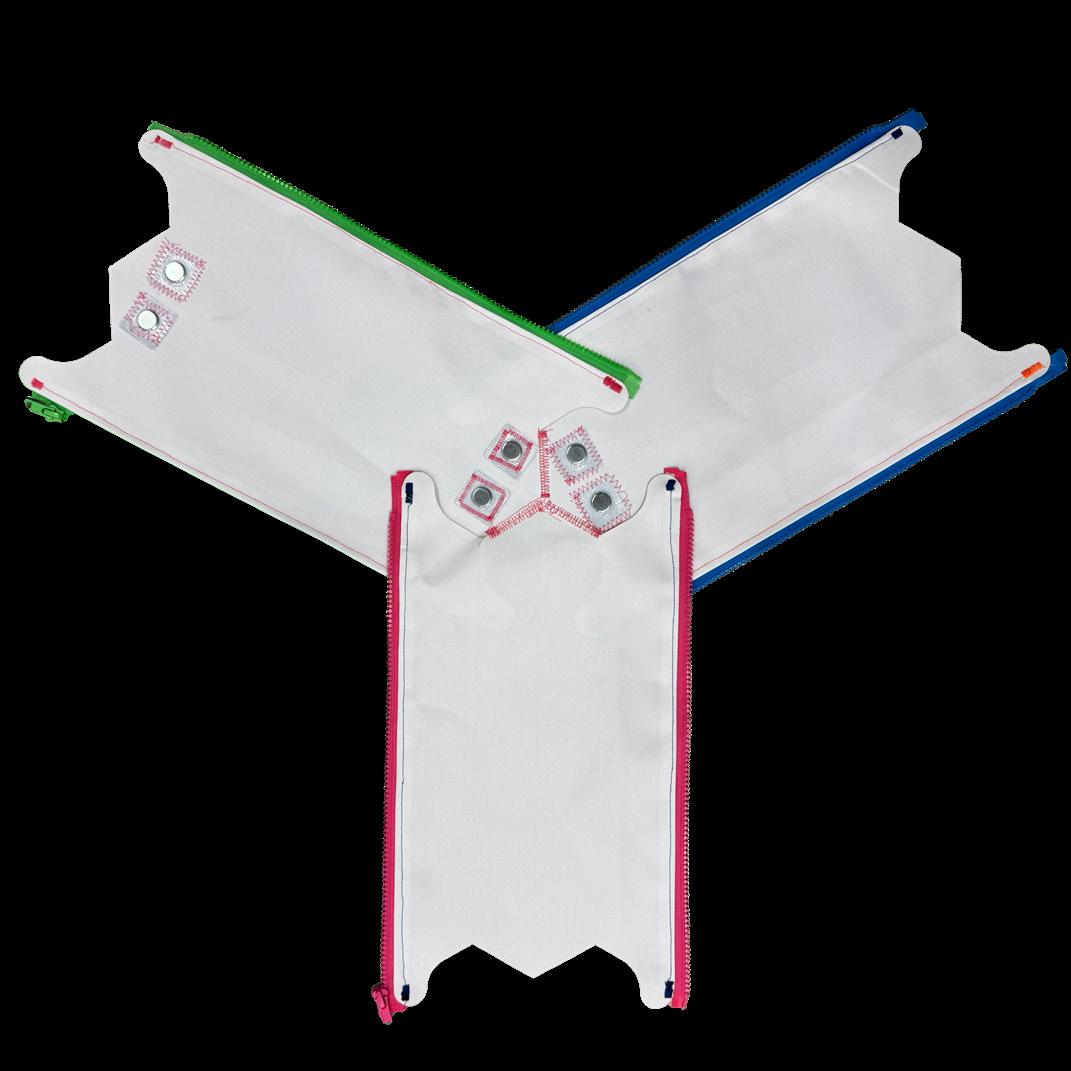

magnets and snap buttons to snap on enclosure


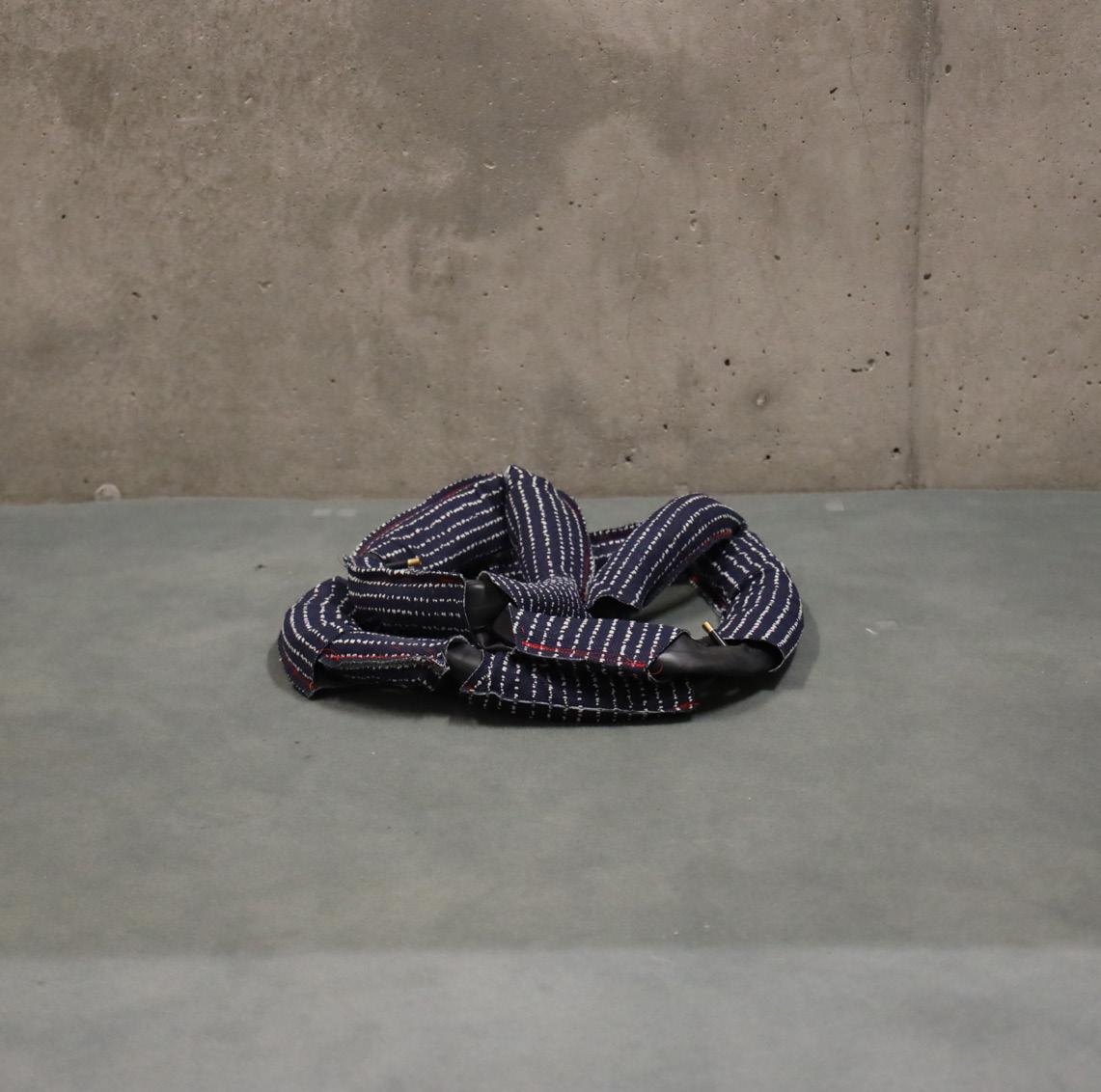


Polypropylene Blend
Content:
71.4% Polypropylene (Filament)
28.6% Polyester (Filament)
A Material doesn’t fray when cut
Cube taking form
Corner connection needed B C
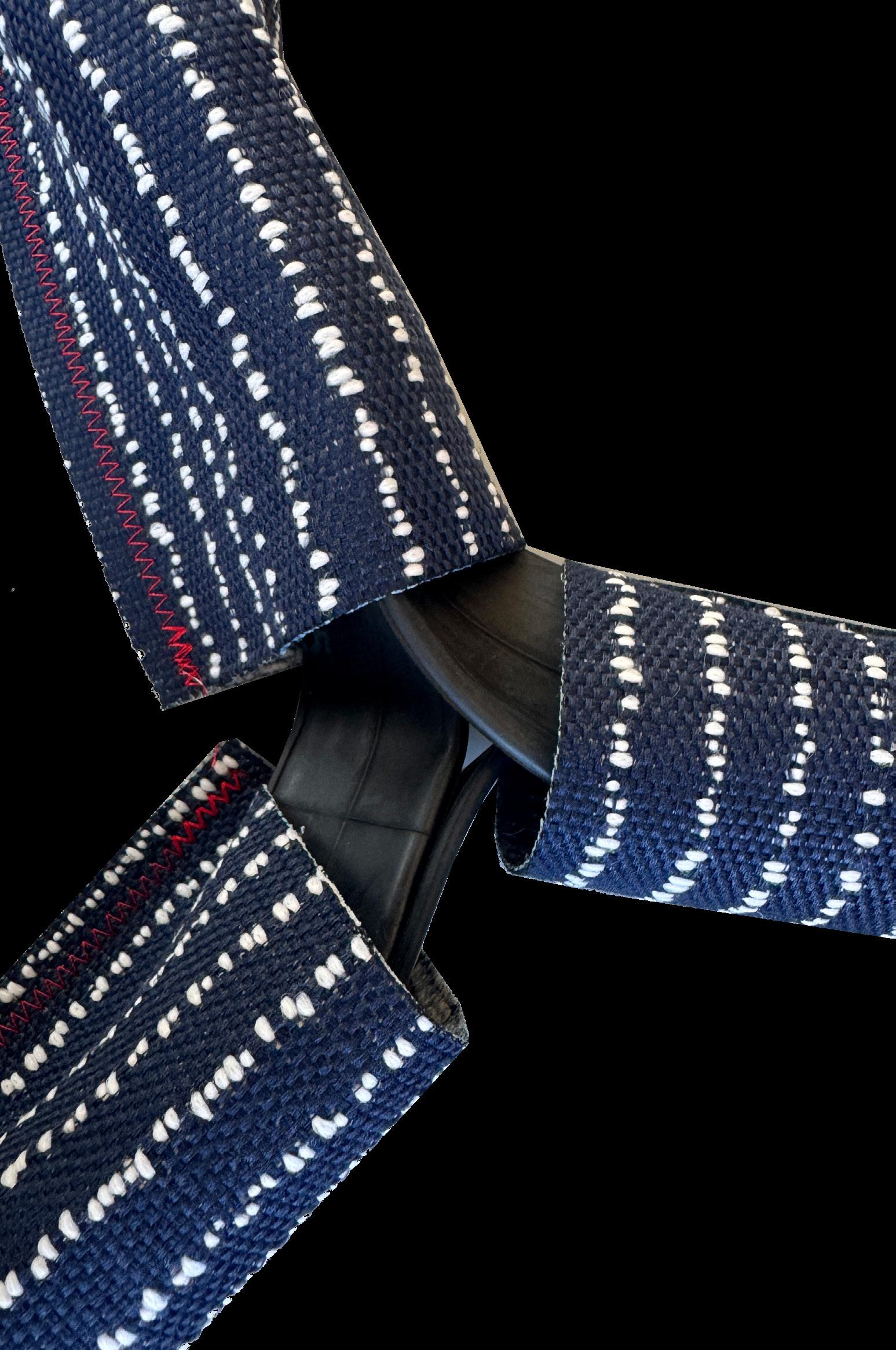
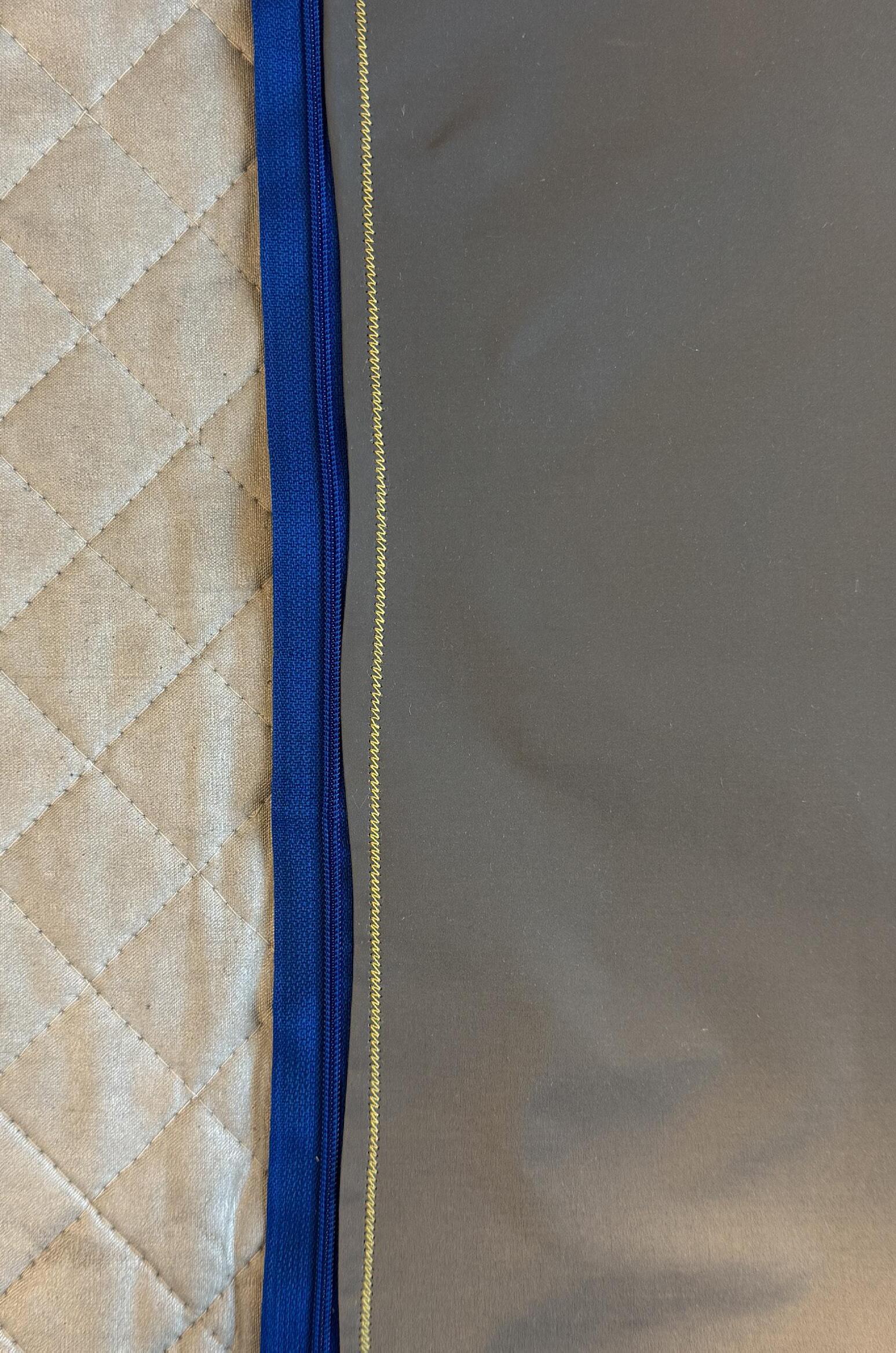


Reflective Utility Material

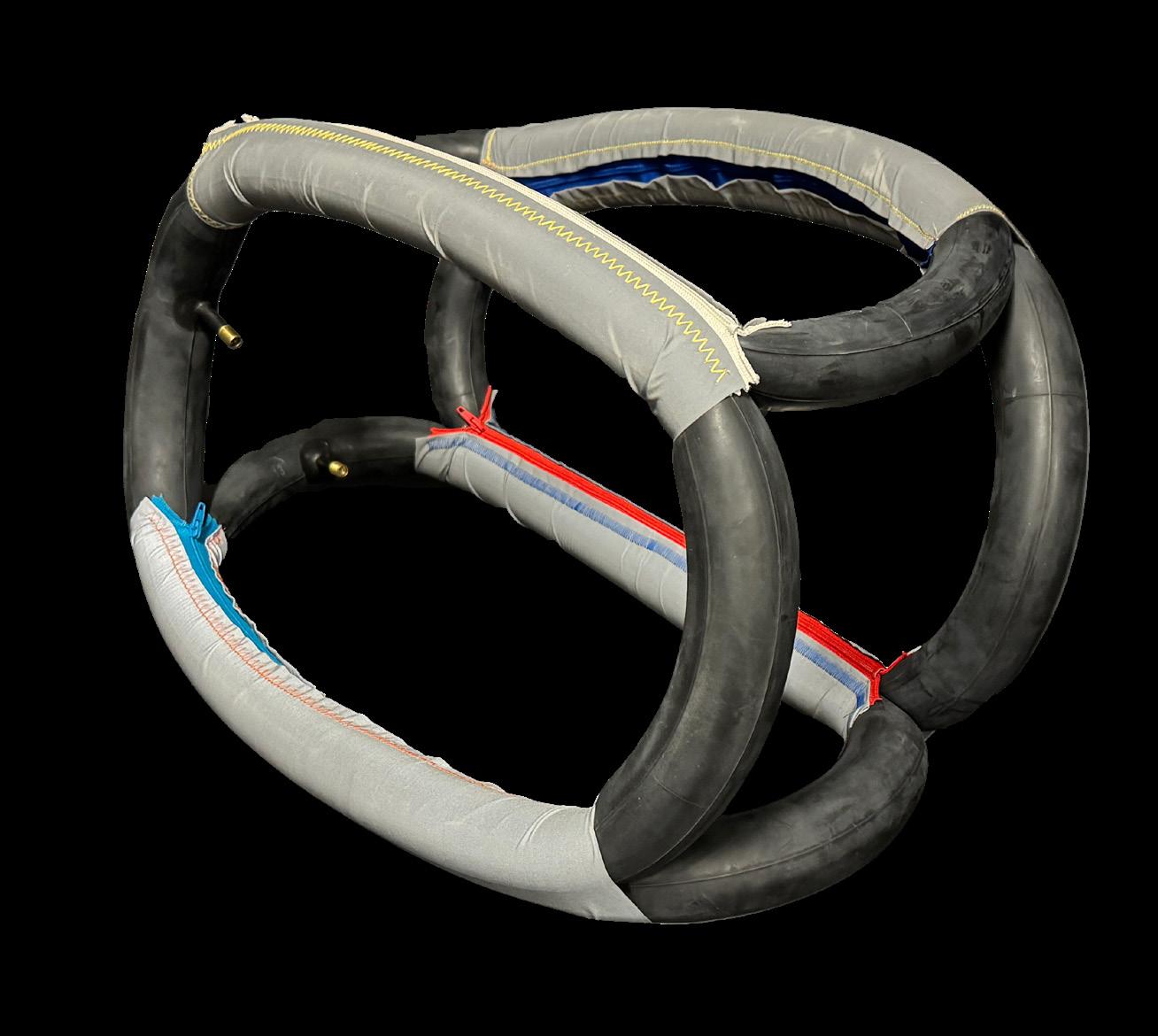

A Day and night quality difference
need for corner detail connection
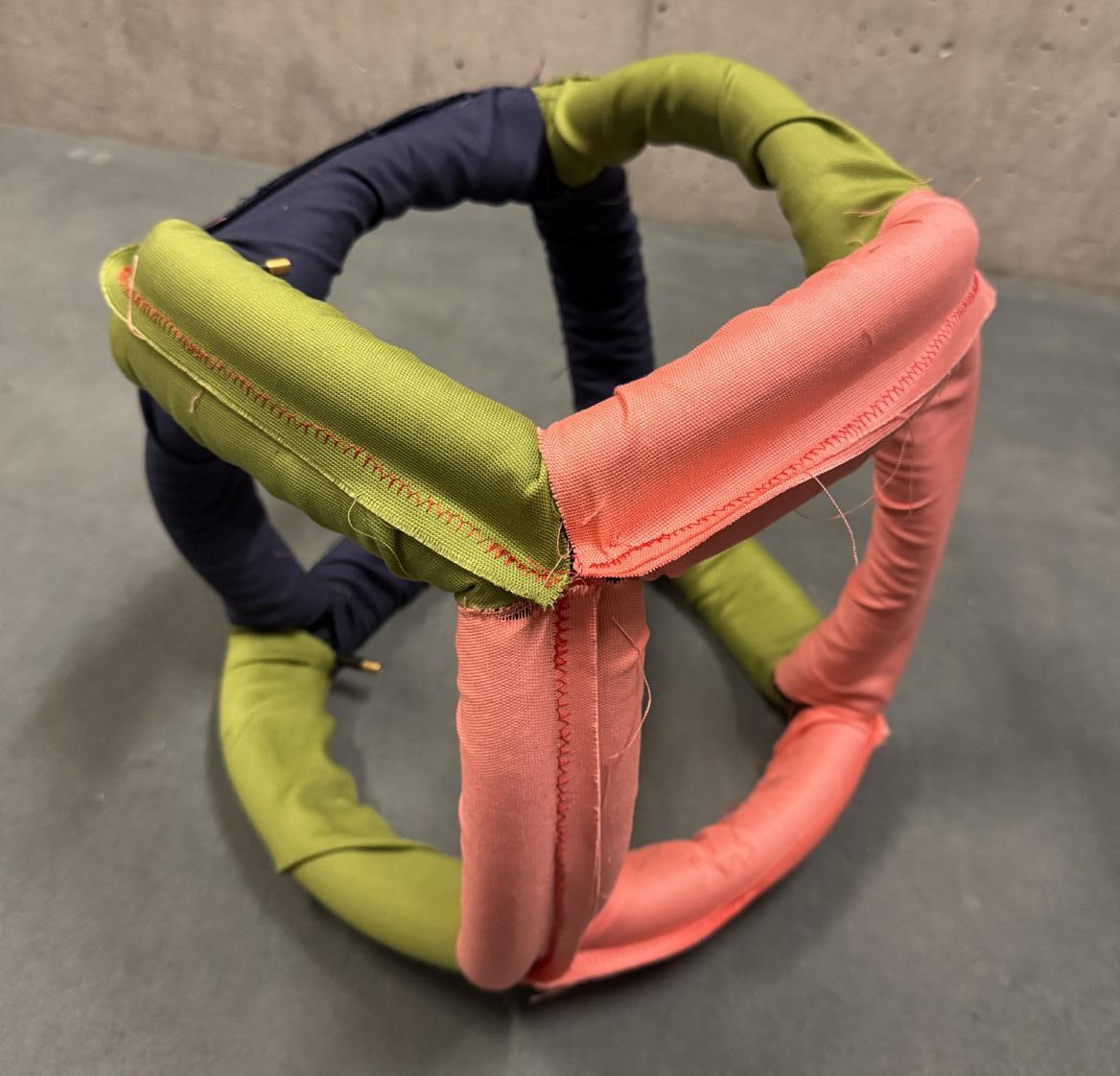

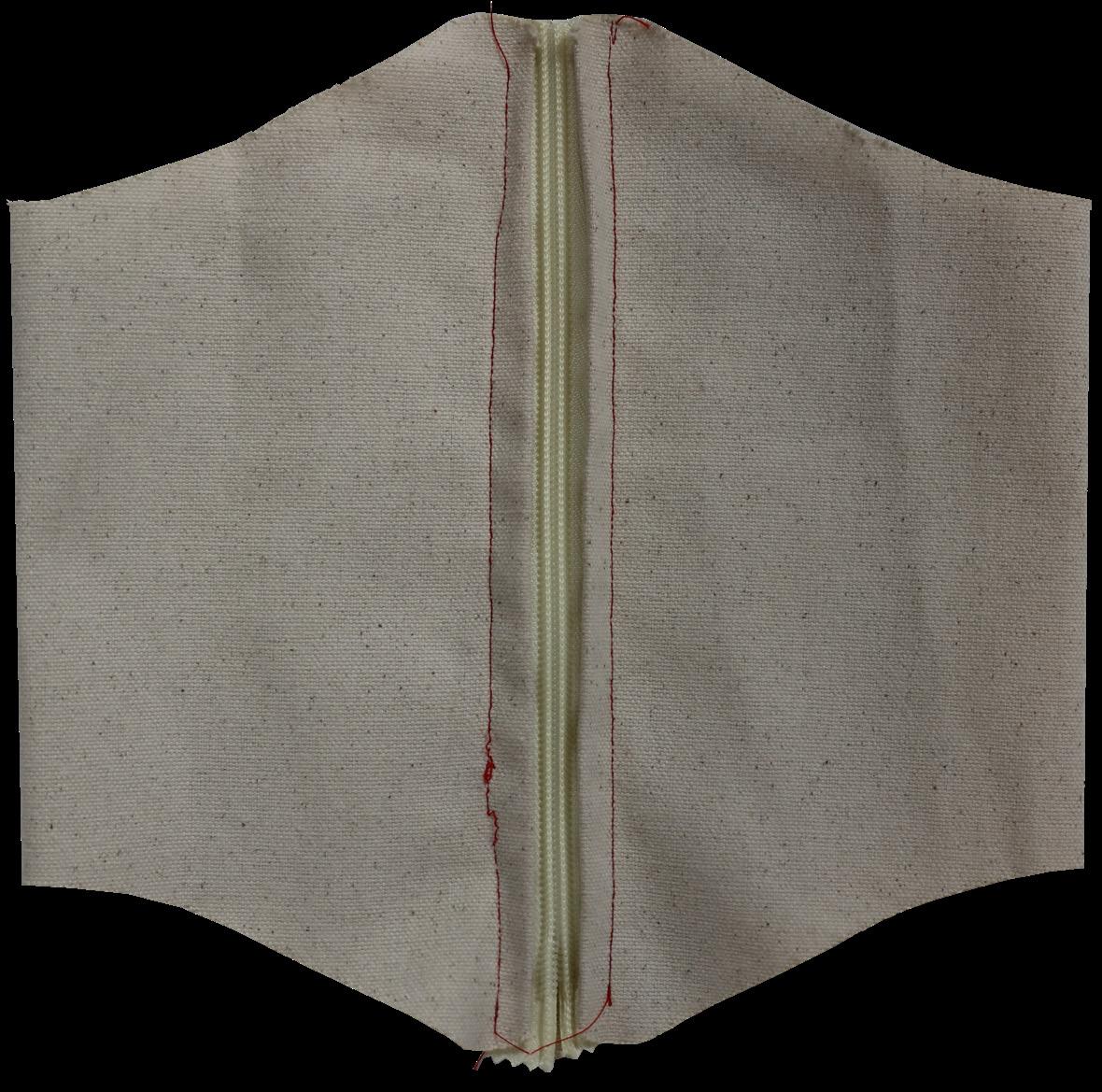


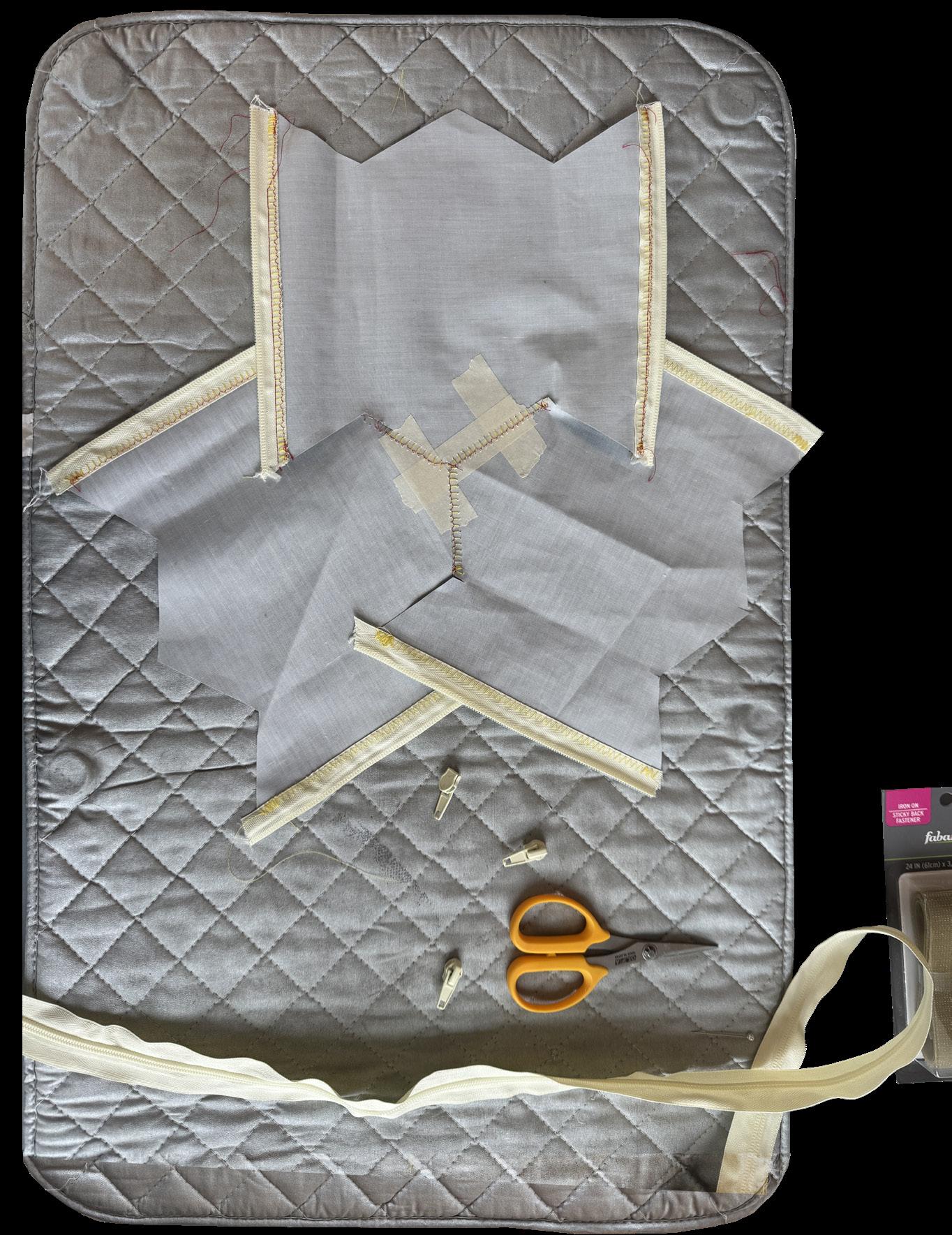
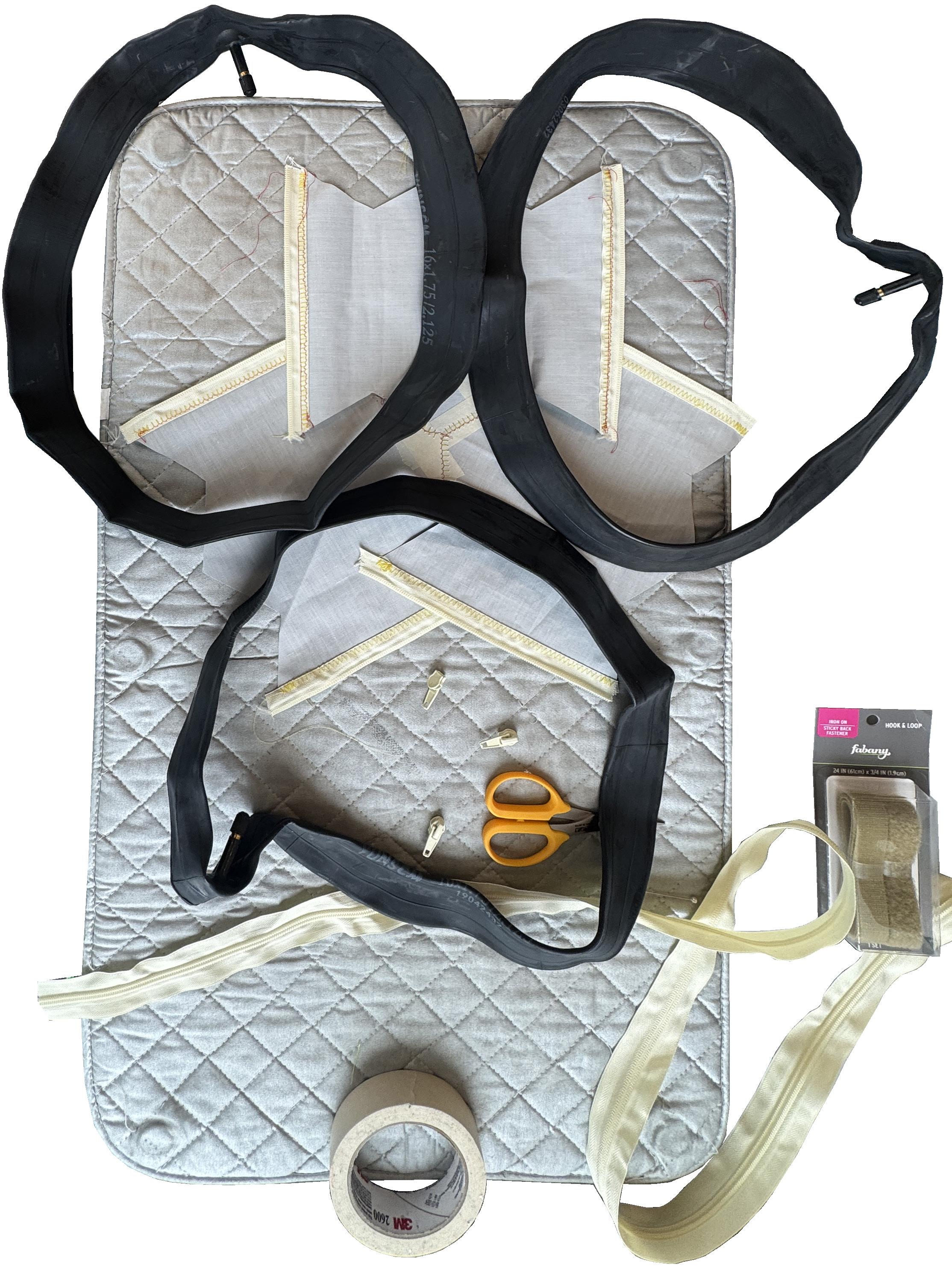
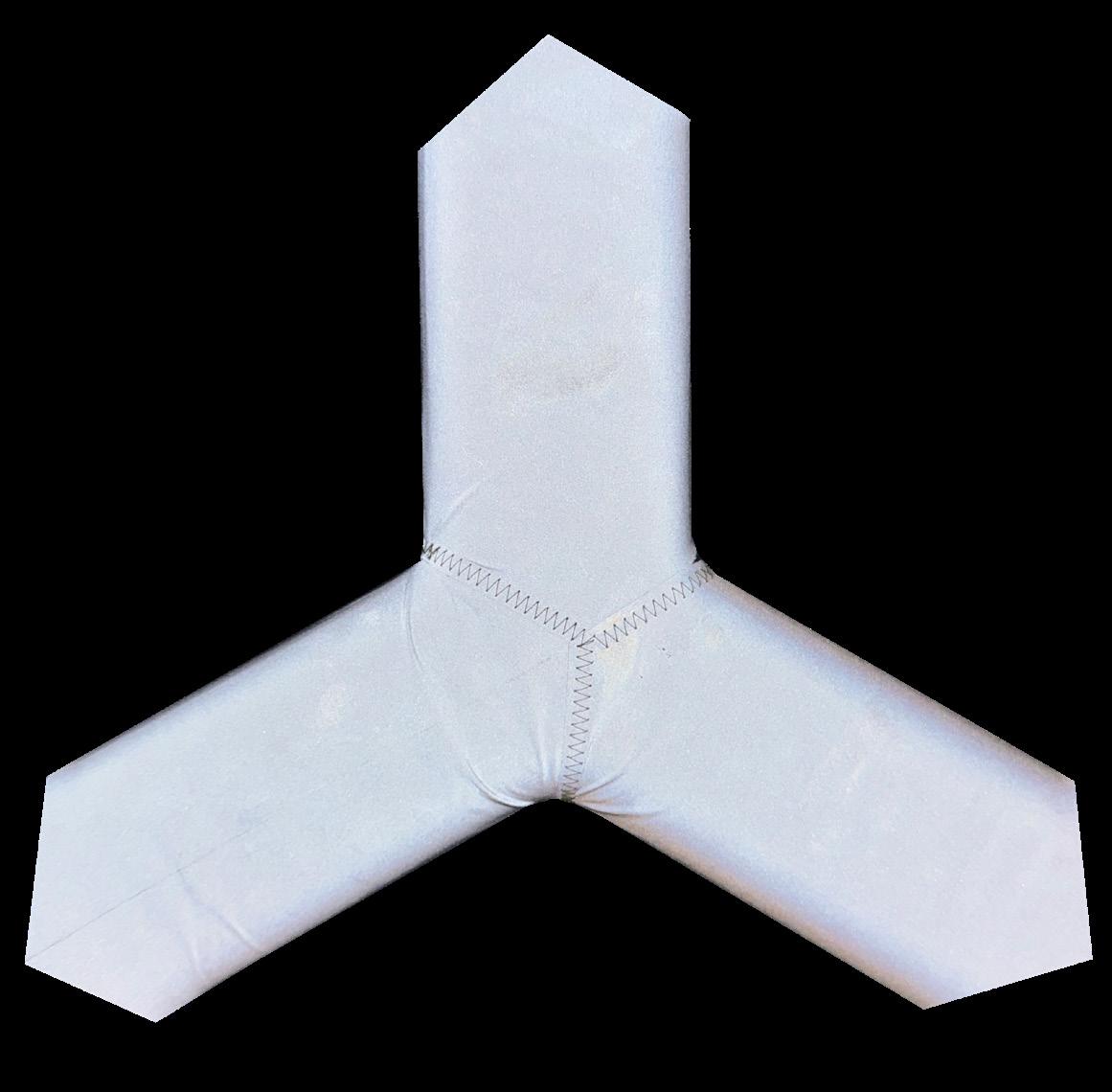
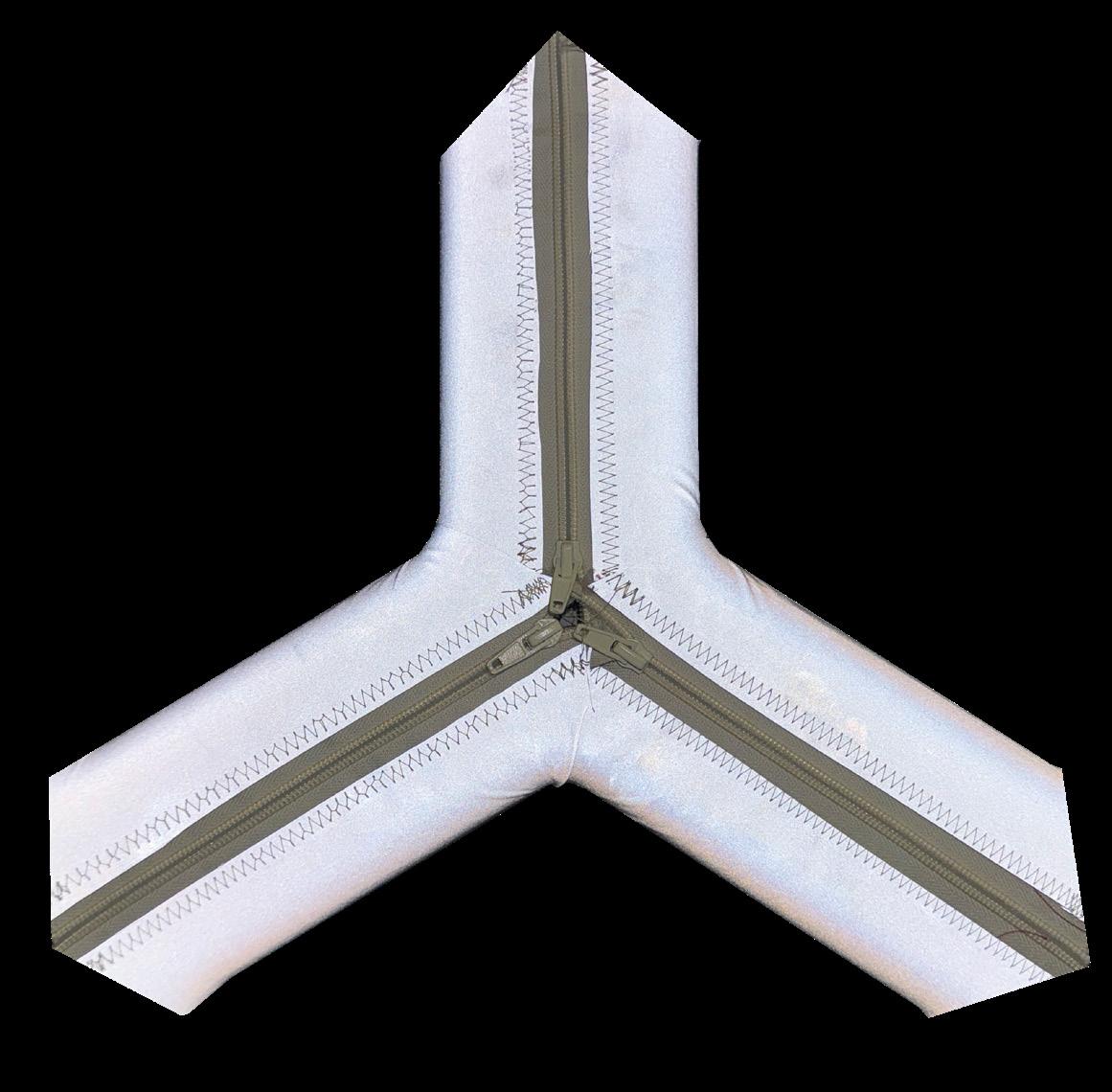
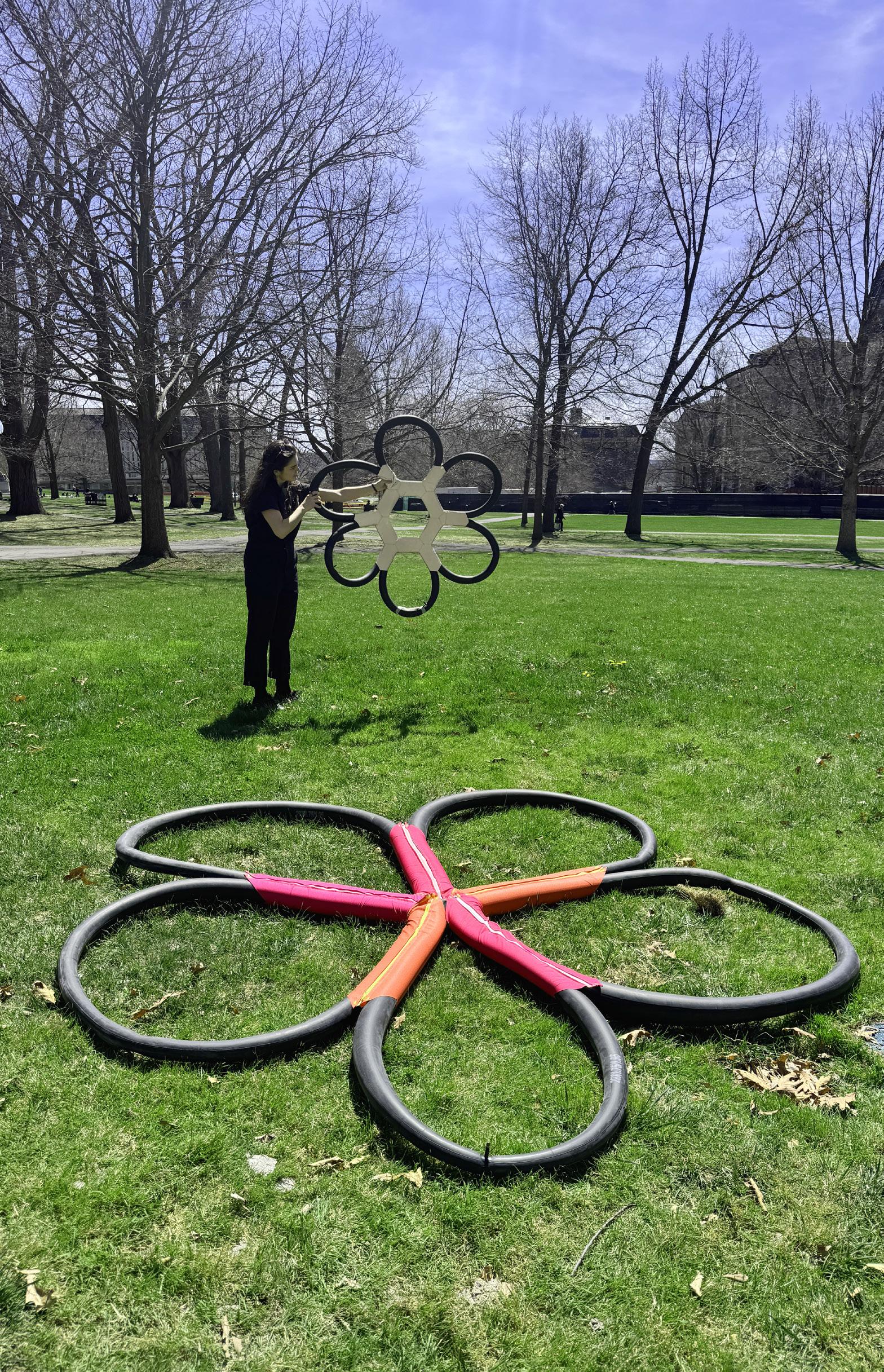

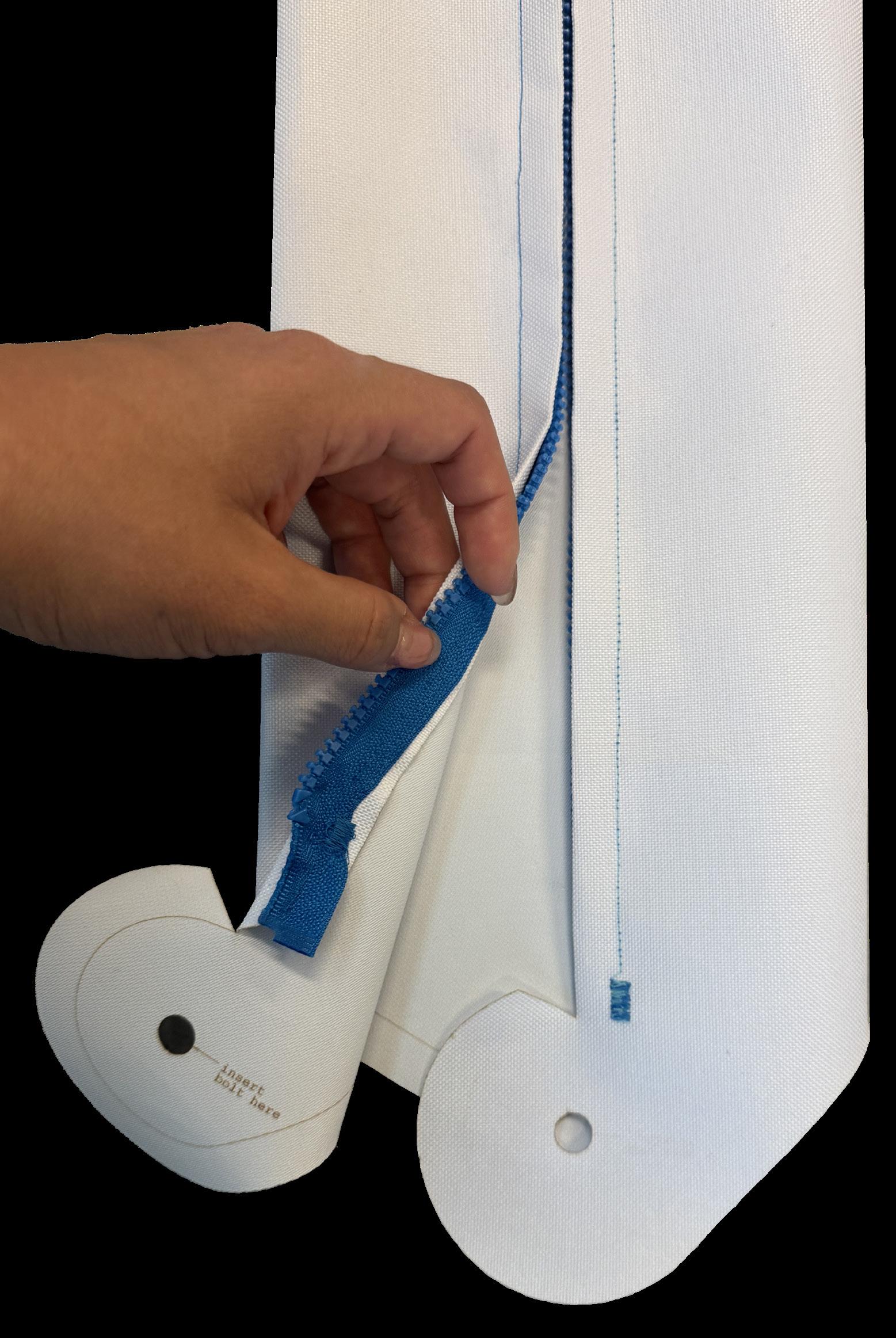
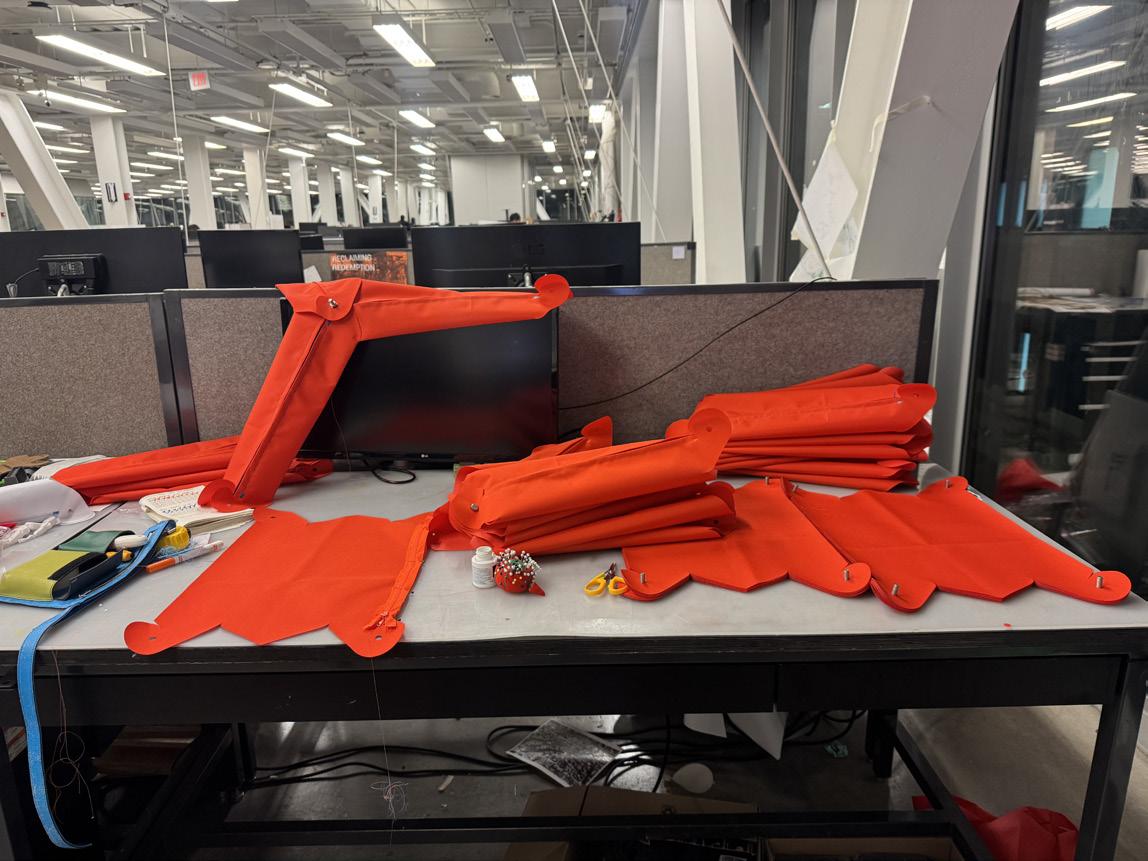
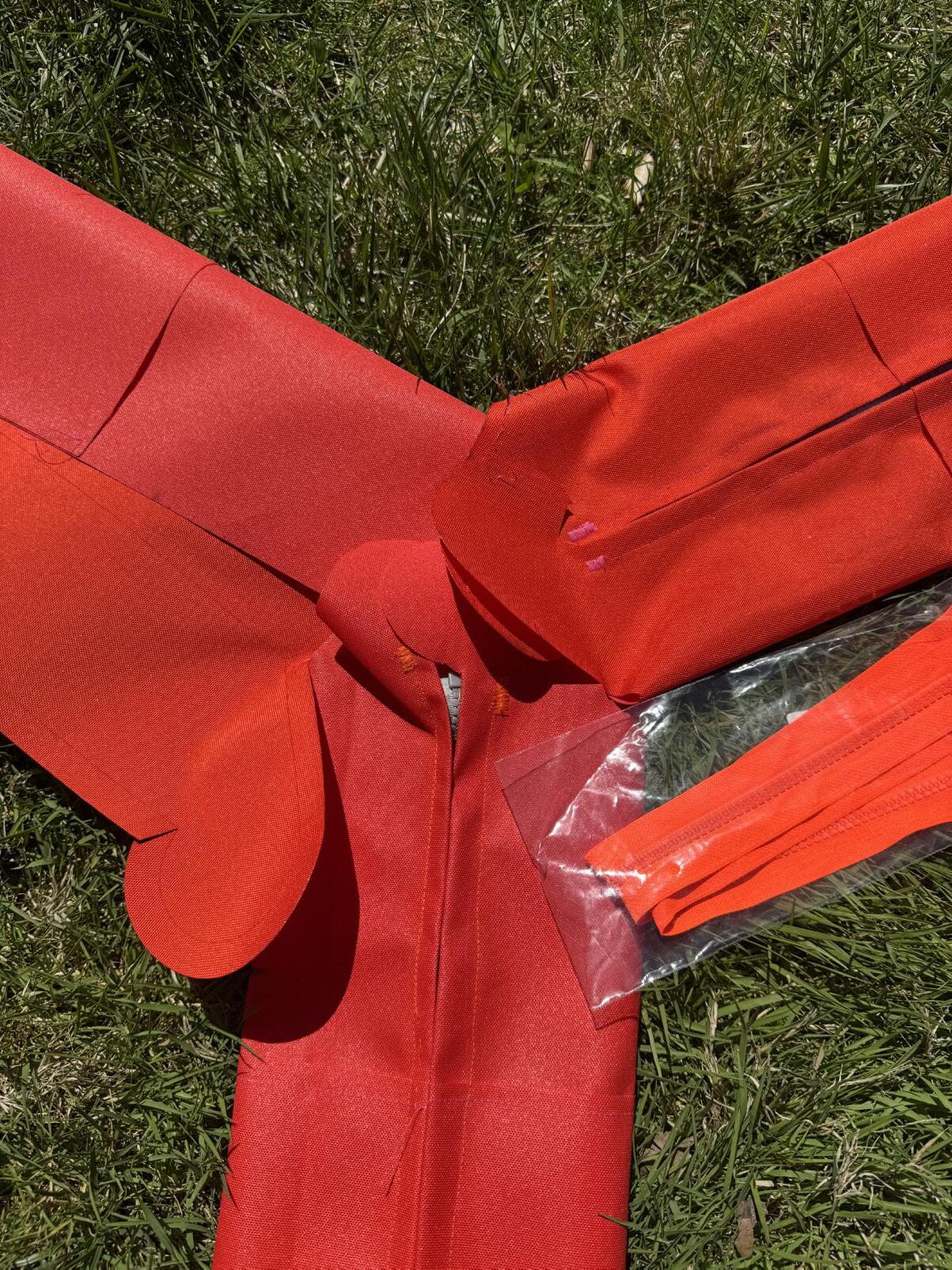


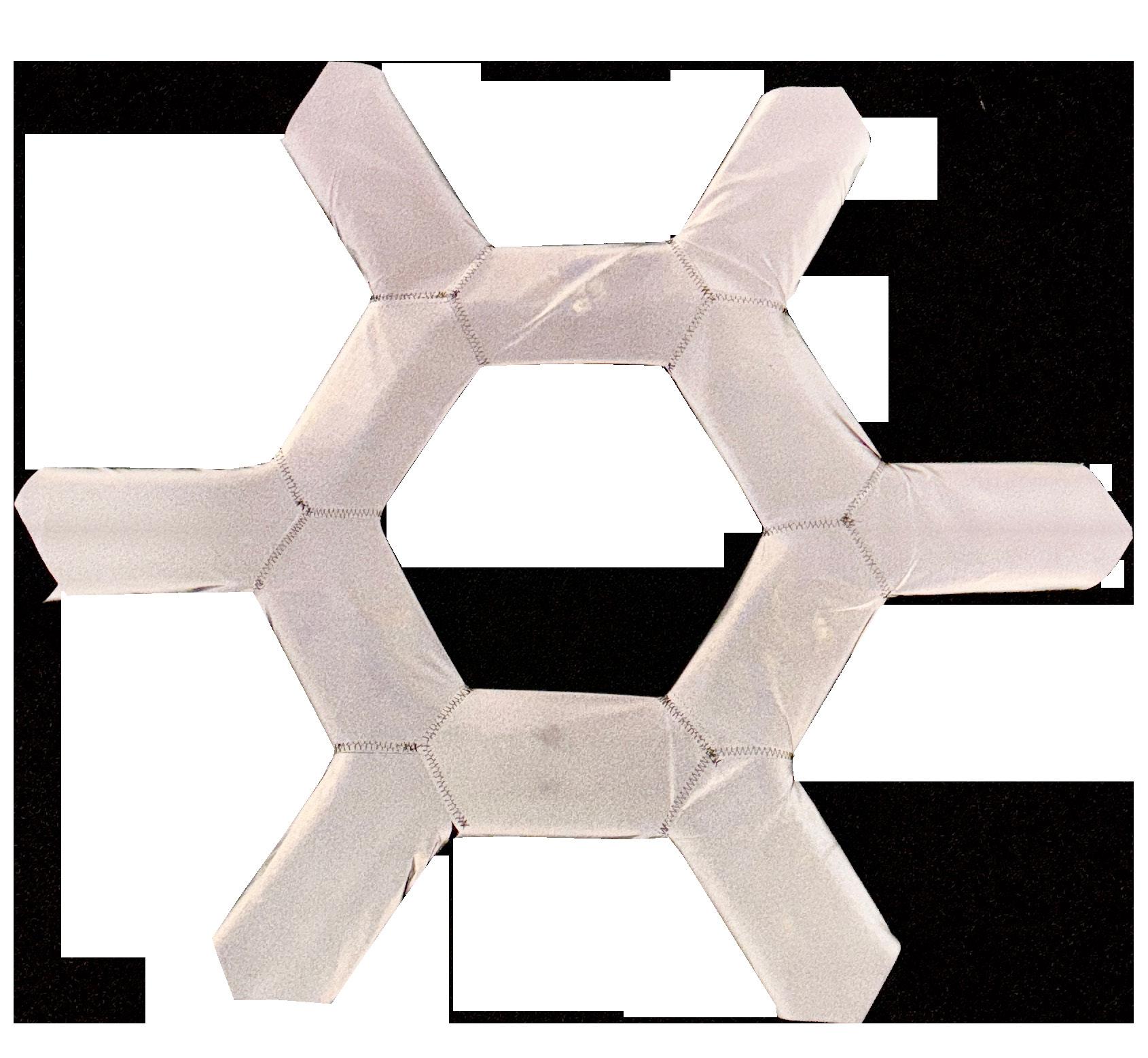


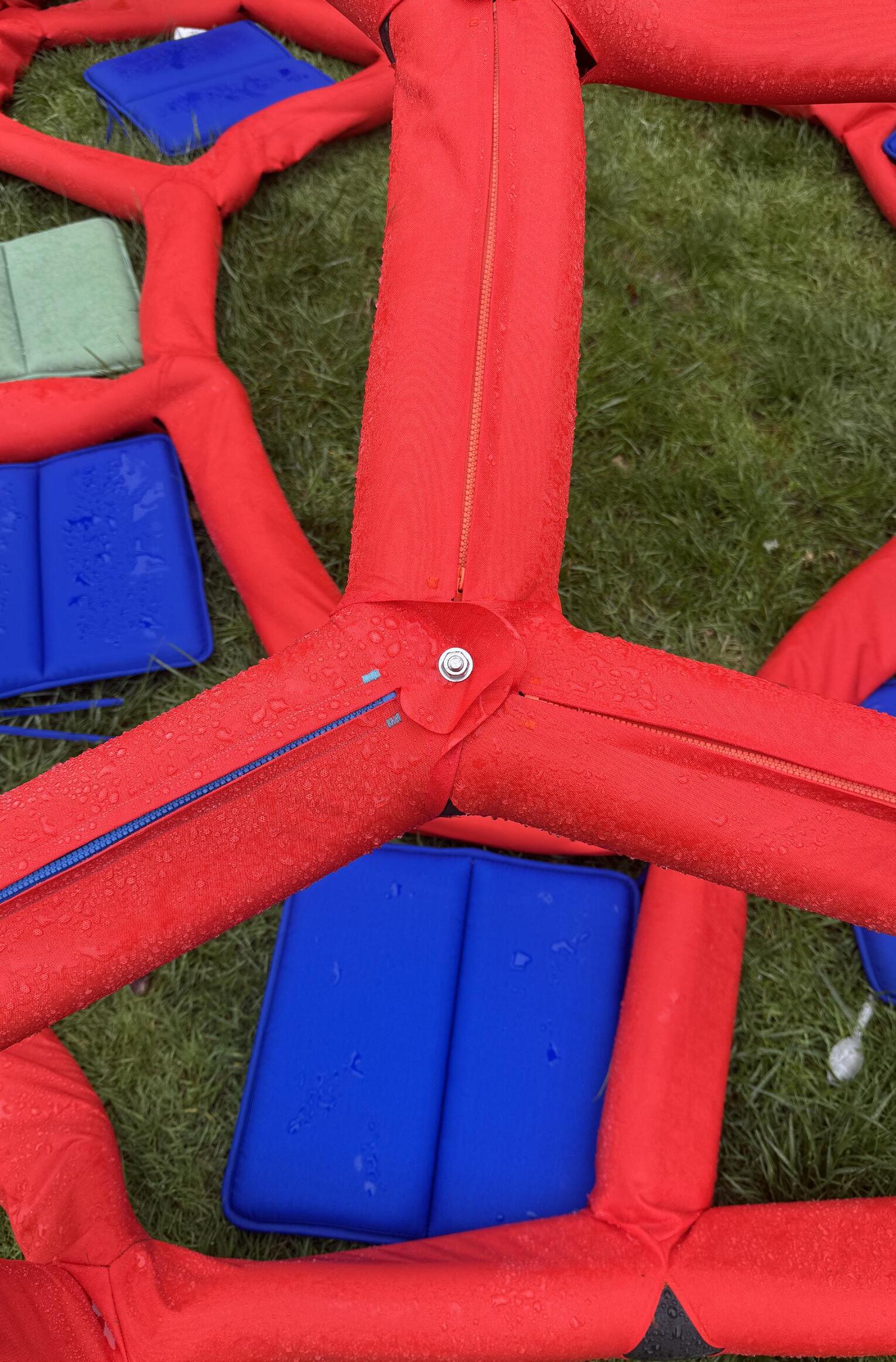
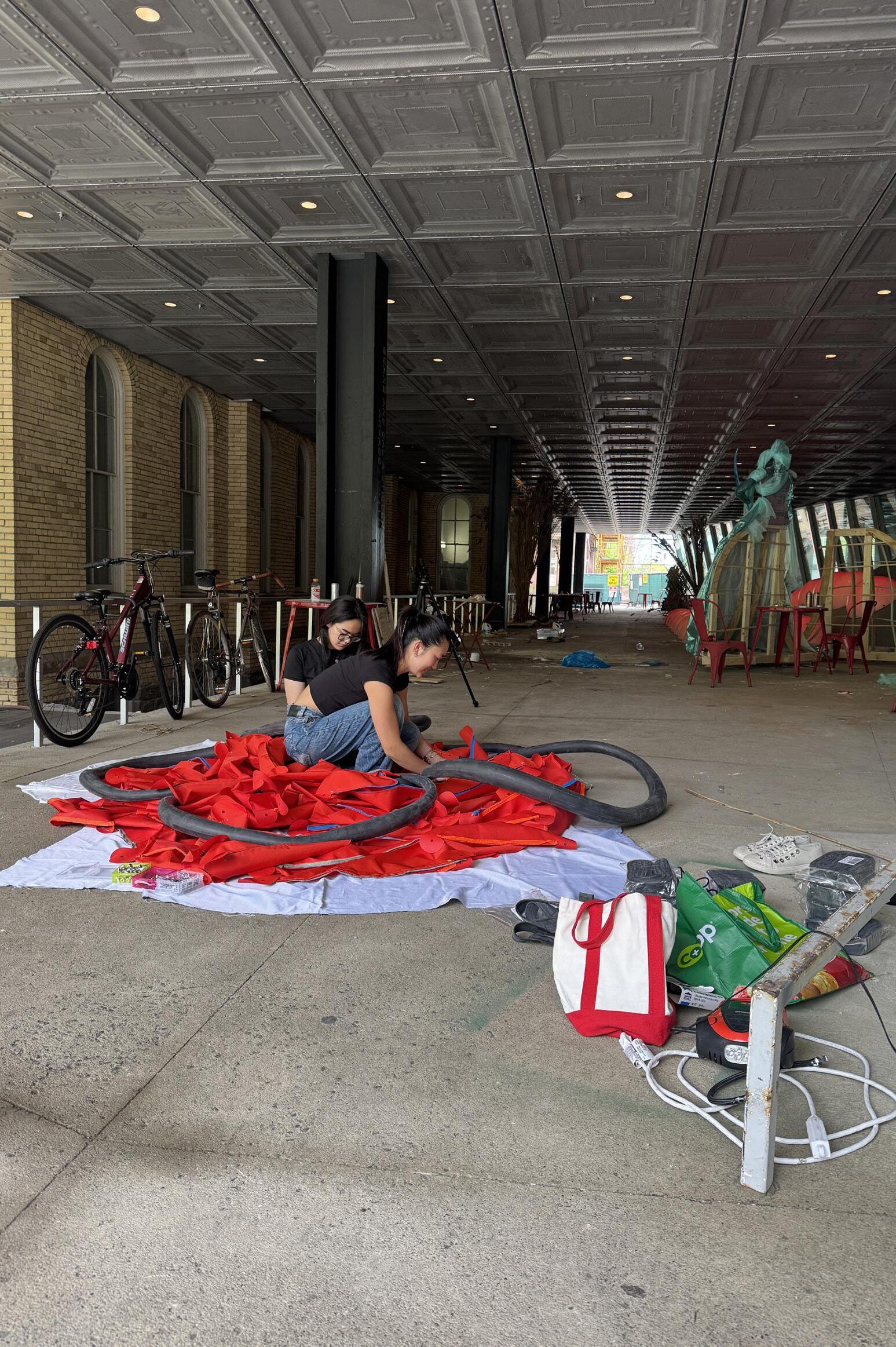
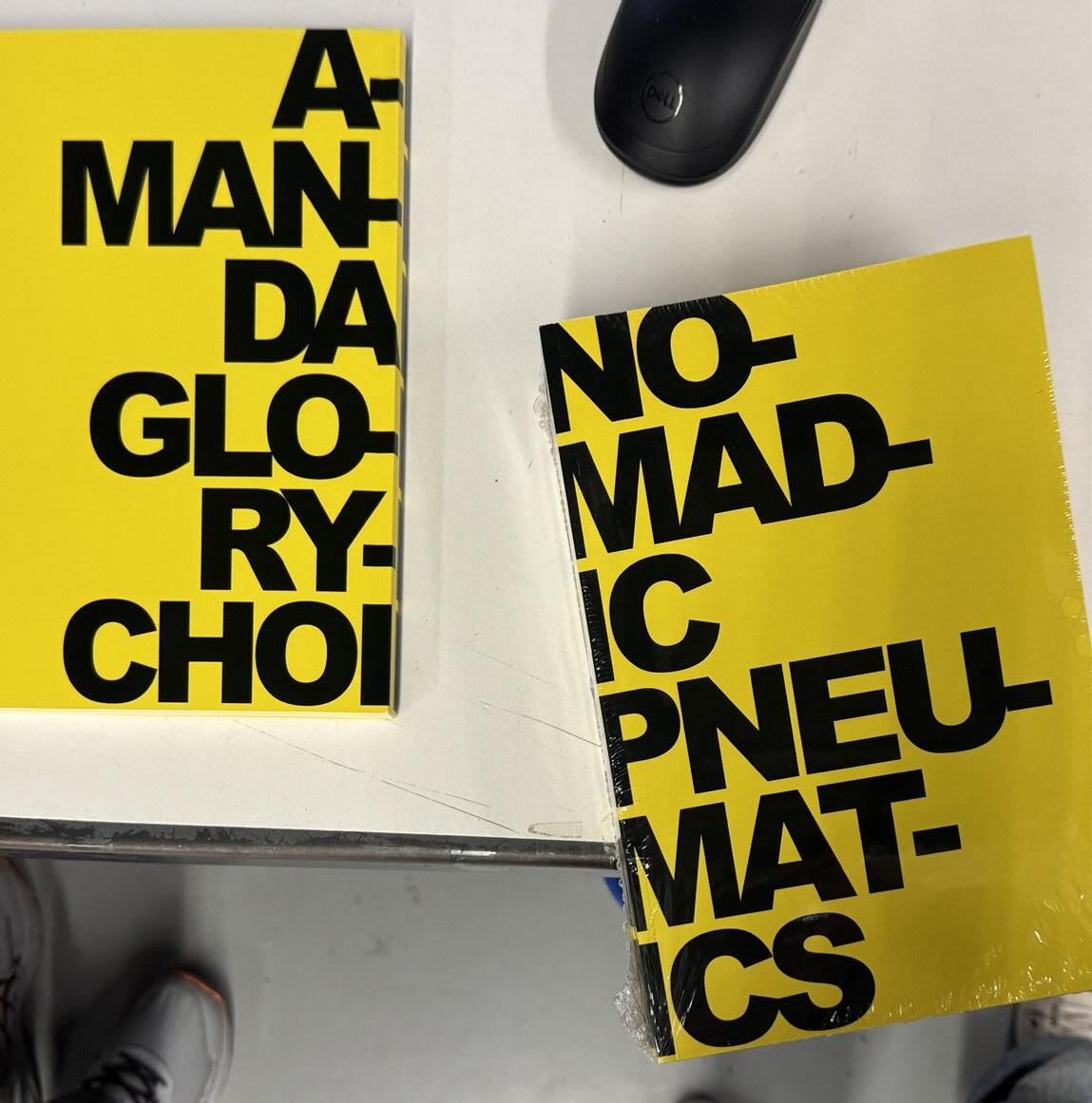

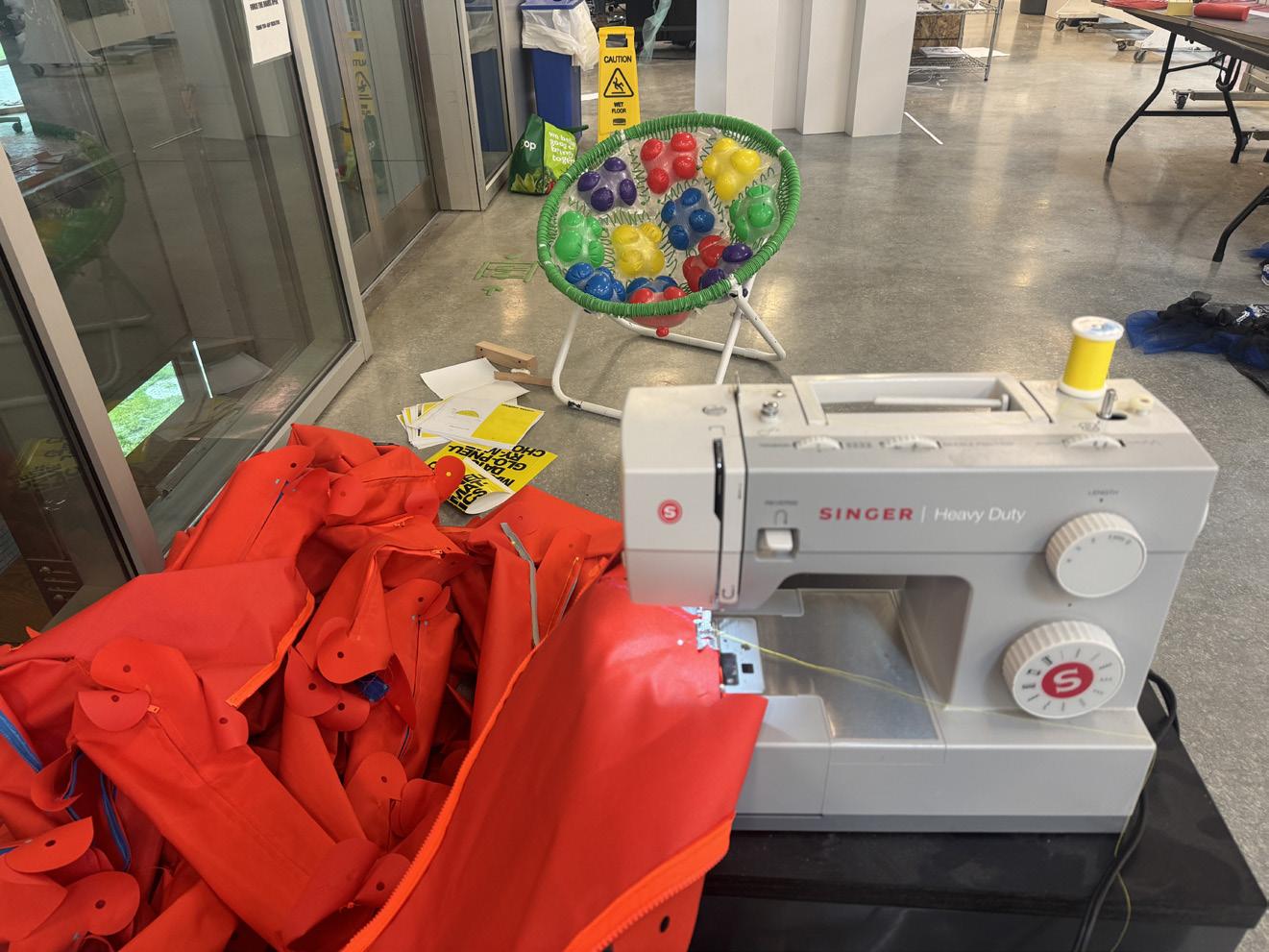


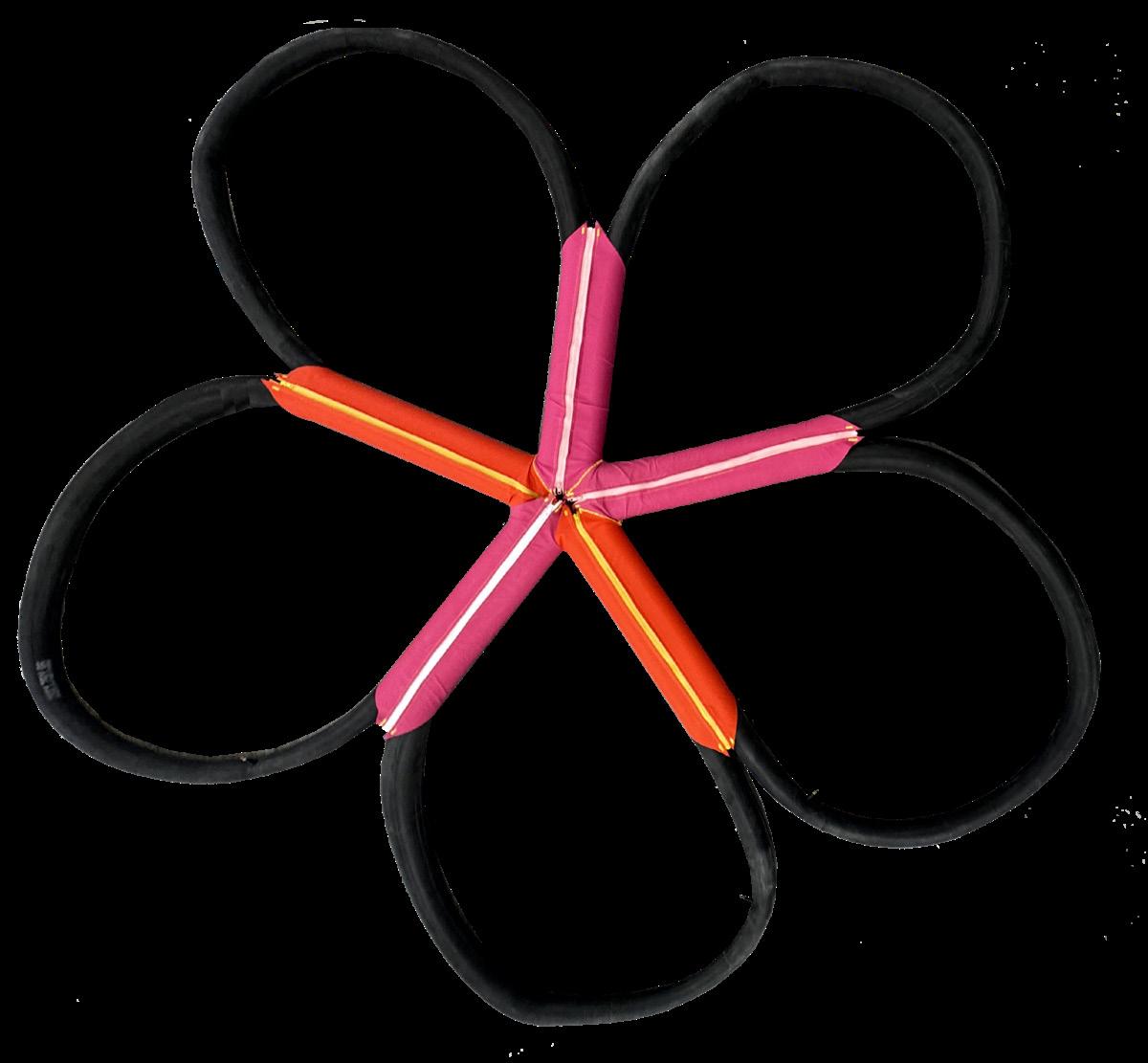
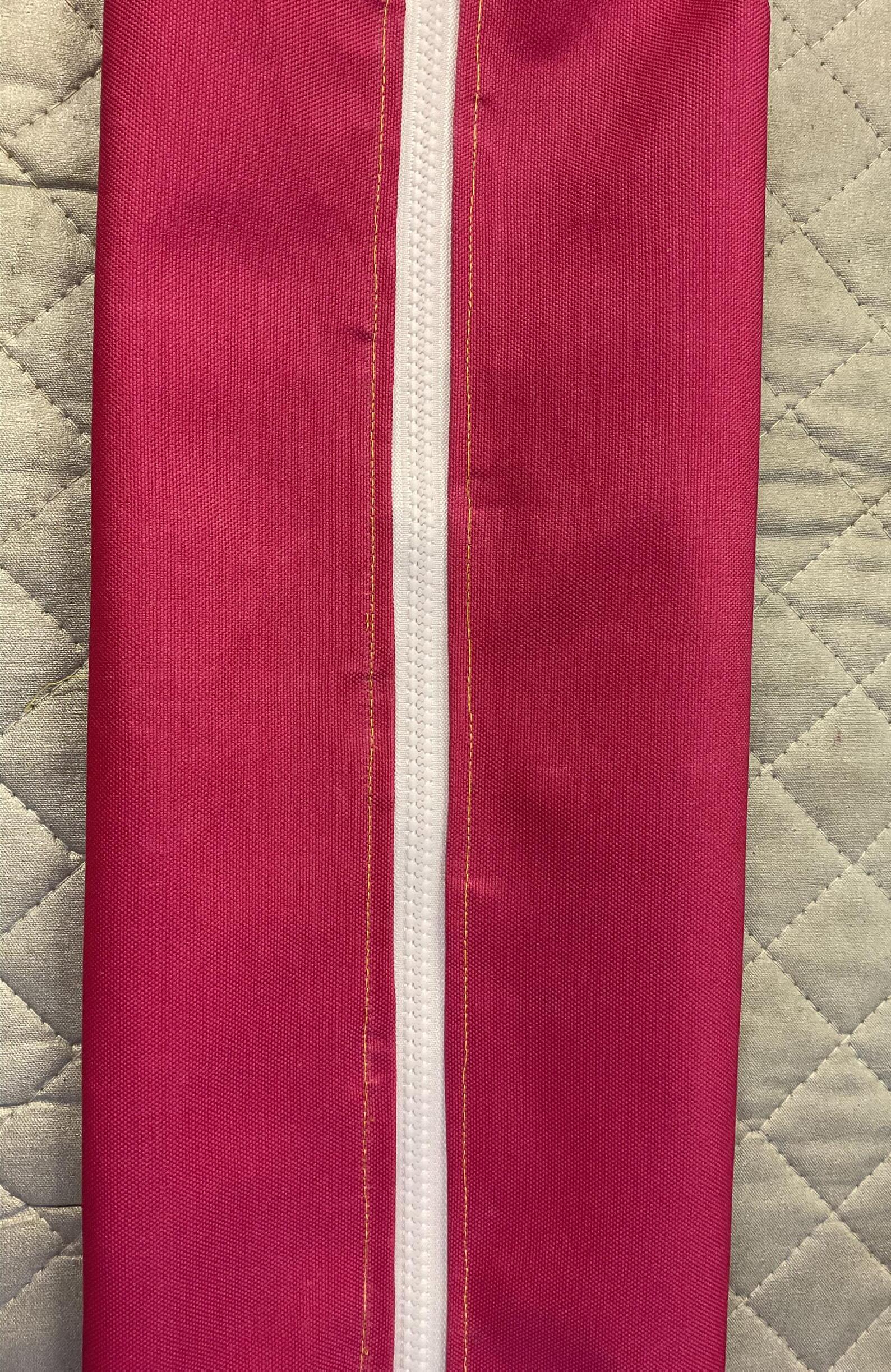
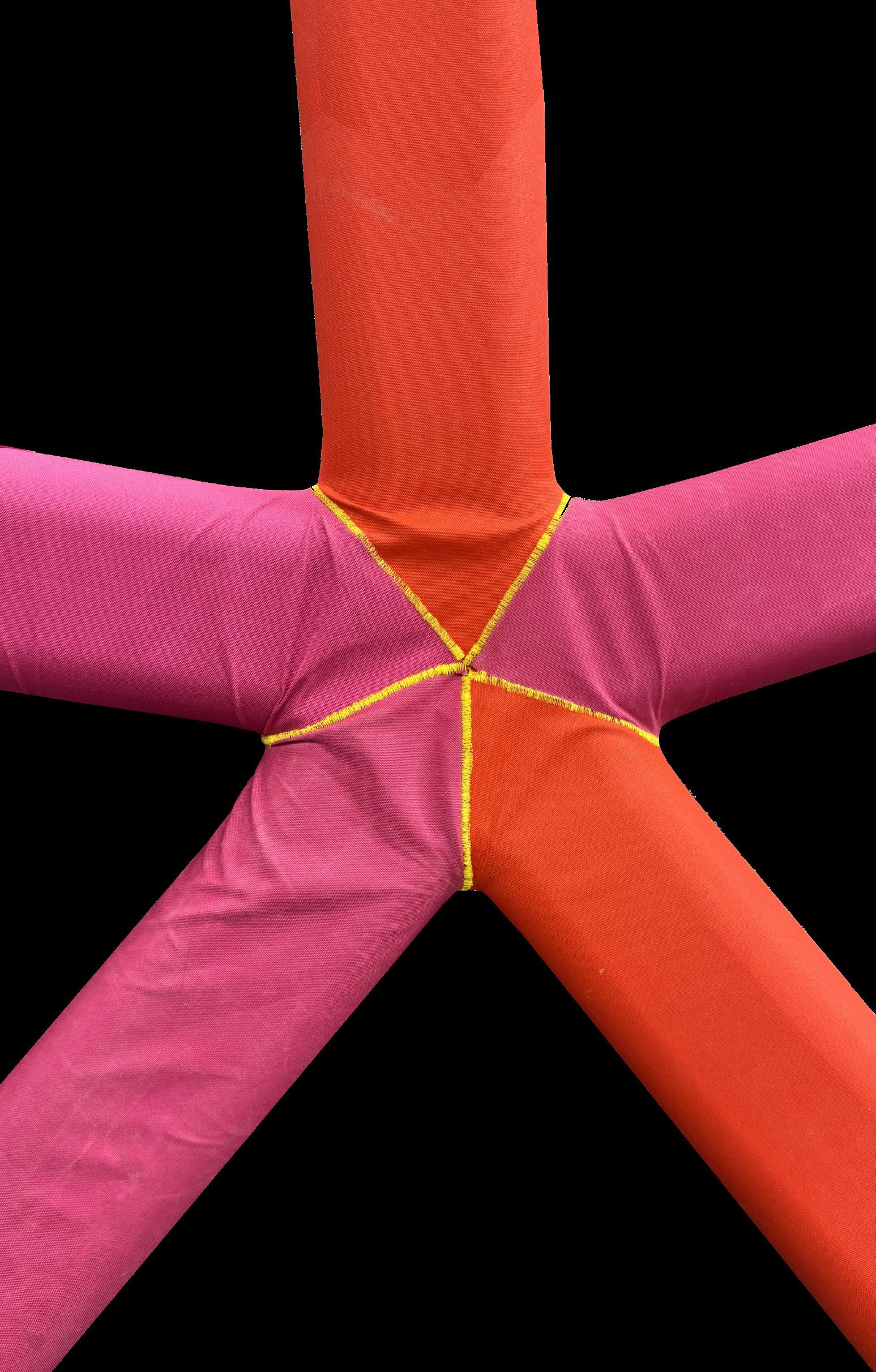





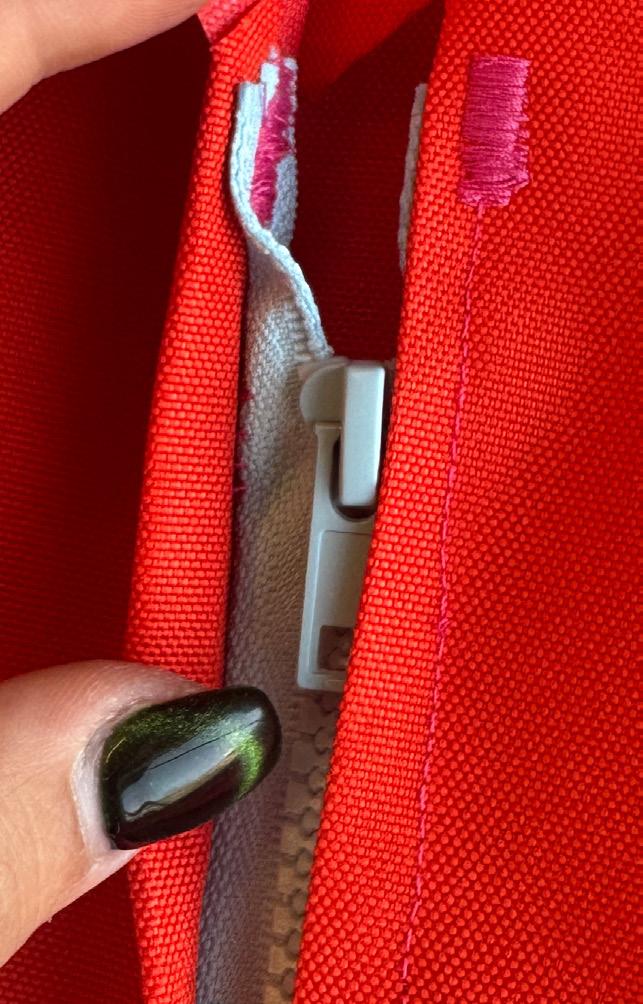


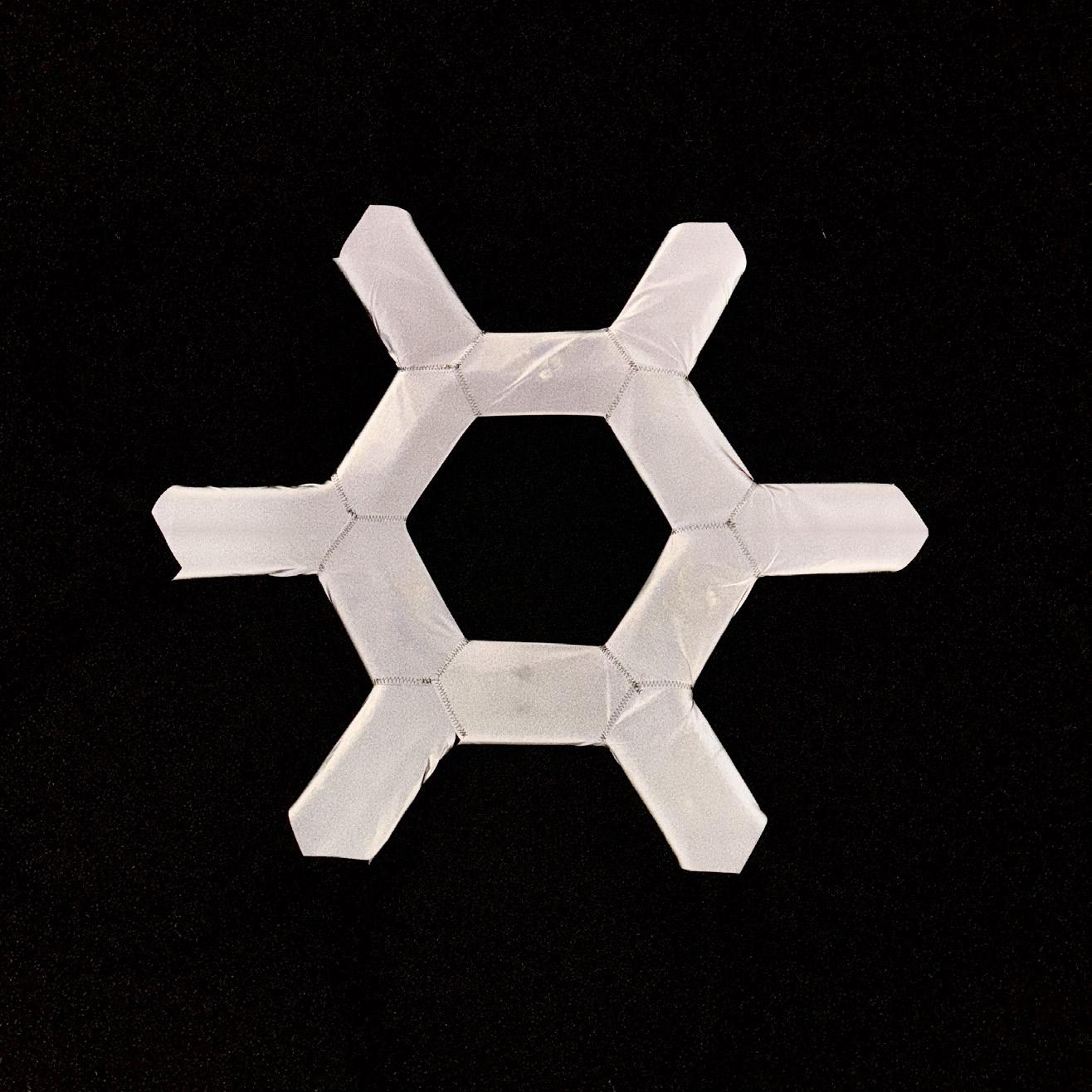
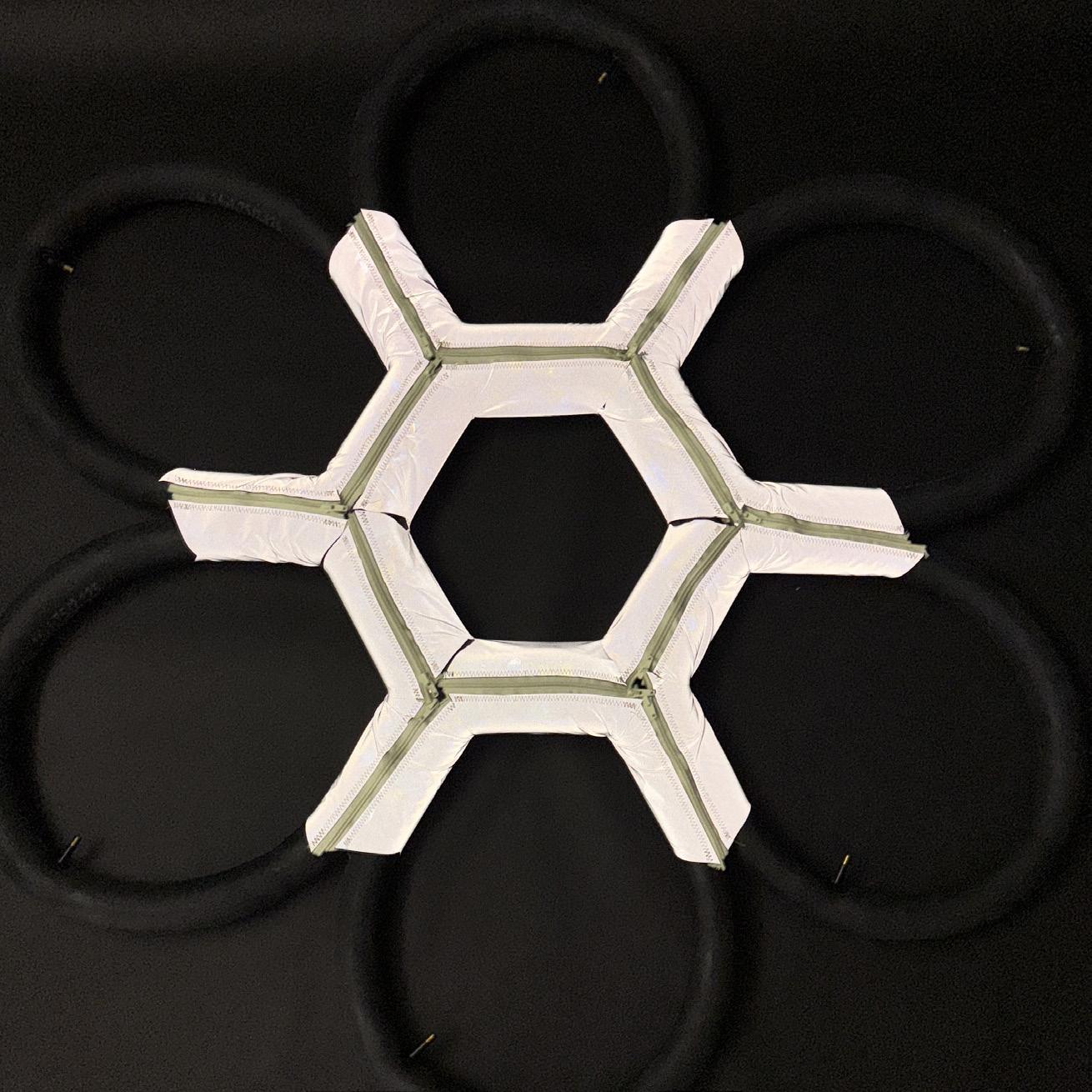


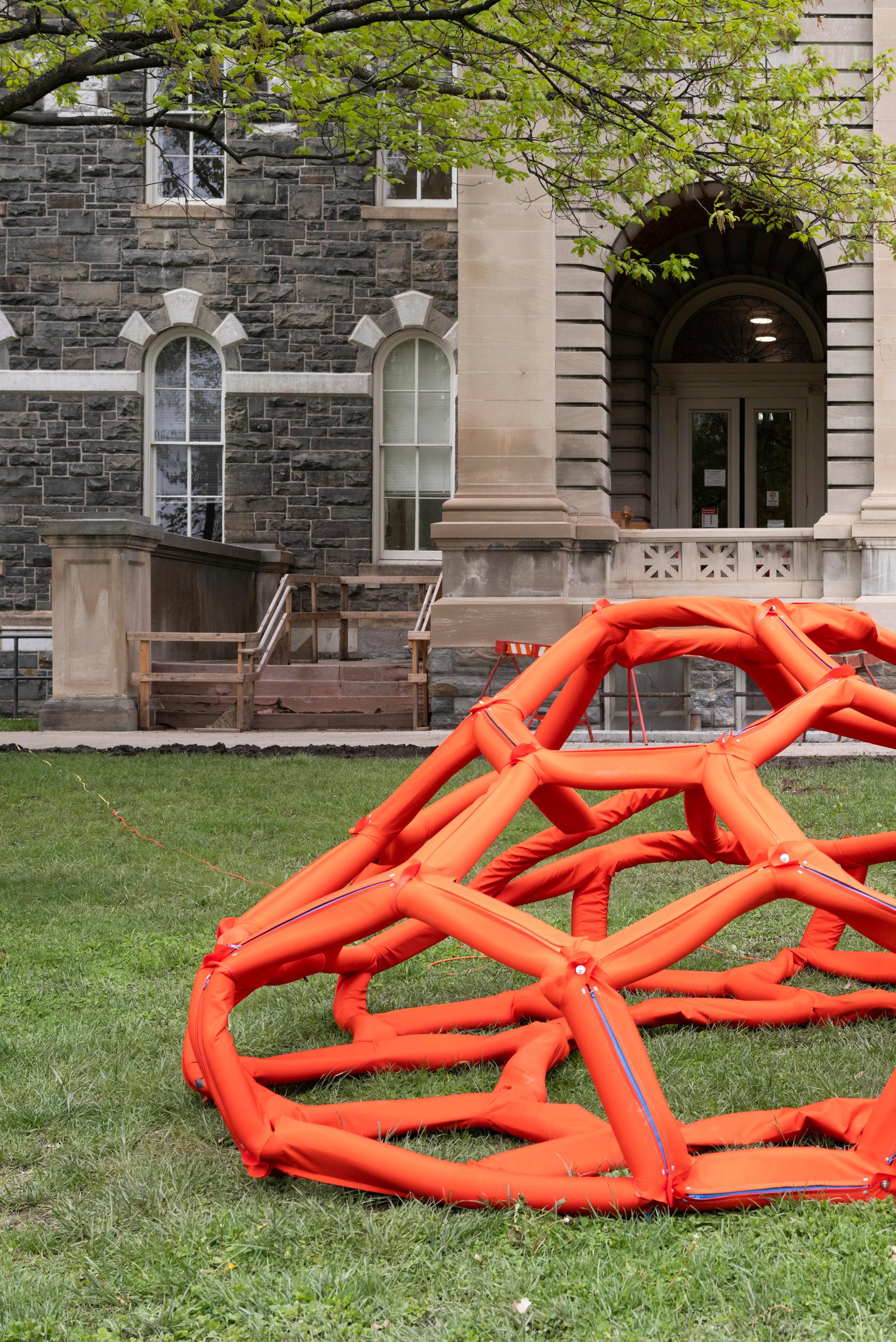
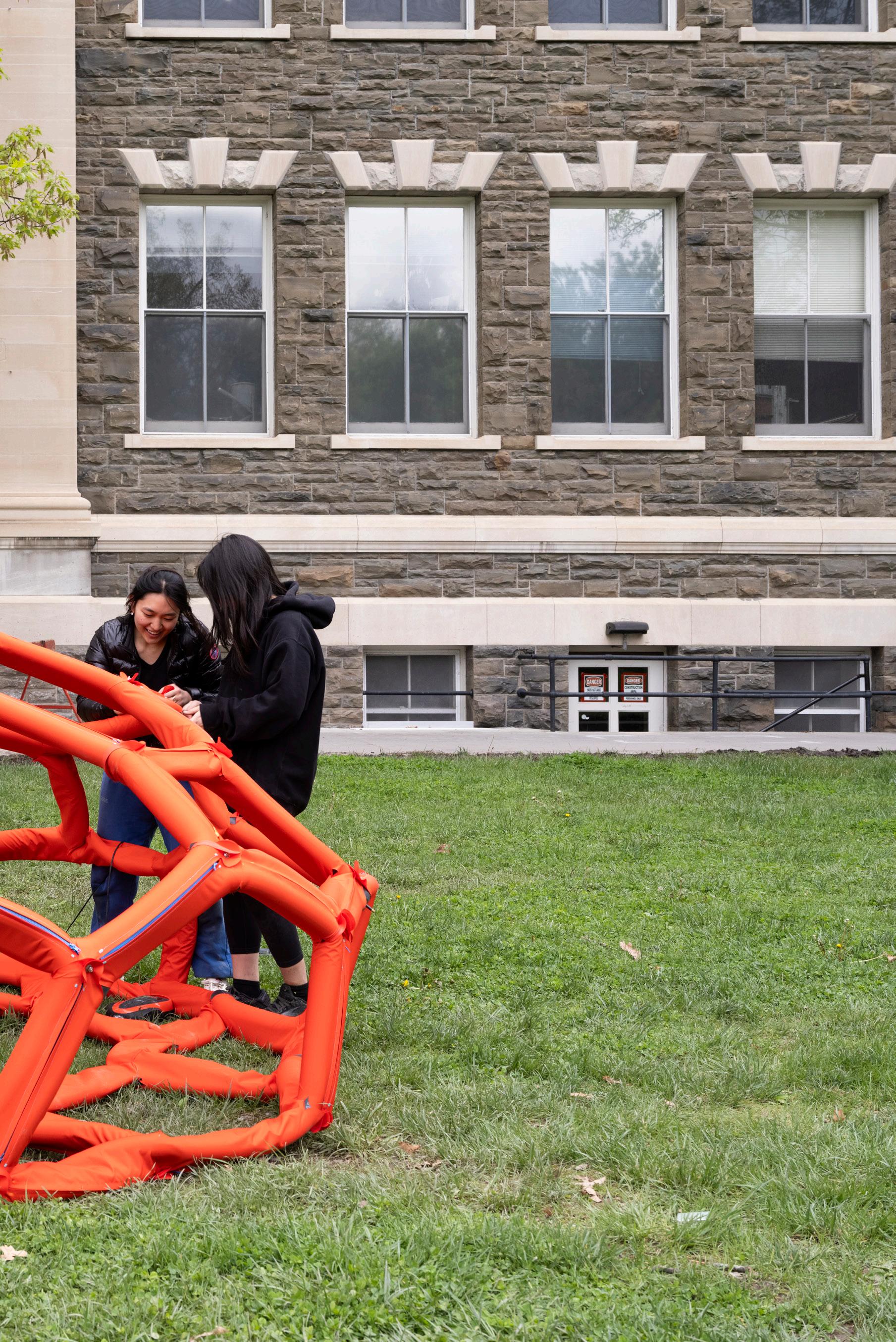
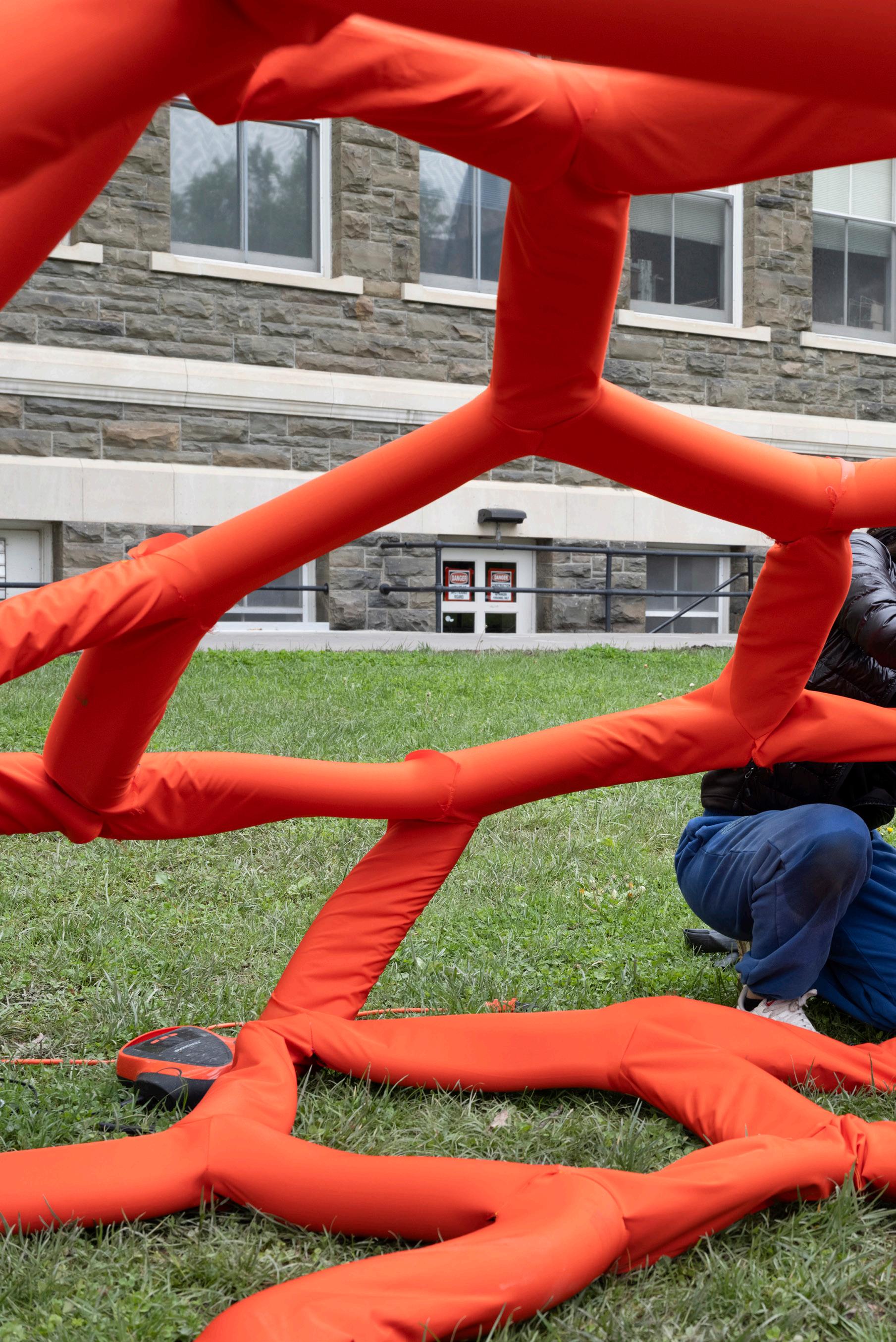



credits-
Unless otherwise noted, all photos, diagrams, and drawings by the author.
pg 13
On Space Time Foam, installation view at HangarBicocca, Milan, 2012.
Photograph by Camilo Brau and Alessandro Coco.
© Studio Tomás Saraceno. Courtesy of Trendlan
pg 14
Yellow Heart, 1968.
Design by Haus-Rucker-Co.
Image courtesy of Architectuul.
pg 15
Architecture on Stage: Graham Stevens Image courtesy of World-Architects.
pg 17
The Hindenburg disaster, May 6, 1937. Photograph by Sam Shere.
© Associated Press.
pg 19
An aerial view of the tire graveyard, which threatens the environment and human health due to the dangerous components and durability of the material, located 160 kilometers away from the capital Kuwait City in al Salmi area, Kuwait, in August 2021.
Photograph by Anadolu Agency / Getty Images
© BuzzFeed News.
pg 20
Cushicle and Suitaloon conceptual design, 1960s.
Design by Michael Webb (Archigram). Image courtesy of Archigram Archive
pg 22
The Threefold Nature of Man, chart by Clarence Larkin.
Image courtesy of Blue Letter Bible.
pg 24
Fuji Group Pavilion, Expo ‘70, Osaka, 1970.
Design by Yutaka Murata and Kawaguchi & Engineers.
Image courtesy of Kawa Structural Design.
pg 26
International Terminal at Waterloo Station, London, 1993.
Design by Nicholas Grimshaw.
Photograph by Jo Reid & John Peck. Image courtesy of The Guardian.
pg 35
Airline Safety Card Collection. Image courtesy of the World Airline Historical Society.
pg 36
10-Person Liferaft ZMEC TO PA Xtrem.
Image courtesy of De Wolf Maritime Safety.
pg 38
Low-Pressure Rapid Response Inflatable Shelter. Image courtesy of i2k Defense.
pg 41
100-Ton Inflatable Lifting Cushions.
Image courtesy of Buitink Technology.
pg 42-43
Screenshots from Giant 3ft Balloon Pop (in Slow Motion)
Video by Slow Mo Lab.
YouTube, uploaded Mar 7, 2015
pg 45
Dome Over Manhattan, conceptual rendering, 1960s.
Image by Buckminster Fuller Institute.
Reproduced via The New York Times, November 2016.
pg 47
Buckminster Fuller in front of a geodesic dome, date unknown.
Photograph by Bettmann Archive. Courtesy of Fine Art America.
pg 48
Crane lifting steel beams at a construction site (AIgenerated).
Image © Adobe Stock.
pg 49
Graham Stevens, Atmosfield, St. Katharine Dock, London, 1968.
© ADAGP, Paris, 2021.
pg 56
Changing a flat tire.
Photograph by Sergiy Zavgorodny.
© Getty Images.
pg 76,78-81,83
“Visions of Utopia” exhibition, Milstein Dome, Ithaca, NY, 2024.
Inflatable Bubble by Amanda Choi, Jack Mieszkalski, and Raihaan Bose
Photographs by Anson Wigner. Courtesy of the artists and the photographer.
pg 102
PAO WIN 13x5.00-6 Inner Tube Replacement. Product image from Amazon.com.
© PAO WIN, via Amazon.
pg 102
CalPalmy 20” x 2.125” Bike Inner Tube with Schrader Valve. Product image from Amazon.com.
© CalPalmy, via Amazon.
pg 110-111
Geometry and symmetry in nature and architecture, based on studies by Berlage and Frei Otto.
From The Fuller’s Heritage: Organic Models and Artificial Microcosm in 20th Century Domes. Available on ResearchGate.
pg 112
Frei Otto bubble form studies
Figure from Frei Otto: Light Structures Inspired by Nature, in Architecture Inspired by Nature, edited by M.R. Cervera Sardá et al.
© Springer Nature Switzerland AG, 2023.
pg 186-187, 270-271
Final Review inflatable dome on the Arts Quad, Cornell University, 2025.
Photographs by Anson Wigner. Courtesy of the photographer.
pg 188-189
Final Review inflatable dome on the Arts Quad, Cornell University, 2025.
Photographs by Manu Nores. Courtesy of the photographer.
pg 196-199
Drone view of the inflatable dome on the Arts Quad, Cornell University, 2025.
Photographs by HP Park. Courtesy of the photographer.
pg 266-269
Assembly of dome on the Arts Quad, Cornell University, 2025.
Photographs by Anson Wigner. Courtesy of the photographer.
bibliography-
Andrić, Davor. “Contemporary Pneumatic Structures in Architecture: Critical Review and Analysis.” Prostor: Scholarly Journal of Architecture and Urban Planning 28, no. 1(59) (2020): 142–153. https://doi.org/10.31522/p.28.1(59).9.
Bieber, Susanneh. “Atmospheric Pressures: Victor Lundy’s AEC Pavilion and the Sociopolitical Climates of Inflatable Architecture.” Journal of Architectural Education 73, no. 1 (2019): 32–45. https://doi.org/10.1080/10464883.2019. 1688219.
Chi, Jung Yun, and Ruy Marcelo de Oliveira Pauletti. “Design and Analysis of Pneumatic Structures.” Paper presented at the IASS-SLTE 2008: International Symposium on Lightweight Structures in Civil Engineering and Architecture, Universidad Central de Venezuela, Caracas, 2008. https://www.researchgate.net/publication/326673085.
Craven, Wesley Frank, and James Lea Cate, eds. The Army Air Forces in World War II. Vol. 1, Plans and Early Operations, January 1939 to August 1942. Chicago: University of Chicago Press, 1948. Reprint, Washington, D.C.: Office of Air Force History, 1983. https://www.afhso.af.mil/Portals/86/documents/Operations/Volume1.pdf.
Dent, Roger Nicholas. Principles of Pneumatic Architecture. London: Architectural Press, 1971.
Eryılmaz, Emine Burcu. Architecture as a Discursive Discipline: Inflatable Spaces of Radical Avant-Gardes. Master’s thesis, Middle East Technical University, 2019. https://www.researchgate.net/publication/354162371.
Francis, Sharon. Bubbletecture: Inflatable Architecture and Design. New York: Van Nostrand Reinhold, 1973.
Herzog, Thomas. Pneumatic Structures: A Handbook of Inflatable Architecture. Contributions by Gernot Minke and Hans Eggers. London: Thames and Hudson, 1976.
Hebel, Dirk E., Marta H. Wisniewska, and Felix Heisel. “Constructing Waste: Investigating an Alternative Resource for Future Cities.” Building from Waste, November 2015. https://www.researchgate.net/publication/295912128.
Ishii, Kazuo, ed. Membrane Designs and Structures in the World. Tokyo: Shinkenchiku-Sha, 2001.
Krauel, Jacobo. Inflatable Art, Architecture & Design. Edited by Naomi Ferguson. Introduction by Imma Muñinos and Jacobo Krauel. Barcelona: Links International, 2006.
McQuaid, Matilda, and Phil Patton. The Inflatable Moment: Pneumatics and Protest in ’68. New York: Princeton Architectural Press, 1998.
Meissner, Irene, and Eberhard Möller. Frei Otto: Forschen, Bauen, Inspirieren = A Life of Research, Construction and Inspiration. Berlin: Jovis Verlag, 2005.
Migayrou, Frédéric, and Valentina Moimas, eds. Aerodream: Architecture, Art, Design et Structures Gonflables. Paris: Éditions du Centre Pompidou, 2021.
Pauletti, Ruy Marcelo de Oliveira. “Some Issues on the Design and Analysis of Pneumatic Structures.” International Journal of Structural Engineering 1, nos. 3–4 (2010): 217–240. https://doi.org/10.1504/IJSTRUCTE.2010.033480.
Rudolph, Rebecca. NOMADIC:PNEUMATIC – Buildings that Moves: An Atlas of Nomadic Devices as a New Cultural Institution to Mobilize Culture. Master’s thesis, Umeå School of Architecture, Umeå University, 2021. https:// digitalcommons.unl.edu/cgi/viewcontent.cgi?article=1003&context=jccemafac.
Thangavelu, Madhu, and Claire Stevlingson. “HALIE – Hybrid Approach to Lunar Inflatables and Erectables (HALIE) for Initial Operational Capability.” Paper presented at the AIAA ASCEND 2023 Conference, December 2023. https://www. researchgate.net/publication/376682032.
Topham, Sean. Blowup: Inflatable Art, Architecture, and Design. Munich: Prestel, 2002.
